The state service is provided by the Ministry of Foreign Affairs and foreign institutions of the Republic of Kazakhstan.
Language
One of the basic human needs and one of the major communication tools is language.
The state language of the Republic of Kazakhstan is Kazakh. The state language is language used in public management, legislation, legal proceedings and paperwork management operating in all the field of public relations throughout the country. Our country is a multinational state and language policy in Kazakhstan has always been aimed at preserving variety and peaceful coexistence of various languages and their natives on the territory of the country. Each language in the country is a national heritage.
Training at schools is conducted in Kazakh, Russian and English. This boosts communicative skills among pupils. Moreover, training in three languages will introduce children to culture and traditions of other nations.
Each citizen of the Republic of Kazakhstan has a right for free choice of language for communication, training and creativity. The government creates conditions for learning and developing of languages of the people of Kazakhstan. Impairment of rights related to language use is prohibited in the Republic of Kazakhstan.
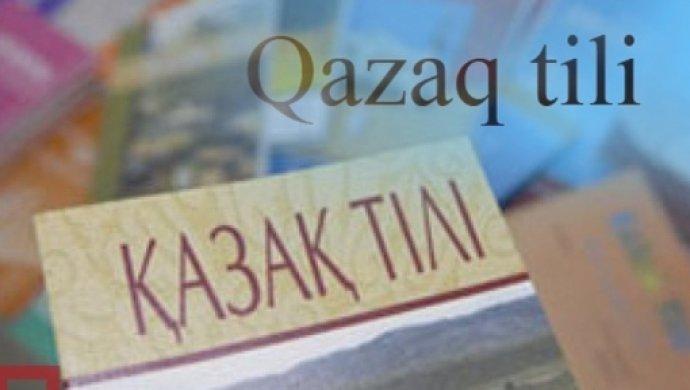
"Photo taken from open sources"
Traditions
Today, the Republic of Kazakhstan is a developed and flourishing country with up-to-date constitution and legal provisions. Along with the laws, the Kazakh nation honours and observes its traditions. The traditions of Kazakh people trace their origin back to the customs of nomadic tribes.
One of the fundamental traditions of Kazakh people, which became a national character trait, is hospitality. Hospitality in Kazakh society is a primary duty and entails reception of guests with open heart and welcoming embrace. A guest is the most important and desirable person at a house. It is customary to provide a guest with the most delicious food and do everything to make a guest feel in safety and comfort.
“Konakasy” is a hospitality tradition related to food for guests.
“Bata beru is a blessing given when a guest is leaving, especially for a long journey. A blessing is given by elderly people. Usually, the tradition is expressed poetically.
“Bel koterer” is food for the elderly guests, which symbolizes care and respect towards the elderly.
“Konakkade” is a tradition when a host asks a guest to sign a song or play a musical instrument.
“Yerulik” is a celebration devoted to new settlers, when assistance is provided to them and acquaintance with other settlers takes place to ensure adaptation to local life.
“Korimdik” is a gift given by a guest seeing a young married woman or newborn baby for the first time.
“Suinshi” is a custom according to which a person bringing good news to a house gets a valuable gift from hosts.
“Shashu” is a custom to shower guests with candies and money. Usually, children happily gather candies. From the dawn of time, the Kazakh people believed that candies gathered during “shashu” bring luck and prosperity to a family. Shashu is common at weddings, marriage proposals and other similar events.
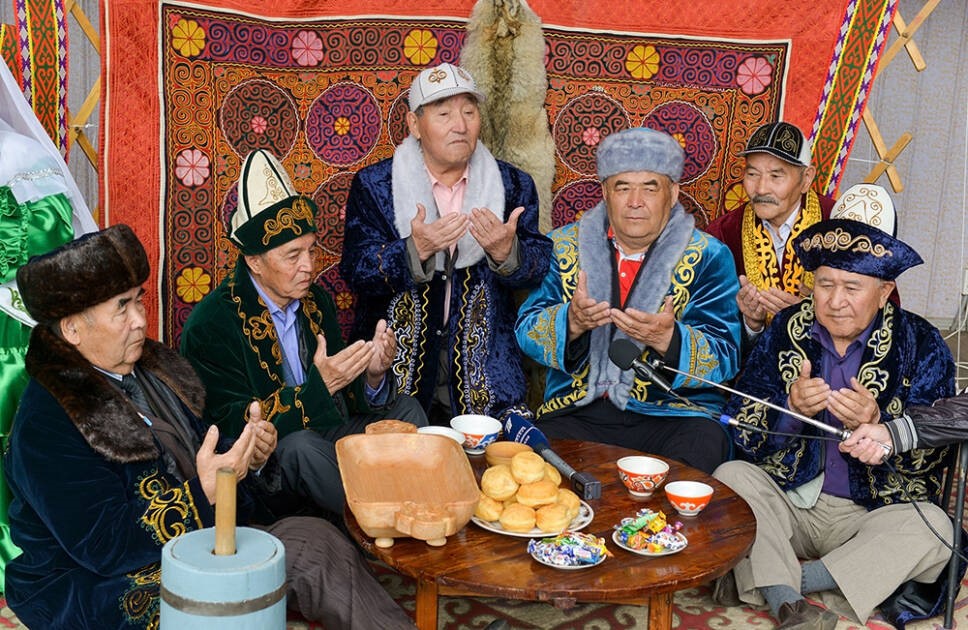
"Photo taken from open sources"
The Kazakh people take good care of their traditions and skilfully follow them today. While small children expertly use computers and speak English, their grandmothers still wear national costumes and jewelry, so even despite a modern-day way of life and widespread digitalization, great mutual understanding and love prevail in such families. Customarily, a child from infancy is taught modesty and decency when communicating with adults.
One of the most significant events for the Kazakh people is wedding (“uilenu toy”). At least once in your life, you need to visit such a tremendous and significant event as a Kazakh wedding, where you can learn more about the wonderful traditions of Kazakhs.
Prior to the wedding, a marriage proposal (“kudalyk”, “kuda tusu”) should be made. Prospective relatives (groom`s relatives) visit a house of relatives from the side of bride. The procedure is deemed as an official acquaintance of two parties in a bride's house and is mandatory as the next wedding stages are discussed there. A bride's relatives provide guests with lavish treats and law a festive dastarkhan (table). A bride`s father gets gifts from a groom's relatives, which represent a downpayment. According to the Kazakh wedding tradition, after a marriage proposal a groom's side should pay “kalyn mal” (ransom for the bride). Then a bride puts in earrings (“syrga salu”), which represents a final agreement between the parties. The ceremony is performed by a groom's mother. Also, all bride`s relatives receive various gifts in the form of expensive fabrics or sets of gold and this wedding ceremony is called “kiit”.
Then a bride goes to a groom's house. It is a celebration, which precedes an official wedding and is called “kyz uzatu”, i.e. farewell ceremony for a bride. At the ceremony, guests from a groom's side are a minority. At the “kyz uzatu” ceremony, a bride should walk along a long white path made of fabric (“ak zhol”), which is a symbol of an undisturbed married life. Then, a bride along with relatives is sent to a groom's house. A bride's dowry arrives at the same time. A festive ceremony of meeting a bride is called “kelin tusiru”. The main element of kelin tusiru is performance of a traditional song with instructions and wishes called “betashar”. It is a crucial tradition for introducing a bride to the public. A bride's face is covered with a white cloth, which is held on both sides by relatives.
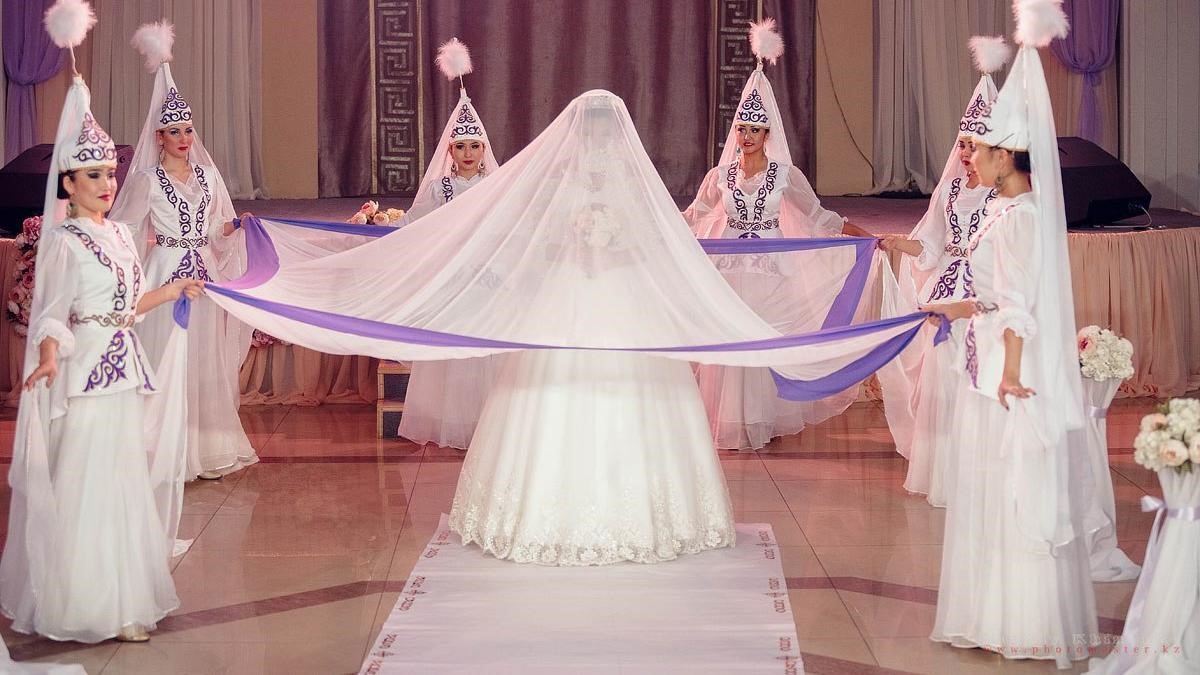
"Photo taken from open sources"
Despite a new European trends, today`s Kazakh wedding still preserves national traditions and customs. If previously wedding ceremonies took 3 days (and sometimes even more), today it can take one day. For their wedding dresses, brides usually choose white dresses. Also, such mainstream traditions as corteges, photo sessions at monuments, etc. gained popularity.
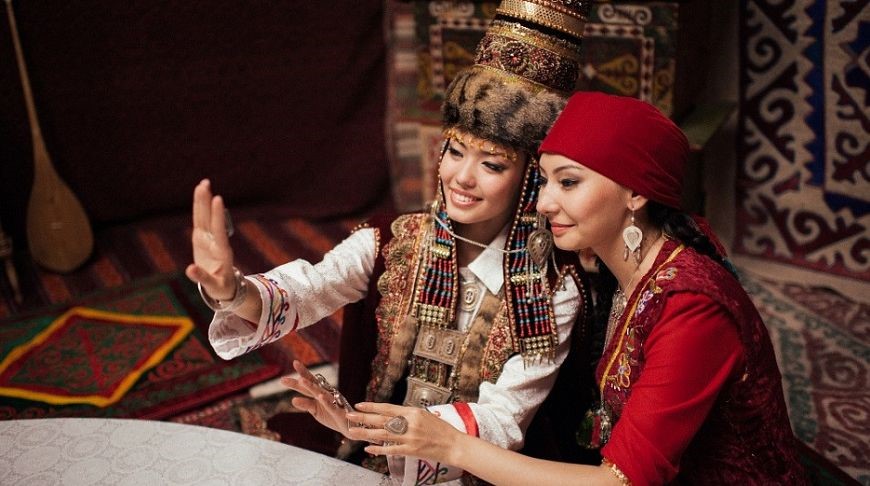
"Photo taken from open sources"
Specific attention is given to celebrations related to children. Thus, children are the greatest joy for each Kazakh family that is why there is a huge number of customs and traditions associated with their birth, growth and upbringing.
“Shildekhana” is a celebration dedicated to a birth of a child. “Esim koyu”, “at koyu”, “azan shakyru” is a custom of naming when a baby is given a name. The ceremony is entrusted to the most respected elderly members, who also bless a child.
The fortieth day of a child`s birth is celebrated in a special manner. The ceremony on this day is called “kyrkynan shygaru”. During the ceremony, a baby is bathed in water with silver coins and silver jewelry placed on the bottom. Also on this day, a child is given the first hair and nail cut.
The next custom associated with children is called “tusau kesu”. Thus, according to Kazakh traditions, on the day when a child takes first steps, fetters are cut. This is done so that in the future a baby can walk gracefully and run quickly, as well as adopting the best qualities of a person who cut the fetters. That is why only respected people and elderly, women with many children, etc. cut the fetters. A person has to cut special ropes entangling a child's legs using a knife.
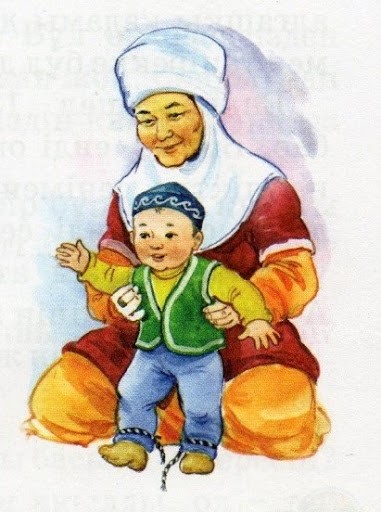
"Photo taken from open sources"
Architectural wonders of Kazakhstan
One of the main reasons why tourists visit Kazakhstan is our pristine nature, but the architectural heritage attracts a lot of attention as well.
A Yurt (traditional Kazakh portable tent-house)
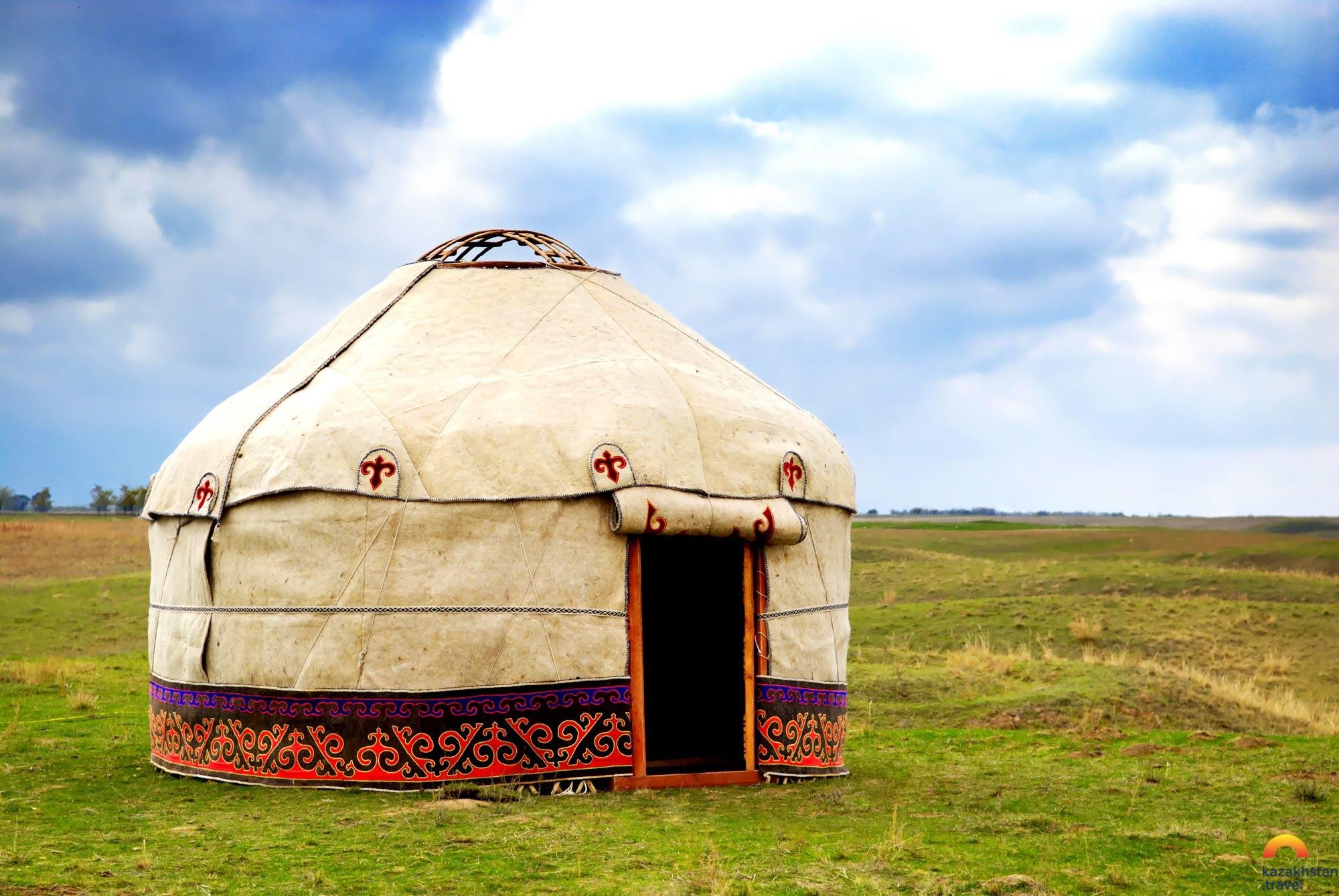
Architecture is a storehouse of rich information about the culture of certain ethnic groups. The inner construction of the yurt is the best way to tell us about the life of the Kazakh nomads. The early history of a yurt dates back to the 12th century BC, and the nomadic dwelling with a spherical dome, the so-called Kazakh yurt, was finally formed at the beginning of the 19th century. Like many years ago, a yurt today is an indispensable element in the lives of the modern descendants of nomads in Kazakhstan, Mongolia, and Kyrgyzstan. The main secret lies in its convenience, simplicity, and practicality: it is easily transportable, quickly assembled and the felt cover saves its inhabitants from rain, wind, and cold. A yurt is an inexpensive comfortable dwelling that is in no way inferior to a capital structure. The yurt is called a masterpiece of nomadic architecture.
Khan Shatyr
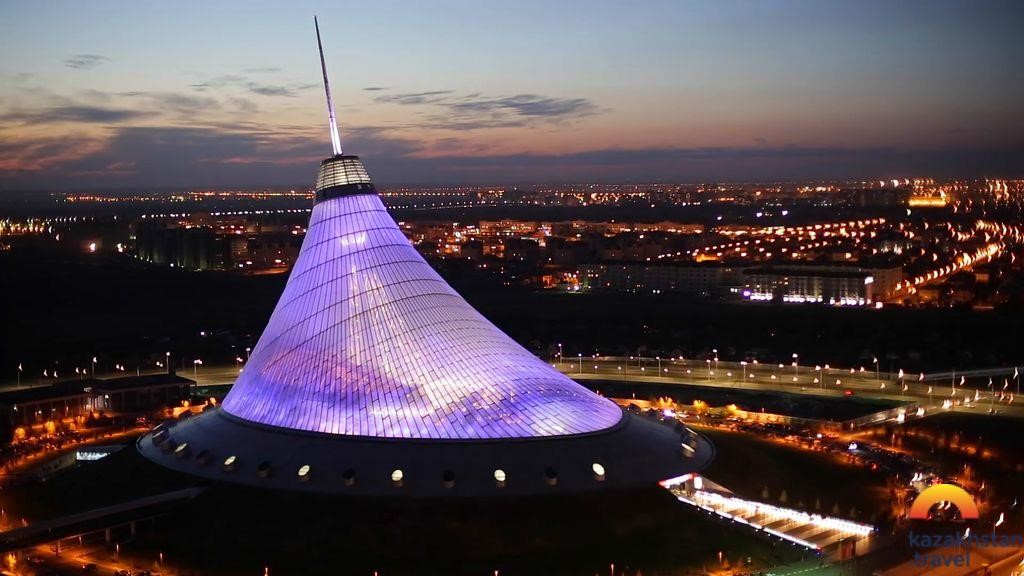
Along with other eye-catching skyscrapers and futuristic structures, Khan Shatyr is the architectural highlight of Astana, the capital of Kazakhstan. Translated from Kazakh, this name stands for “Khan of the tents”. And the building lives up to its name as it has been listed in the Guinness Book of Records as the tallest tent-like structure in the world.
Khan Shatyr is one of the largest shopping and entertainment centers in all of Central Asia. Forbes magazine has included it in the top ten world ‘eco’ buildings.
It brilliantly embodies the concept of having a piece of land with an eternal summer. The unusual 150 meter high tent is made out of unique and innovative materials that regulates a constant cozy microclimate on the inside, no matter what the weather is like outside.
Khan Shatyr is a masterpiece of modern architecture that stands out amongst the growing architectural diversity of the modern metropolis of Astana.
Mausoleums of Khoja Ahmed Yasawi and Arystan Bab
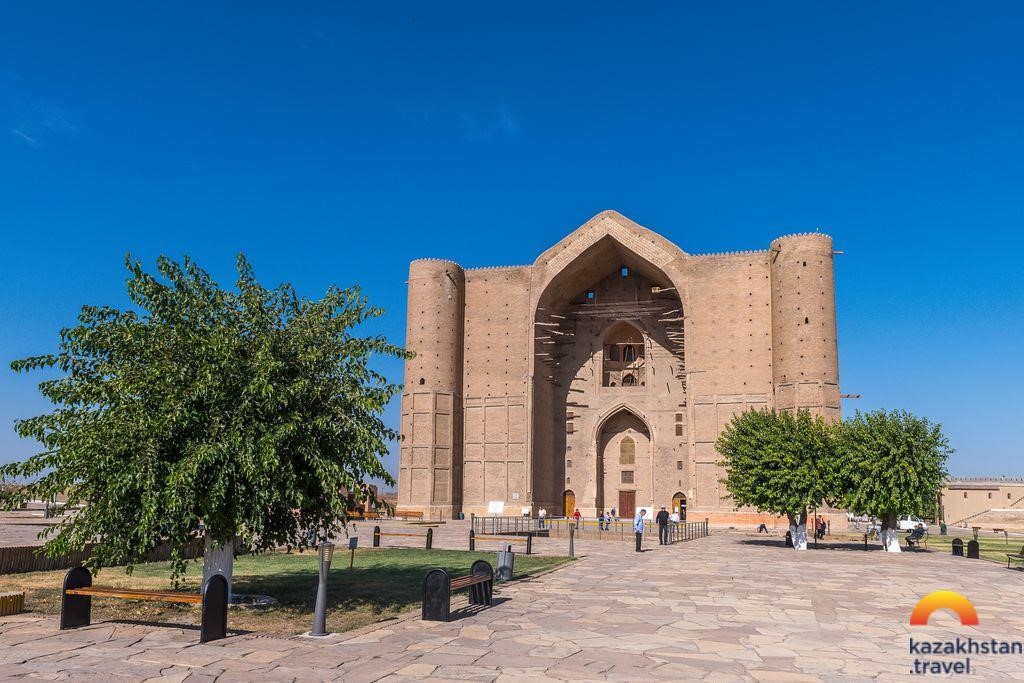
The city of Turkistan is famous for its beautifully designed architectural monuments. The most outstanding of them is the Mausoleum of Khoja Ahmed Yasawi, or as it is sometimes called the second Mecca for the Muslim people. But it would be preposterous to talk about the mausoleum without mentioning the Mausoleum of Arystan Bab, without whom there would be no great individual like Yasawi. According to history, Arystan Bab used to be Ahmed Yasawi’s mentor.
In honor of the victory over the Golden Horde, the great emir Tamerlane planned to erect a magnificent building which is the Mausoleum of Khoja Ahmed Yasawi. In the middle of the city of Yassy (the former name of Turkistan), an unprecedented feat of construction was about to unfold, in which every townsman took part. But inexplicably, as time went on the walls kept getting ruined. After that, Tamerlane has a dream where he saw Ahmed Yasawi asking him to build a mausoleum for his teacher - Arystan Bab first.
Tamerlane erected a monumental shrine on the site, where once stood a small two-room mausoleum built by the followers of Arystan Bab after his death in the 12th century.
The Mausoleum of Arystan Bab was repeatedly destroyed due to weather conditions and was restored again. So in 1971, with the financial support of the locals, the mausoleum was rebuilt from burnt brick. The only reminder of the construction methods once used in Tamerlane’s era is the ancient carved columns which are carefully stored in it.
The sacred and majestic Mausoleum of Khoja Ahmed Yasawi proudly stands tall at 37.5 meters. Its construction was completed in 1405. The incredible energy of the tomb allows you to understand the story and touch the Kazakh culture.
The majority of travelers start their pilgrimage with a visit to the Mausoleum of Arystan Bab, before setting off for their pilgrimage to the Mausoleum of Khoja Ahmed Yasawi.
The Kazakhstan Hotel
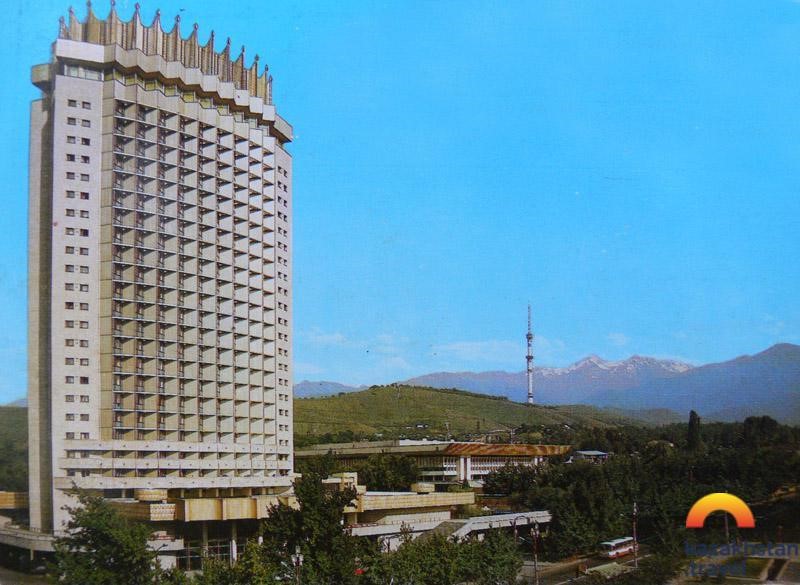
In the second half of the 20th century, the development of Almaty was almost experimental in its nature. Thanks to this, a lot of ambitious old-time ideas in the style of Soviet modernism, gave rise to quite some amazing feats of architecture. For example, a 102-meter 25-storey skyscraper - Kazakhstan Hotel, which was considered the tallest building in Almaty for 32 years. Despite the fact that it was not allowed to construct buildings above 12 floors due to the high seismic activity of the area.
Thanks to brand-new construction method that was quite innovative for those days, The Kazakhstan Hotel remains the most earthquake-resistant building in Almaty to this day.
The tower with a golden "crown" on its roof is truly an iconic building of Almaty.
Ascension Cathedral
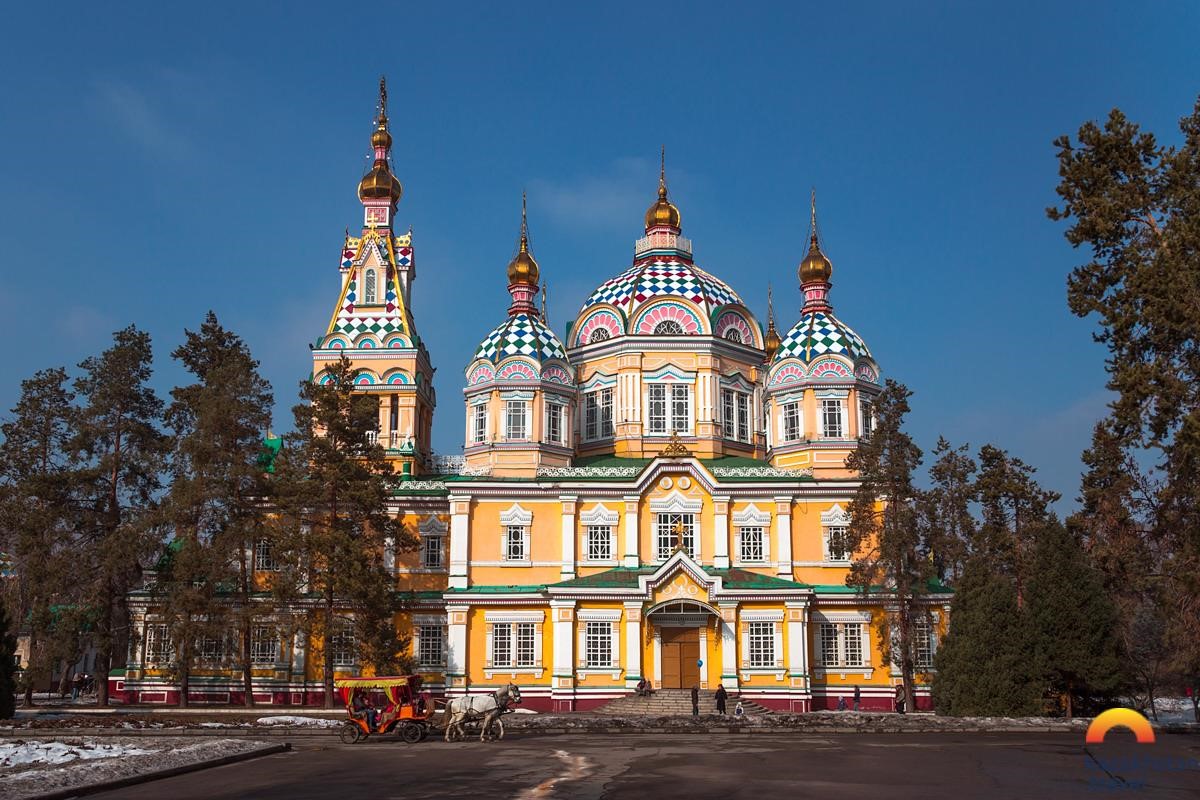
There is a world-famous religious attraction site located in Almaty, which was built of wood with virtually no nails using unique ancient architectural technology. The Ascension Cathedral of the Russian Orthodox Church is one of the eight tallest buildings in the world made out of wood. The interior of the church is decorated with drawings, stucco moldings and wrought-iron ornaments which give special splendor to this holy place.
This unique cathedral opened its doors for parishioners in 1907. Unluckily just three years later, a severe earthquake struck the city, destroying almost all the buildings around it. Thanks to the special construction techniques, the cathedral was amongst the few buildings which were not damaged.
Today, the temple hosts daily services for hundreds of Christians. And the cathedral itself bears the title of a unique historical monument, not only in Kazakhstan but throughout the world.
Kok Tobe TV Tower
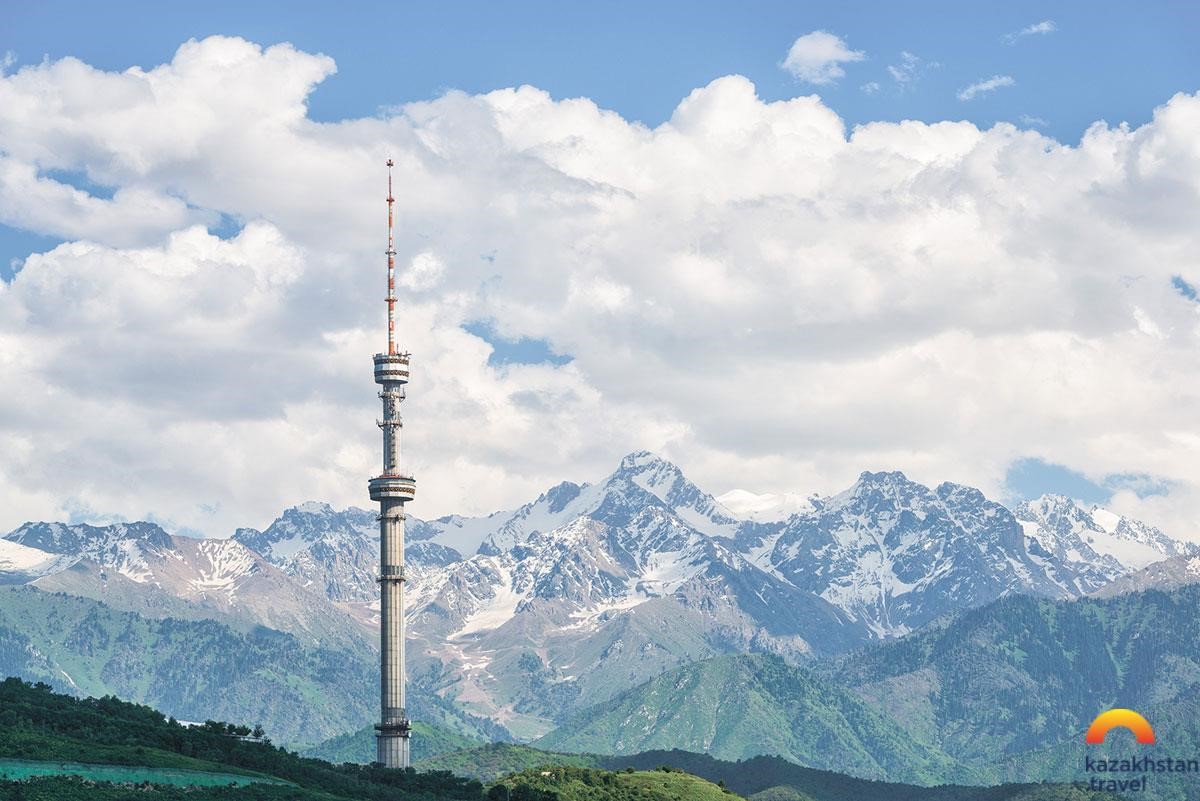
The Kok Tobe TV Tower was built to perform clear technical tasks. But the elegant, unique architectural design and the height of the construction made it a symbol of Almaty.
The newest and most innovative construction methods of the time were used during its construction. Can you imagine that in order to ensure the stability of the 372-meter tower on clay soil, a concrete foundation weighing 45 thousand tons had to be built! Despite the fact that the total weight of the tower is 50 thousand tons.
Thanks to the pendulum damper system, the TV tower cannot be affected by any strong gusts of wind and has a high seismic stability up to 10 points on the Richter scale.
The Kok Tobe TV Tower is the second highest building in Kazakhstan, and the 14th highest TV tower in the world!
Beket Ata Underground Mosque
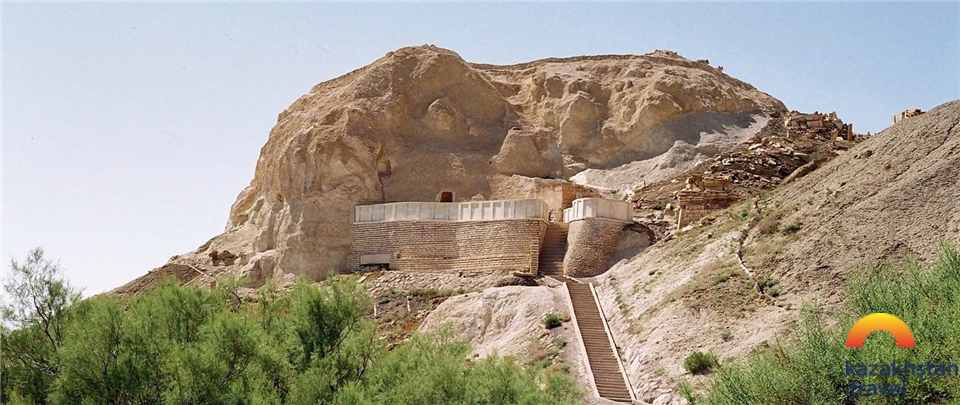
Beket Ata Underground Mosque is located near the city of Aktau in the tract of Oglandy. The main architectural feature is that this mosque is carved into the rock. This is not just a cave, but a carved area of several completed rooms. The walls of the mosque are decorated with Arabic and Persian inscriptions.
The hermit Beket built four architectural monuments like this in Kazakhstan during his life. Every year, thousands of believers come to pray at the shrine.
Cuisine
The national cuisine of Kazakhstan is popular not only in the country. Such famous Kazakh dishes as besbarmak, bauyrsaki, kazy, kuyrdak, іrimshik can be tasted in many cafes and restaurants throughout the country. Abundance of meat, sour milk products, flour-based food are the distinctive features of Kazakh cuisine. The gastronomic specialties of Kazakhstani cuisine cannot be ignored.
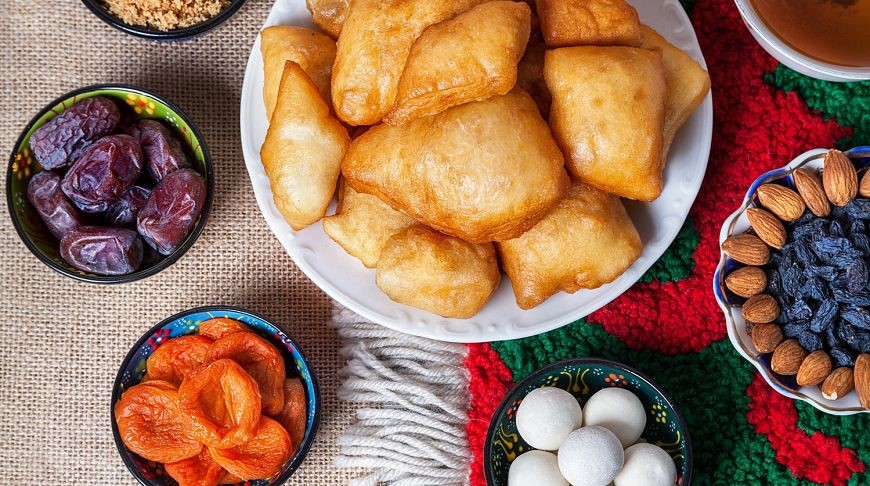
"Photo taken from open sources"
Many recipes of national dishes are passed down from generation to generation, while serving of dishes is a real ritual. It is believed that nowhere else in the world you will find such a variety of national cuisines and the most diverse taste preferences. This is explained by the fact that people of more than 135 nationalities live on the territory of Kazakhstan. The main accent will always be on the Kazakh cuisine based on the traditions of the Great Steppe nomads. Delicious and healthy food of nomads is becoming very popular both among guests of the country and tourists. Such an abundance of various unusual dishes originated from certain regions of the country becomes a significant prerequisite for the development of a new format of tourism in Kazakhstan - gastronomic. Many experienced foreign tourists often come here not just to admire the wonders of local nature, but to taste the amazing food of the nomads, to become acquainted with their life, culture and ancient traditions.
National sports
National sports are the brand of our country. Since ancient times, the Kazakh people have organized competitions on all holidays. Interest in the national sports is reviving in the country and gaining popularity. During the competitions, spectators can also get acquainted with the customs and traditions of our people.
Kazakh national sports types:
1.“Audaryspak” is wrestling on horses, where only the best riders take part, because wrestling on horses requires exceptional endurance, strength, agility and excellent ability to hold on to the saddle. The aim of wrestling is that two riders on horseback compete in who will be able to pull an opponent off a horse.
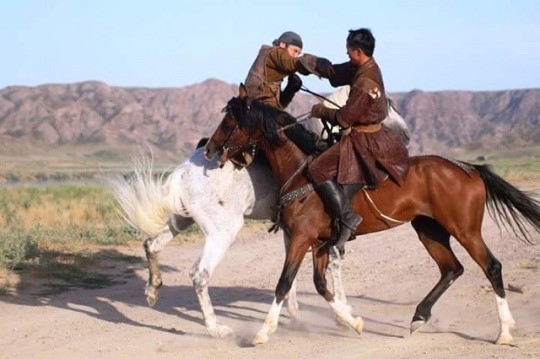
"Photo taken from open sources"
2. “Baiga” is one of the types of equestrian sports (horse races) and is also one of the oldest and most popular. This type of sports game has its own features: it takes place not only on flat plains and hippodromes, but can also be played in hilly, uneven places where high demands are placed on the athlete and his horse. The strong and fast do not always win a competition, it is necessary to consider a relevant arrangement of training and preparedness of a player, correctly assess situations during a competition, and reasonably use a horse's strength. This national sport is one of the most valuable because the game teaches endurance, resourcefulness and courage. At the moment, Kazakhstan has all the opportunities for the wide distribution of this sport, in our republic there are special stud farms that raise riding horses.
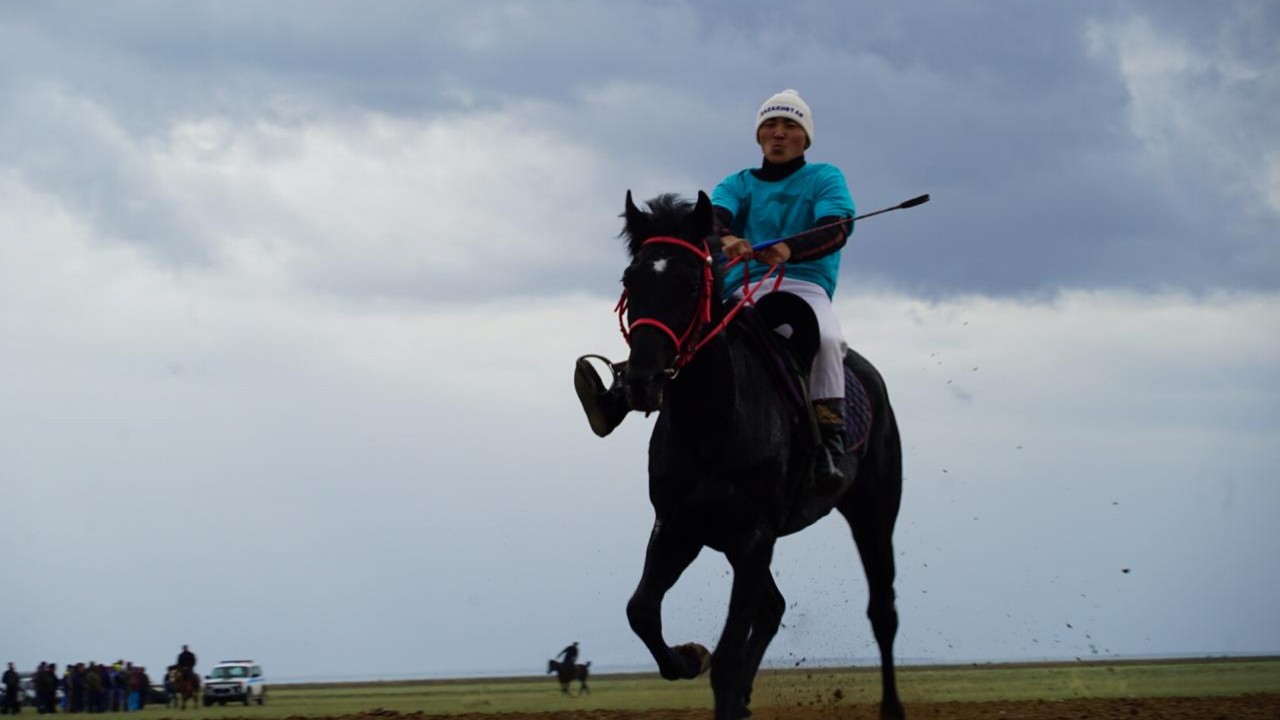
"Photo taken from open sources"
3. “Asyk atu” is the asyk game (sheep bones), which is one of the Kazakh national games originating from ancient times. Many children's games are associated with the asyk game, this is explained by the nomadic image of the Kazakhs based on cattle breeding. Therefore, most of the Kazakh national games are based on playing with natural objects. That is why the Asyk game is considered one of the oldest national games. Playing the Asyk game from an early age strengthen the nervous system of children and bring up such qualities as accuracy, ability to calculate as well as endurance.
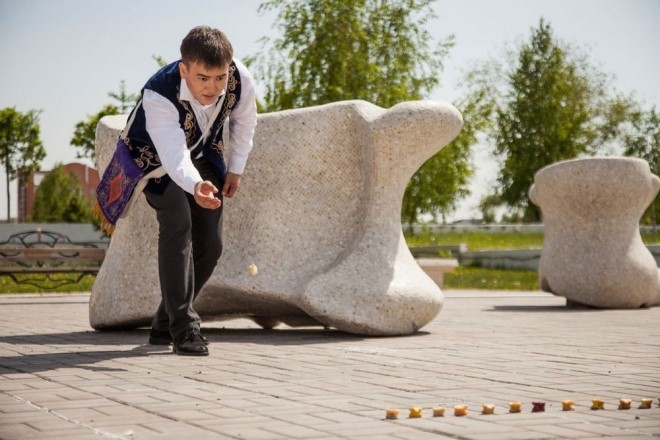
"Photo taken from open sources"
4. “Zhamby atu” is one of the ancient games of the Kazakh people testing dexterity and sniper qualities of a brave dzhigit. It also touches the pride. Our brave ancestors preserved the vast territory due to the horses competing with the wind, and the bow which was a reliable weapon. These two assets, passed down from generation to generation, have come down to the present days of our country's independence. The zhamby shooting competition takes place on a flat field 300 meters long. At the finish point, at a distance of 100 meters, jamby are placed the size of a stallion's hoof on a pole 3-4 meters high. A rider rides a horse and aims at the jamby. No point will be awarded if a rider is aiming by restraining the galloping horse. At a gallop, driving past a zhamby on the left side, aiming, participants shoot from a bow. Regardless of the successful or unsuccessful achievement of the intended goal, without stopping they continue to run to the finish line. If the target falls from the pole, an arrow is considered to have hit and a rider is awarded a point. There are also other types of jamby shooting: aikabak, various types of rifle shooting, or multiple targets shooting.
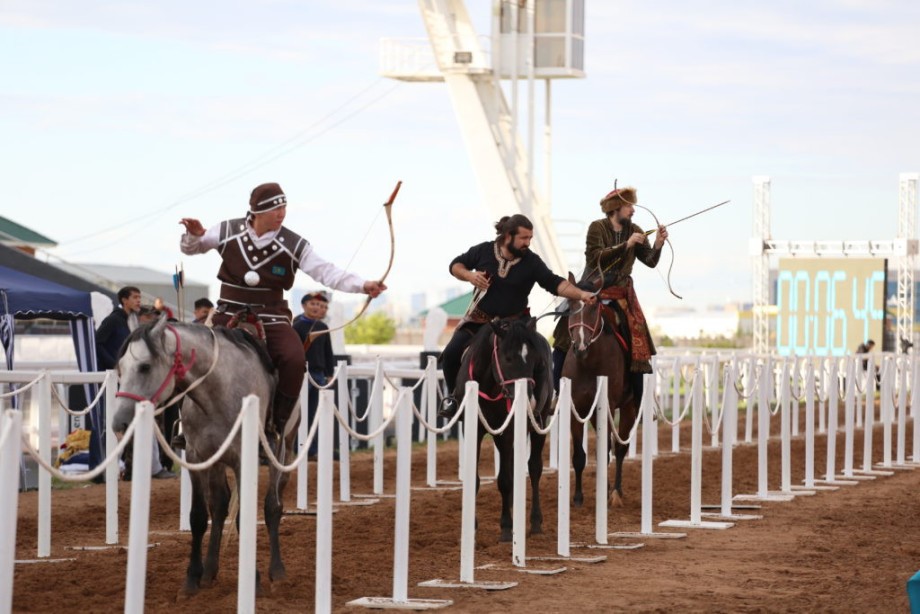
"Photo taken from open sources"
5. “Kokpar” is a type of national sports originating from the time of traditional wolf hunting. The main point of the game is simple, two teams (4 kokparshy in each) should grasp a goat`s carcass and throw it into an opponent's cauldron the maximum number of times. Kokpar is a combination of several sports: wrestling, rugby and horseback riding. Kokpar is an extreme sport, but modern equipment helps protect the participants` health. At the same time, a question often arises of replacing an animal carcass with a dummy of corresponding weight. Though there are elements of football or hockey in the game, they obviously do not have the same levels of physical activity.
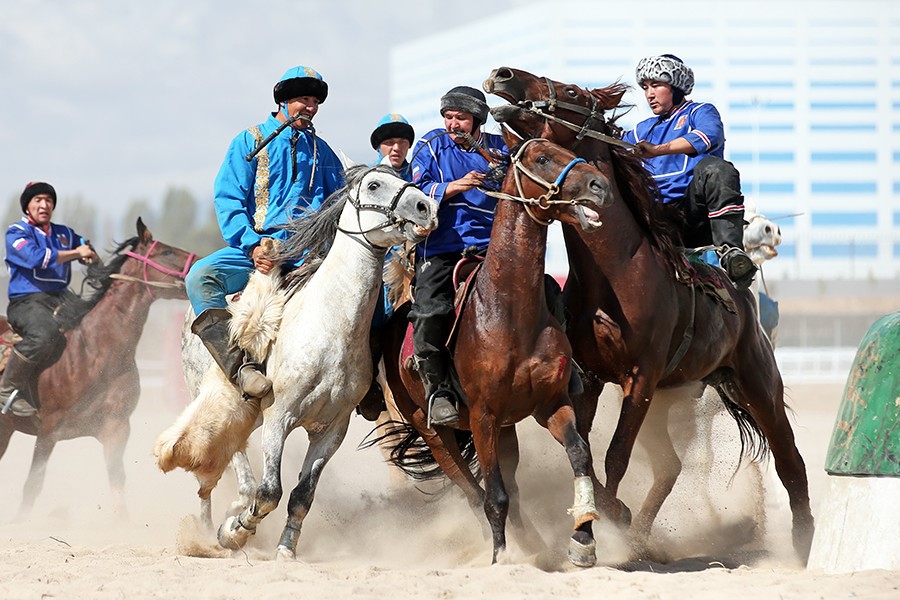
"Photo taken from open sources"
6. To date, such a sports type as “kazakhsha kures”, i.e. Kazakh wrestling, rooted in ancient times has gained immense popularity. Kazakhsha kures has been developing with the history of the Kazakh people. Any festive events cannot be held without this sports type. In Kazakh wrestling, an athlete moves freely, can fully use strength, his own methods, roll on his side, dump on his back, put a footrest, fight with his legs crossed, press with his body weight, hook his legs, grab his belt and dump over his head. The fight ends in a one-sided defeat, touching the ground with a spade. The main conditions are to combat an opponent using sophisticated methods and force. At the moment, competitions of republican and international importance in national wrestling are being held in Kazakhstan, which indicates the growing international importance to this sport. This is also done to make it more popular and increase interest in sports among young people.
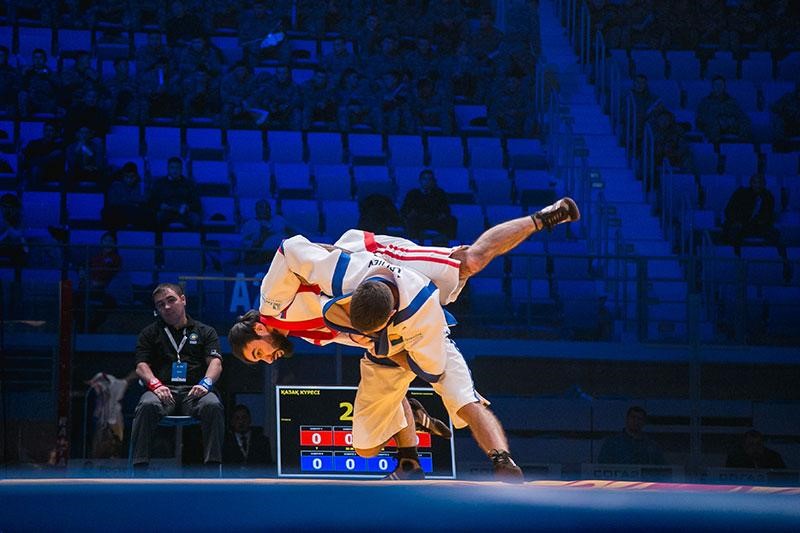
"Photo taken from open sources"
7. Fighting is both competitive and combative type of sport, which usually includes one-on-one fights. In many types of fighting, a participant wins by gaining more points than an opponent, or by bringing an opponent down. Combat sports have a long lineage with martial arts. Participants in single combats physically oppose each other in order to determine a winner in a fight using only physical strength or any kind of sports equipment or hand-held edged weapons. There are such types of martial arts as karate, judo, boxing, wrestling without rules.
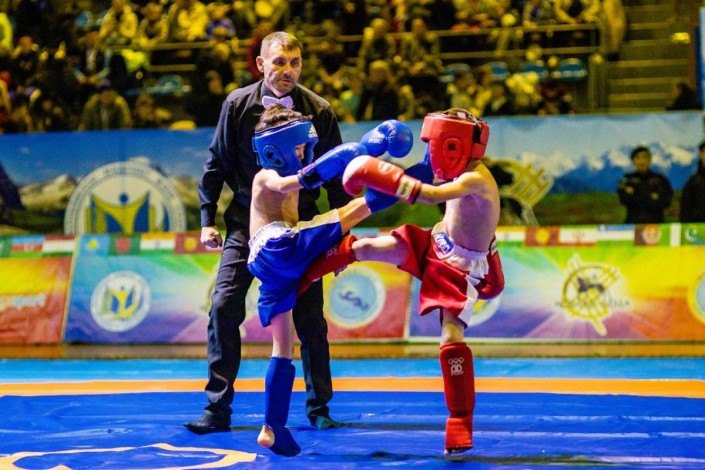
"Photo taken from open sources"
8. Hunting with birds. The golden eagle is a sacred bird for the Kazakh people. The bird was appreciated for its strength and greatness, while the span of its wings embodied freedom. Therefore, the image of the golden eagle on the flag of our country embodies the greatness of freedom, independence, nobility, perseverance. According to historic evidence, 3 thousand years have passed since the golden eagle was tamed and used for hunting, because it was this bird that could cope with such large animals as saiga, fox, roe deer. There are several types of hunting with birds and the most common one is with the golden eagle. To arrange a competition, a flat area (field) is selected, where wild animals, including wolves are released. The winner is a hunter whose bird caught the first animal.
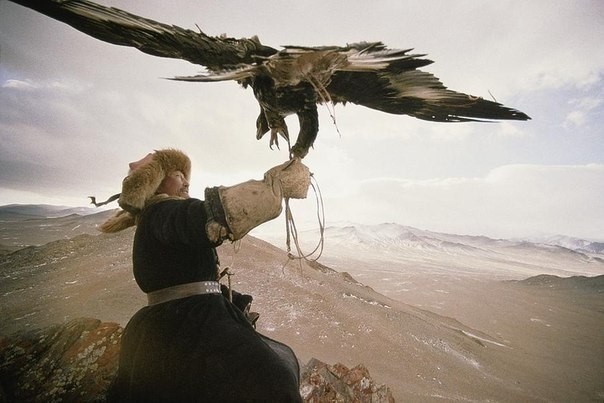
"Photo taken from open sources"
9. “Togyzkumalak” is the Kazakh folk board logic game, in which there are 18 playing holes and two accumulative holes. The game is based on the number 9 (nine playing holes, each hole initially contains nine balls), which is considered sacred by the Turks. The game develops mathematical thinking and fosters endurance. The game can last four to five hours. During the game, opponents have to use all four basic mathematical actions. The game is built not only on counting speed, but also on tactics.

"Photo taken from open sources"
Literature
Kazakh literature is a history of several millennia. The primary sources of Kazakh literature are the dastans called “Alyp Yer Tonga”, “Shu Batyr”, which were created in the 11-3 centuries BC. Scientific research proved that the events described there are closely related to the ancient history of the Kazakh people. Among the sources of ancient Turkic literature are Orkhon-Yenisei inscriptions, the works of Yusuf Balasaguni and Mahmud Kashgari and treatise “Codex Cumanicus”.
In ancient times, the nomads of Kazakhstan told various legends about the exploits of mythical heroes, about gods and monsters in a poetic form. Over time, these stories developed into original epics called “Korkyt-Ata” and “Oguz-Name”.
In the 15th century, such genre as “tolgau” was formed. It is a poetic form of reflection, which contained some kind of wisdom or edification for any reason. Tolgau was performed by an author and singer called “zhyrau”. Thus, performing educational and enlightening functions, zhyrau had weight in the political life of the country and could influence society. Later, the tradition of holding “aitys” appeared. “Aitys” is a song/poetic duel between two “akyns” (singers) during which they addressed such topics as religion, society, political order and other acute issues.
In the 19th century, development of written literature began influenced by Russian and European writers. At the end of the 19th century, names of such authors as Ibrai Altynsarin, Shokan Valikhanov, and, in particular, Abai Kunanbayev, who is considered a classic of Kazakh literature, became widely known in Kazakhstan. The work of Abai (Ibragim) Kunanbayev (1845-1904) opens a new stage in Kazakh realistic literature. The power of Abai, as a great artist of the word, manifested itself with exceptional power in the poems of the Eight Poems. The main line of his work is a call for goodness, knowledge, culture, honest work, justice, love for the people, his native land. A keen connoisseur of Russian poetry, Abai translated about 50 works by Pushkin, Lermontov, Krylov. In 2020, Kazakhstan celebrated the 175th anniversary of the great poet.
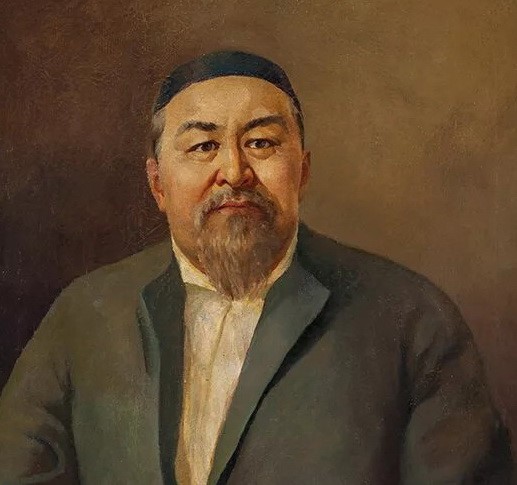
"Photo taken from open sources"
In the 20th century, traditional socialist topics became popular. During the Great Patriotic War, poets wrote patriotic poems and poems about soldiers and heroes of the battlefields. In the second half of the 20th century, writers began to create large novels, developed drama and even mastered science fiction. Thus, the Kazakh literature of the 20th century joined the global trends and has been maintaining the course to this day.
Music
Since the old days, music and its main tools, i.e. folk instruments (kobyz, domybra, sybyzgy, dauylpaz, sazsyrnay, sherter, zhetigen, kerey, asatayak, kogyrau, etc.) have occupied a significant place in traditional Kazakh culture.
Kobyz is a bowed instrument of an unusual shape. It is made from a single piece of wood in which a hemispherical resonator with two compartments is hollowed out. Kobyz strings are made from horsehair. Usually, kobyz kyuis (musical pieces) are characterized by an amazing sound quality. Thus, they can imitate howling of wolves, cry of swans, running of horses and even sound of an arrow fired.
Dombyra remains the most favourite and widespread musical instrument among the Kazakhs. Dombyra was not difficult to make amidst a nomadic life and the history of its origin goes back to centuries. This instrument can still be found in Kazakh families and parents willingly send their children to dombyra lessons.
In the past, “sybyzgy” instrument was popular in traditional music which is made from a hollow stalk of Bashkir reed pipe. The simple form and availability of the material contributed to its popularity among Kazakh musicians. In terms of timbre coloring, sybyzgy emits a trembling sound, as if in awe or excitement, a sound that resembles the high sounds of a flute.
Asatayak is an ancient Kazakh and ancient Turkic percussion musical instrument. The shape resembles a wand or cane with a flat head decorated with ornamental patterns and metal rings, pendants. Asatayak has an open and harsh sound. To enhance the sound of the instrument, bucks used konyrau (bells), which were attached to the head of asatayak. When shaking the instrument, konyrau complemented the sound with tinkling.
Sazsyrnay is a wind instrument made of clay. Found on the territory of Kazakhstan during excavations of the ancient settlement of Otrar. It has a transparent and light timbre. In ancient times sazsyrnay was a popular instrument among children and adolescents.
Zhetigen is a Kazakh and Turkic ancient stringed pizzicato musical instruments resembling gusli or recumbent harp in shape. The classic zhetigen has seven strings, the modern one has fifteen.
Shankobyz is a reed folk instrument. It refers to self-sounding reed musical instruments. When playing, shankobyz is pressed against the teeth or lips and oral cavity serves as a resonator. Changing the articulation of the mouth and breathing makes it possible to change the instrument timbre. Besdies, new tones in the sound are introduced by changes in the positions of the diaphragm, numerous pharyngeal, laryngeal, lingual, labial and other methods of sound production. The instrument is usually made of metal or wood.
Dabyl (Daulpaz) is Kazakh national percussion instrument. It is a rim wire with a handle covered with leather on both sides and looks like a frying pan with a handle from a distance. Having a very loud sound, the instrument has served to give military signals in the past.
Folk songs occupy a special place in the musical culture of the Kazakhs. All folk performers - akyns, zhyrshi, dombyra players had an exceptional associative instinct, a subtle perception of the world and a unique memory thanks to which many types of traditional art have been preserved in the musical history of Kazakhs.
Since the dawn of time it has become customary that Kazakhs called singers as akyns who having dombyra in their hands performed in front of the audience or competed in “aitys”, i.e. song and poetic “disputes”.
In the 19th century, integration of Kazakh music into the culture of the world takes place: Kazakh musical traditions are studied by Russian and European musicologists, and at the same time, Kazakh musicians get acquainted with the music of the world. Mutual enrichment of cultures takes place, new names appear in the history of music of Kazakhstan such as Abai Kunanbayev, Kurmangazy Sagyrbayuly, Ykylas Dukenuly and others. Today, Kazakh folk music is considered the heritage of Kazakhstan, composers and musicians create new works with an abundance of folk motives, and the history of musical creativity is also preserved. One of the best ways to get a closer look at the history of Kazakh music is to visit the Museum of Musical Instruments in Almaty.
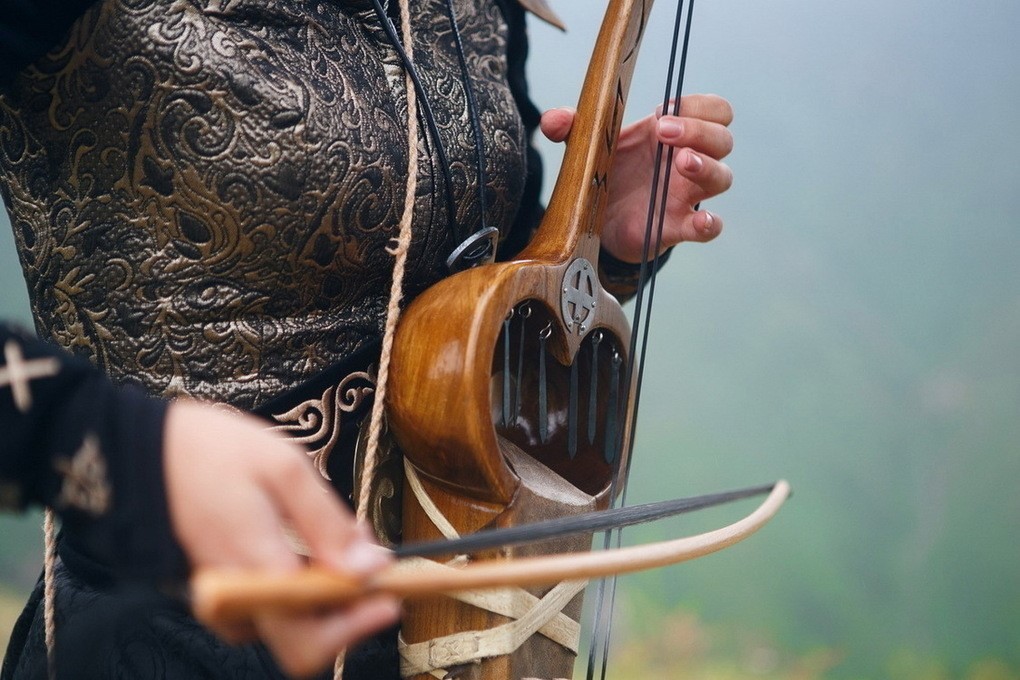
"Photo taken from open sources"
Holidays
Public and national holidays of the Republic of Kazakhstan:
- January 1st and 2nd: New Year (public holiday)
- March 8th: International Women`s Day (public holiday)
- March 21st, 22nd , 23rd: Nauryz (public holiday)
- May 1st : Kazakhstan People's Unity Day (public holiday)
- May 7th: Defender of the Motherland Day
- May 9th: Victory Day (public holiday)
- July 6th: Capital Day (public holiday)
- August 30th: Constitution Day (public holiday)
- October 25 th: Republic Day (national holiday)
- December 16th: Independence Day (public holiday)
One of the main traditional holidays of the Kazakh people is Nauryz. Nauryz is officially celebrated in Kazakhstan for three days in a row: March 21st, 22nd and 23rd. Nauryz is called the New Year according to the ancient eastern calendar. On this day, yurts are installed on the streets of cities and villages of Kazakhstan, where everyone can taste festive treats. Mass games are held everywhere. Modern Nauryz has preserved the ancient traditions. Amidst revival of national culture, it is an important link in the "connection of times", history and modernity of Kazakhstan. The main ritual dish of this holiday is called “nauryz-kozhe”, which should consist of 7 ingredients (water, meat, salt, fat, flour, cereals (rice, corn or wheat) and milk). On September 30, 2009, Nauryz was included by UNESCO in the Representative List of the Intangible Cultural Heritage of Humanity, since that time March 21st has been declared the International Day of Nauryz.
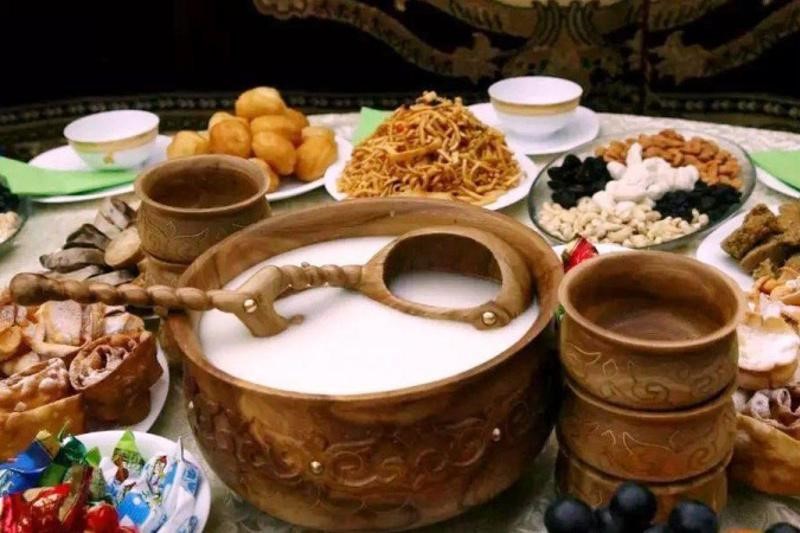
"Photo taken from open sources"
Traditional clothing
Kazakh traditional clothing is an important and integral attribute of Kazakh culture. The main materials from which Kazakh clothes were made were cotton, wool and felt. Also being nomads, Kazakhs often made garments from skins, leather and furs, as they were best suited for the harsh conditions of the steppe.
Boots were used as footwear: in summer the Kazakhs wore light boots made of thin leather, and in winter they wore high boots made of rough leather protecting from the cold. Women's boots were green or red, embroidered with silk and decorated with small patterned plaques.
Men's clothing
The Kazakh men's clothing included a shirt and trousers, a robe (shapan) was worn on top, a hat was worn on the head (in the winter - tymak, and in the summer - kalpak). At the same time, shapan was considered one of the most important elements of men's clothing, showing the status of a man. Shapans could be of various thicknesses and colors.
Women's clothing
Women's traditional costume included a loose-fitting dress with a camisole or shapan robe on top. Usually, women's clothing was sewn from chintz, silk and velvet. A thin felt was also used. During the cold weather, women wore fox or lamb fur coats.
Embroidery was actively used in the decoration of Kazakh outfits, along with beads, felt, silver plaques and various embroidered patches.
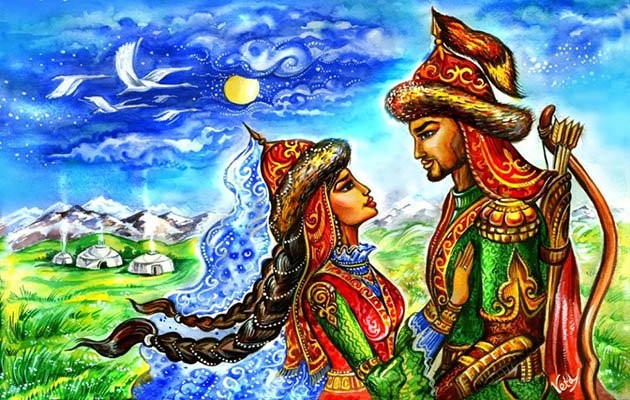
"Photo taken from open sources"
Headgear
Saukele is a unique and distinctive headgear that occupies a special place in the traditional Kazakh clothing. Saukele was worn by Kazakh brides and it was the most expensive and beautiful element of a wedding dress. Saukele was cone-shaped, decorated with pearls, corals, turquoise, gems and small coins. At the top of saukele, which was about seventy centimeters high, was a bunch of owl feathers. Saukele was supplemented with special “zhaktau” pendants, they were long and could reach the waist and below.
After the wedding, a married woman's costume was complemented by “kasaba” hat embroidered with elaborate golden patterns. As soon as a woman gave birth to a first child, she began to wear a white “kimeshek” turban.
It was customary for men to wear a felt hat called “kalpak”, as well as a skullcap cap called “takiya”. During the cold weather, men and women wore “boric” fur hat or “tymak” sheepskin headgear.

"Photo taken from open sources"
General information
- Official name: Republic of Kazakhstan
- Capital of the Republic of Kazakhstan: Astana
- President: Kassym-Jomart Kemeluly Tokayev
- Region: Asia (Central Asia)
- Territory: 2,724,900 km²
- Population: over 19 mln people
- Independence day: December 16, 1991 (from USSR)
- Administrative divisions: unitarian state, administratively consisting of 20 territorial unit: 17 regions and 3 cities of republican significance
- Government control: Presidential republic
- Head of State: President elected for 7 years
- Top lawmaking body: Two-chamber parliament (Senate and Mazhilis)
- Supreme executive organ: Government of the Republic of Kazakhstan
- Currency: Kazakhstani tenge (KZT)
- ISO code: KAZ
- Web domain: .KZ
The Republic of Kazakhstan is a unitary state with the presidential system of government. Under the Constitution, Kazakhstan is a democratic, secular, legal and social state which recognizes the man, his life, rights and freedoms as the supreme values of the country.
Kazakhstan gained independence on December 16, 1991. Astana is the capital city of the country. Kazakh language is the official language of Kazakhstan. The Russian language has the status of the language of interethnic communication. The unit of currency used in Kazakhstan is tenge.
National symbols
In the Republic of Kazakhstan the state symbols are the State flag, the State Emblem and the National anthem.
About National Symbols of Kazakhstan.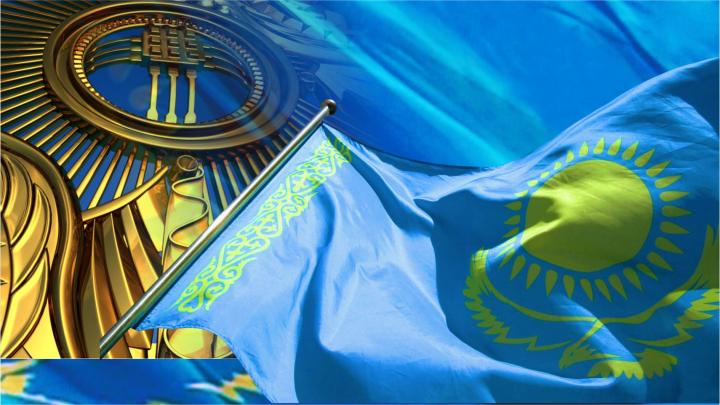
Branches of government
The President of the Republic of Kazakhstan is the head of state, the highest official, who determines the main directions of domestic and foreign policy of the state and represents Kazakhstan both inside and outside the country. The President is a symbol and guarantor of the national unity and state power, inviolability of the Constitution, human and civil rights and freedoms.
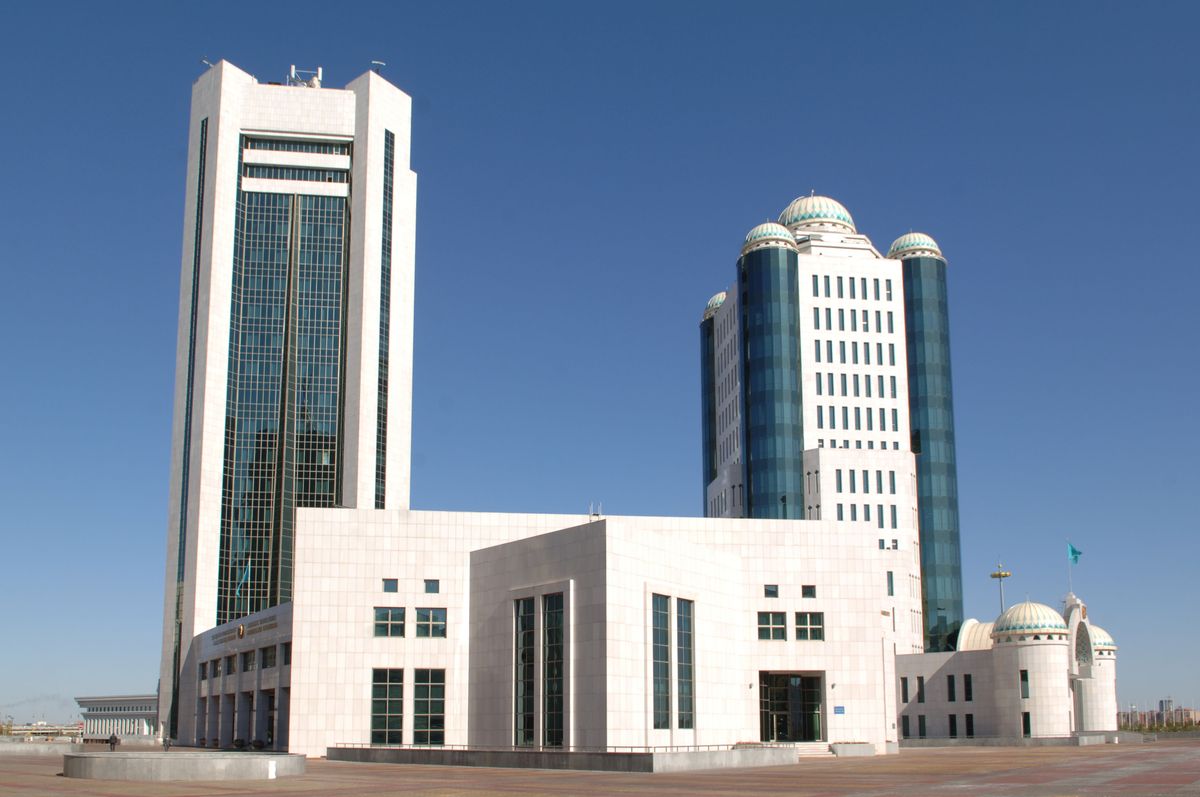
The government exercises executive power, heads the system of executive bodies and manages their activities.
Legislative functions are performed by the Parliament, which consists of two Chambers (Senate and Mazhilis) acting on a permanent basis. The Senate consists of deputies representing two people from each region, city of republican significance and the capital. Fifteen deputies of the Senate are appointed by the President based on the need to ensure representation of national, cultural and other significant interests of society.
The Mazhilis consists of one hundred and seven deputies, nine of whom are elected by the Assembly of People of Kazakhstan. The term of office for Senate deputies is six years, for Mazhilis deputies it`s five years. Today, three political parties are represented in the Mazhilis, namely "Amanat", "Ak Zhol" and the Communist People's Party of Kazakhstan.
Administrative and territorial structure
The administrative and territorial structure of the country includes 17 regions and 3 cities of republican significance.
The population of Kazakhstan is a little over 19 million people.
With the territory of 2 million 724.9 thousand square kilometers, the country is ninth in the world in terms of area. In the north and west, the republic has shared borders with Russia: 7.591 km (the longest uninterrupted land border in the world), in the east with China: 1.783 km, in the south with Kyrgyzstan: 1.242 km, Uzbekistan: 2.351 km and Turkmenistan: 426 km. The total length of the land borders is 13.200 km.
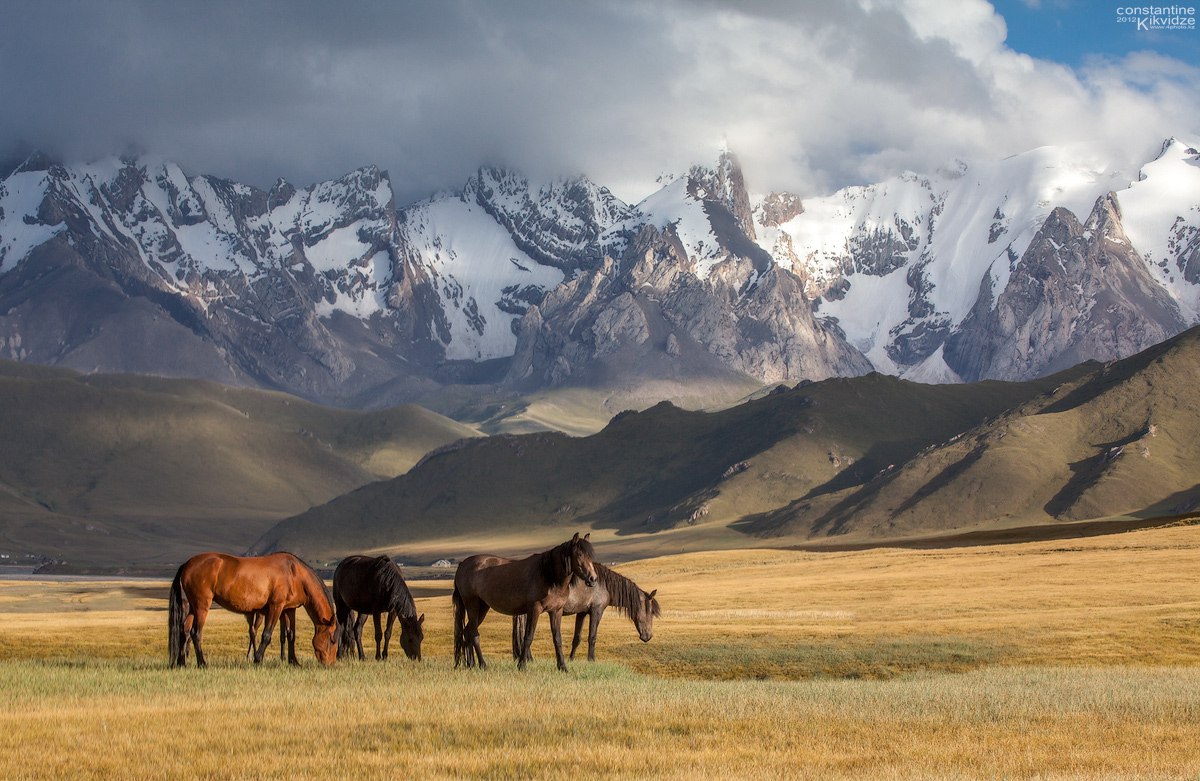
Kazakhstan is the largest country in the world that does not have direct access to the World Ocean. Most of the country's territory is deserts - 44% and semi-deserts - 14%. Steppes occupy 26% of the area of Kazakhstan, forests - 5.5%. There are 8.5 thousand rivers in the country. The northeastern part of the Caspian Sea is included in the republic borders. The Aral Sea is divided between Kazakhstan and Uzbekistan. There are 48 thousand large and small lakes in Kazakhstan. The largest of them are Balkhash, Zaysan and Alakol. The remoteness from the oceans determines the sharply continental climate of the country.
Economy
The mineral resources base of the country consists of more than 5 thousand deposits. The forecasted cost of the deposits is estimated at tens of trillions of dollars. The country is on the first position in the world in terms of explored reserves of zinc, wolframium and barytes, second position in silver, lead and chromite, third in copper and fluorite, fourth in molybdenum, and sixth in gold.
Also, Kazakhstan has significant oil and gas resources (ninth in the world in terms of explored oil reserves) concentrated in the western regions. Moreover, the country ranks eighth in coal reserves and second in uranium reserves.
Kazakhstan is one of the ten leading world exporters of grain and one of the leaders in flour export. Seventy percent of arable lands in the north are occupied by grain and industrial crops such as wheat, barley, millet. Rice, cotton and tobacco are grown in the south of the country. Kazakhstan is also famous for its gardens, vineyards and cucurbits. One of the leading areas of agriculture is animal-breeding.
The main export commodities are products of mining, fuel and energy, metallurgical and chemical industries, as well as the grain industry. The main trade partners of the country are Russia, China, European states and CIS.
For the purpose of the economy diversification, the industrial and innovative development program is being successfully implemented under which old enterprises are renovated and new enterprises are established.
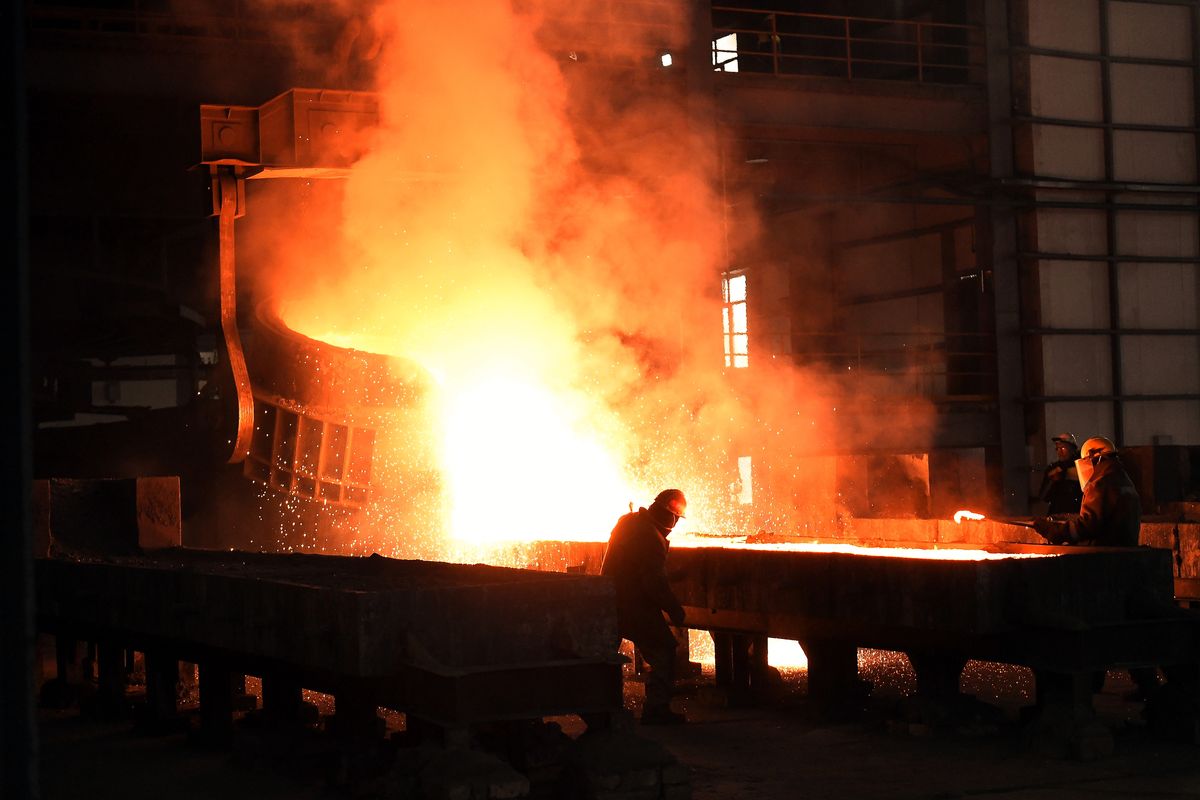
Kazakhstan is implementing a large-scale project called “New Silk Road”, which is to revive the country's historical role of being the main connecting link of the continent and turn it into the largest business and transit hub in the region, i.e. sort of bridge between Europe and Asia.
In 2014, the Head of State announced about the “Nurly Zhol” program for large-scale infrastructure construction intended to connect the regions of Kazakhstan with main lines and update logistics/social/industrial infrastructure.
Kazakhstan has embarked upon the implementation of the Plan of the Nation “100 Concrete Steps”, which provides for fundamental transformations in order to implement the Five People's Reforms, namely, generation of professional government machinery; ensuring the rule of law; industrialization and economic growth; identity and unity; and establishment of an accountable state.
A large-scale social modernization of the country is underway. Thus, new schools, professional colleges and universities have been built; modern medical clinics and hospitals have been opened and the system of social support for the population has been improved.
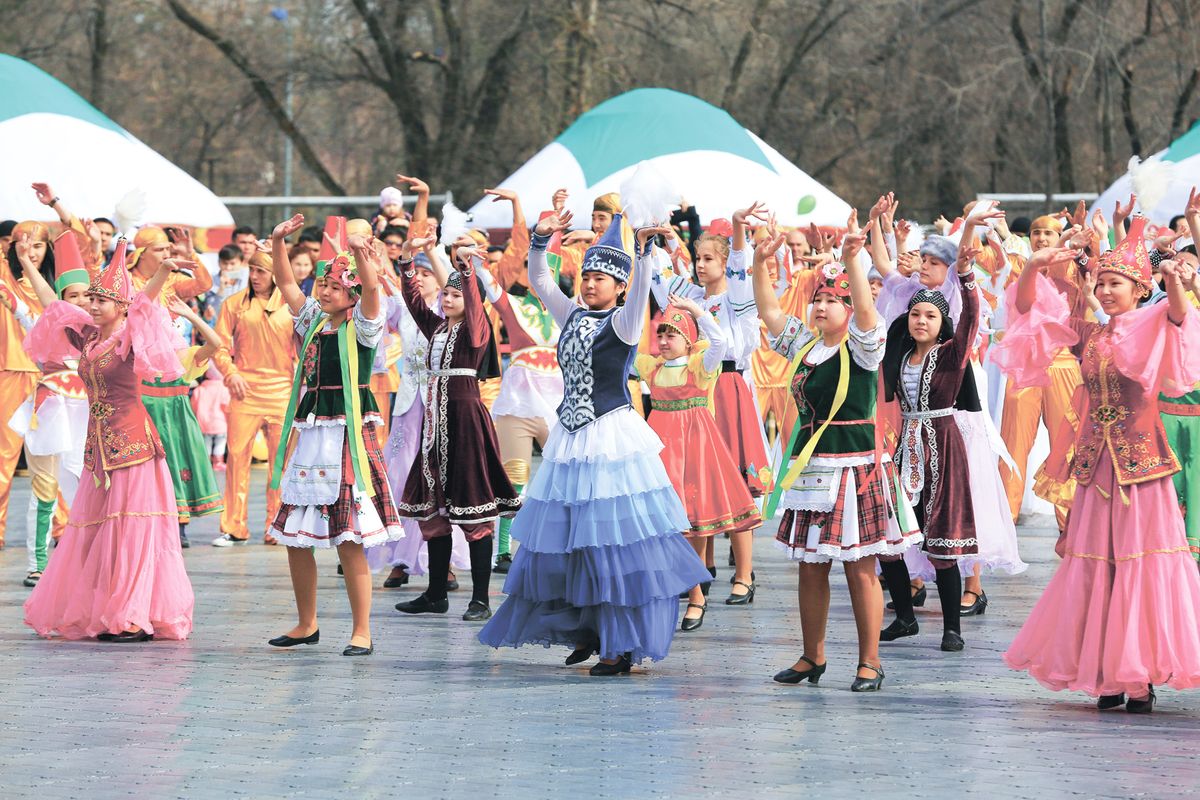
Today, representatives of 130 ethnic groups live in the country. The Assembly of People of Kazakhstan, which is a consultative and advisory body for coordination of interethnic relations, successfully operates in the country. In Astana, Congresses of Leaders of World and Traditional Religions are held on a regular basis.
Politics
Being the Central Asia leader, the country makes a significant contribution to strengthening the stability of the region. The country has made a great progress in the world stage. This is proved by the chairmanship of Kazakhstan in the OSCE and holding of the Summit for this international organization in December 2010 in Astana. A significant initiative introduced by the country was the launch and development of the CICMA project, which is the Asian analogue of the OSCE. The productive activity of Kazakhstan as being the chairman of the leading organization of the Islamic world (OIC) received positive feedback. The country is also a recognized leader in the global anti-nuclear movement.
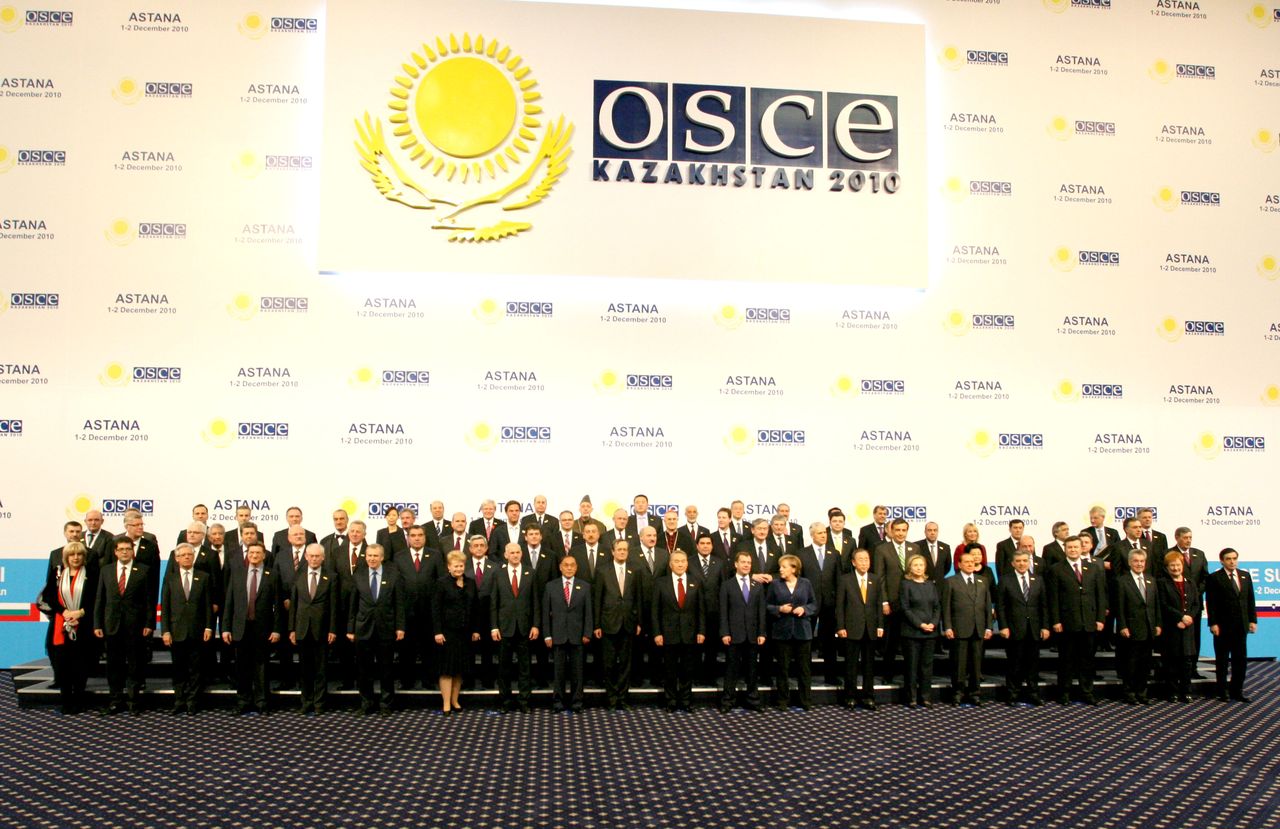
Kazakhstan is a member of the Eurasian Economic Union.
Stable growth of all the economy sectors, international recognition and political stability have become the basis for the prosperity of Kazakhstani society. Kazakhstan is the country looking ahead, which at the same time preserves its cultural traditions and successfully implements its huge potential in today's accelerating world.
Education
The Kazakhstani education system helps to acquire knowledge that later enables people mastering the profession. In the Republic of Kazakhstan, education is divided into general and professional. School (secondary) education is divided into classes: primary (grades 1-4), basic and senior. Primary vocational education (after the 9th grade) can be obtained in specialized lyceums, and secondary vocational education at academies or colleges.
The education system in the Republic of Kazakhstan consists of several stages:
- pre-school;
- secondary;
- higher;
- professional.
To enroll to a higher educational institution, prospective students should take the UNT test (Unified National Testing). The points scored at the Unified National Testing are the main indicator for enrollment to Kazakhstani higher educational institutions. Applicants have the opportunity to enroll to a chosen university on a paid basis (at their own expense), or they can get an education free-of-charge by obtaining an educational grant. It takes 4 years to get a bachelor's degree. Also, those applicants who already have a bachelor's degree can enroll to a master's degree, which is postgraduate education. It takes from 1 to 2 years to get a master's degree. Citizens of the Republic of Kazakhstan have the opportunity to get the “Bolashak” scholarship to study abroad. Foreigners have the opportunity to get education on the same rights as citizens of the Republic of Kazakhstan. The education system is controlled by the relevant ministries - the Ministry of Education of the Republic of Kazakhstan and the Ministry of Science and Higher Education of the Republic of Kazakhstan.
Transport
In recent years, the Republic of Kazakhstan has been actively developing its transport system as transport is an important economy and politics sector in Kazakhstan. First of all, this is due to the advantageous geographical position, vast territory of Kazakhstan, low population density, remoteness of settlements from each other, dynamics of globalization and integration processes. Kazakhstan ranks ninth in terms of land area in the world, and consequently, transport isthe only way to cover long distances between regions, which applies both to transportation of goods and people. New railway branches appear and highways are being reconstructed. The country does not have access to the seas and oceans, except for the Caspian Sea, and as a result, the bulk of all traffic falls on land transport. All types of transport are represented in the country: road, railway, water and air transport.
Due to the geographical features, railway and road transport is actively used in the country. For citizens, this transportation types are not only convenient, but also a low-cost option to travel. The base of the country's railway network is made up of four trunks: Turksib, TransKazakhstan (Petropavlovsk - Karaganda - Shu), Orenburg - Tashkent and Kungrad - Beineu - Makat - Astrakhan, as well as three latitude turnks: TransSiberian, Central Siberian and South Siberian (with branches). The length of railways in Kazakhstan exceeds 14 thousand km.
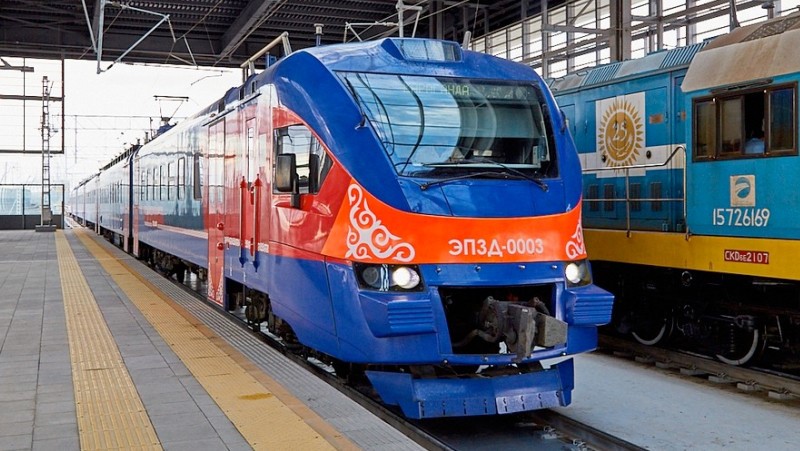
The total length of the road network of the Republic of Kazakhstan is 96 thousand km. Today, all regional cities of Kazakhstan have road traffic with all district centers and villages. The investment policy is aimed at modernization of existing international and local importance roads and construction of new ones. Kazakhstan is implementing a large-scale project called “New Silk Road”, which is to revive the country's role as a bridge between Europe and Asia.
Motor and urban electric vehicles. This category includes transportation by buses, trams, trolleybuses, and other land passenger transportations, in particular, underground (in Almaty), road freight transport, as well as taxi services. The transportation services of this category are available in any city of Kazakhstan. Today, use of various taxi services, food/ food products delivery is very developed in Kazakhstan. Each of the services has mobile apps.

Air transport. Air transport plays an important role in the transport system of Kazakhstan, due to the large geographical extent of Kazakhstan. There are 22 large airports in Kazakhstan, of which 14 serve international traffic. The transit of air cargo and passenger traffic between Europe and Asia is of great importance for the industry. The largest airline in Kazakhstan is Air Astana.
There are many options to purchase air tickets (air ticket offices, travel agencies, etc.). Today, online services are very popular in the country and provide an opportunity to book and buy tickets directly. The services offer variety of options for air tickets in different directions, you just need to choose the most convenient for you.
Water transport. This kind of transport is developed in the Caspian Sea. There are two large seaports on the Caspian coast: Aktau and Bautino. Passenger ships from Russia, Azerbaijan and Iran come to the seaports. The length of the waterways open for navigation in Kazakhstan is 3982 km. Boat traffic is also possible on some rivers in Kazakhstan: Irtysh, Syrdarya, Ural and Kigach, Ili and Ishim.
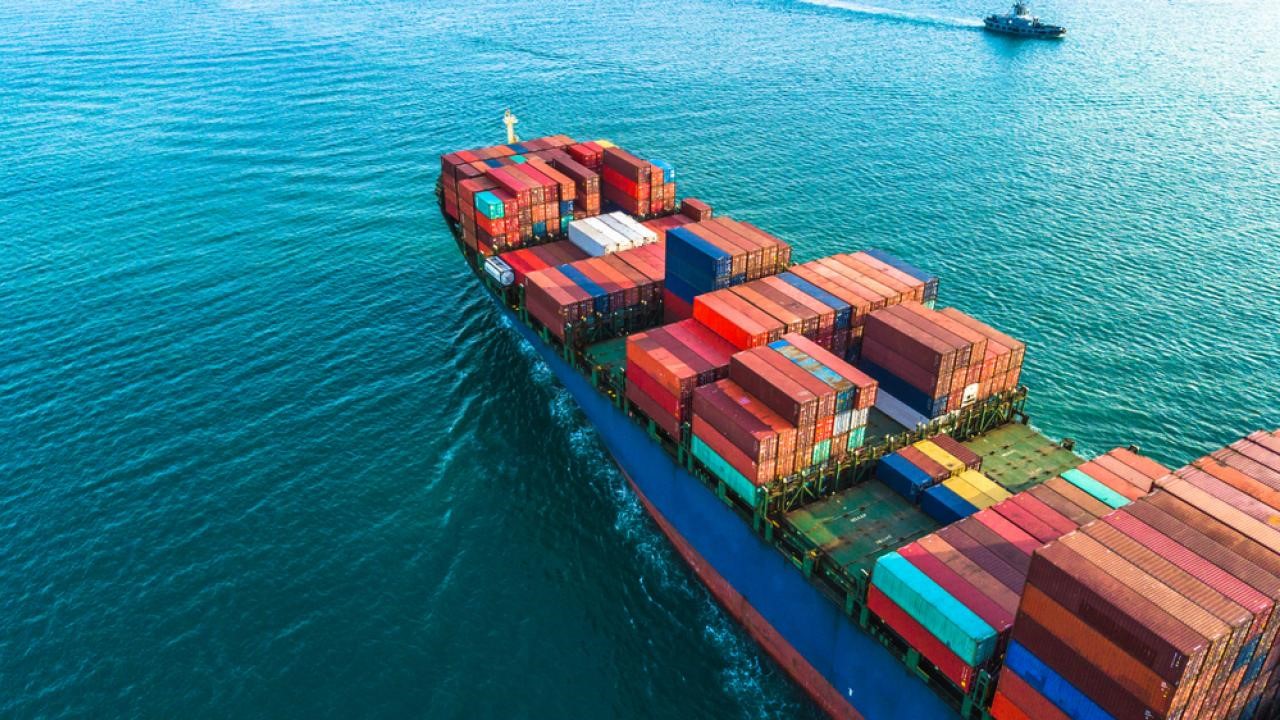
Customs restrictions
Kazakhstan is part of the Eurasian Economic Union (EEU). This means that the same rules for transportation of various goods across the border are applied on the territory of the country as in other countries of the Customs Union. In 2019, the Eurasian Economic Commission canceled the EEU restriction imposed on the export of alcohol and tobacco by individuals for personal use.
Today, individuals can import the following goods on the EEU customs territory:
- cigarettes or tobacco in an amount of 200 cigarettes/50 cigars/250 grams of tobacco per adult. Anything that exceeds the limits is illegal;
- no more than three liters of alcohol can also be imported to the territory of Kazakhstan without payment of duty.
If a price and weight of the imported goods exceed the established thresholds, then an owner will have to pay a duty in the amount of 30% from the cost of goods.
Since January 1, 2019, the threshold for duty-free import of goods for personal use by land and sea transport to the territory of the Eurasian Economic Union (EEU) countries has decreased to 500 euros, and the total weight of such goods should not exceed 25 kilograms.
Also, tourists or guests of the country can bring items for personal use. However, number of the items should not exceed the relevant standards:
- food products: no more than 10 kilograms per person;
- clothes and footwear: no more than one item in the same name, cut and size. This refers to outer clothing made of leather and furs;
- jewelry: five items;
- bicycles: 1 per person;
- baby stroller: 1 per person;
- mobile phone: 2 per person;
- tablet: 2 per person;
- laptop/netbook: 1 per person.
What is prohibited to import into Kazakhstan?
Pursuant to the customs rules, it is prohibited to import the following goods into the territory of the country:
- any types of weapons and ammunition;
- drugs and medications containing drugs;
- materials containing promotion of war, terrorism, racism, violence;
- materials with sexual content;
- soil and subsoil, including plants in soil,
- plant diseases and pests;
- quarantineable products and products infected with quarantine organisms.
Note that if prohibited goods are found in a passenger's baggage, they are withdrawn and an offender will face administrative or criminal liability.
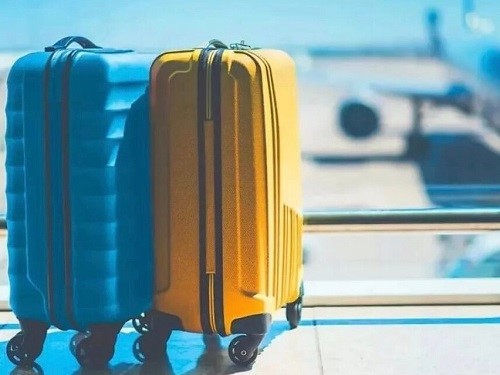
Import and export of foreign and national currency in cash, certified securities and payment documents is carried out by residents and non-residents without restrictions upon compliance with the requirements of the customs legislation of the EEU countries and the Republic of Kazakhstan. Customs declaring procedure is not required for individuals importing or exporting foreign and national currency in cash (except for coins made of precious metals) and traveler's checks in a total amount equal to or not exceeding the equivalent of ten thousand US dollars (about KZT 4.2 million). An amount exceeding the equivalent of ten thousand US dollars is subject to mandatory customs declaration, except for cases of import/export carried out from the territory or into the territory that is an integral part of the customs territory of the EEU countries.
Customs declaring procedure involves fill-in of a customs declaration in writing for the entire amount with indication of the origin and purpose of cash and traveler's checks.
From January 1, 2021, it will be possible to import duty-free goods in an amount not exceeding 500 euros and weighing not more than 25 kg. The amendments do not cover goods imported into the EEU territory in accompanied baggage by air. When traveling by plane, one still can import duty-free goods in the amount up to 10 thousand euros and weighing no more than 50 kg.
Geographical position
The Republic of Kazakhstan occupies a very advantageous geographical position being in the central part of the Eurasian continent at an equal distance from the Atlantic and Pacific oceans. The country area is 2724.9 thousand km². The indicator is ninth in the world and fourth among the countries of Eurasia.
The capital of Kazakhstan is Astana.
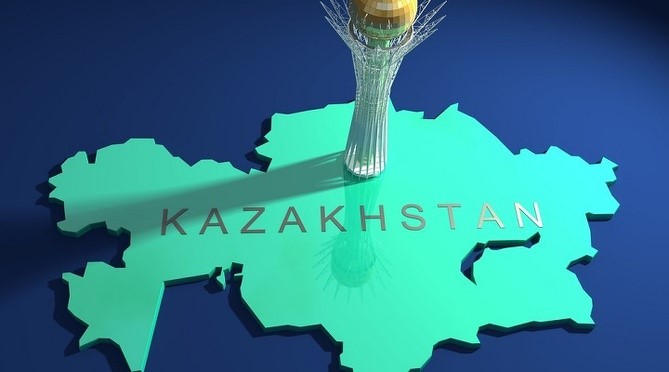
The key asset of the country is mineral resources. Thus, experts assure that the Kazakh Earth's interior contain almost all the periodic table elements.
Kazakhstan is distinguished by its landscape diversity. The natural attractions of Kazakhstan are as follows: northern ridge of the mountains, which is part of the famous Tien Shan; an area of the Altai mountain system and Saryarka also known as the Kazakh Upland.
Time zone
The territory of the Republic of Kazakhstan is divided into two time zones (officially – 4th and 5th) with the current time UTC + 5 and UTC + 6, although it actually locates in four geographic time zones: UTC + 3, UTC + 4, UTC + 5, UTC + 6.
Switch to daylight saving time was cancelled in 2005.
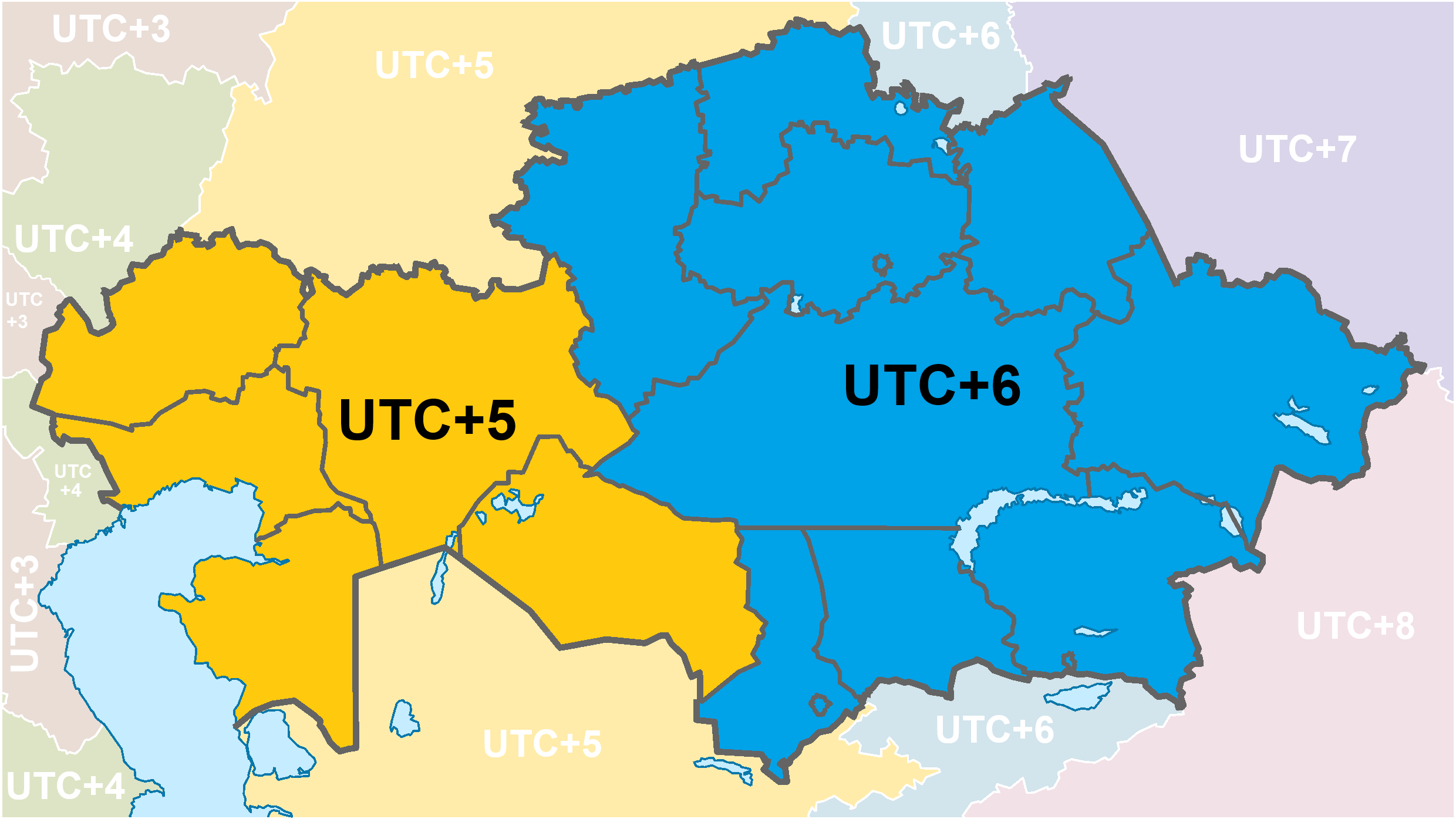
Climate
The climate of Kazakhstan is sharply continental, i.e. with cold winters and hot summers. The weather can vary significantly in different regions of the country due to spatial features. When spring sowing is taking place in the far south of the country, snow can still lie or blizzards can rage in the north.
In winter, the average temperature in the north reaches -18.7 °C in January, while in the south it is -1.5 °C. Snowy winters are ideal for winter sporting activities in places like ski resorts. One of the most popular ski resorts is Shymbulak ski resort in Almaty.
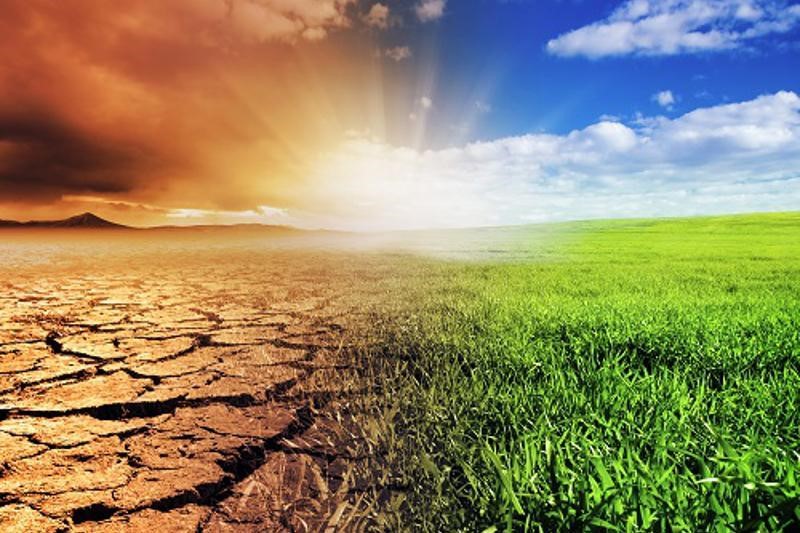
In summer, the average temperature of the hottest month, July, in the north of the country is + 18.8 ° С, while in the south it goes up to + 28.8 ° С. During a hot summer, a favorite type of recreation for Kazakhstani citizens is beach holiday on the picturesque shores of seas and lakes as well as in various recreational centers.
Kazakhstan is a sunny country. Thus, in some regions the sun shines up to 330 days a year and the sky is almost always deep blue.
Population
As of September 1, 2021, the total population of Kazakhstan exceeds 19,000,000 people. The country ranks 64th in the list of countries in terms of population. The average density is slightly less than 6.93 people per km² (184th position in the list of countries in terms of population density).
Today, the Republic of Kazakhstan is a country with multi-ethnic composition of the population. According to data at the beginning of 2021, Kazakhs make up the majority of the population (69.01%), then Russians (18.42%), Uzbeks (3.29%), Uighurs (1.48%), Ukrainians (1.36%), Tatars (1.06%) and others.
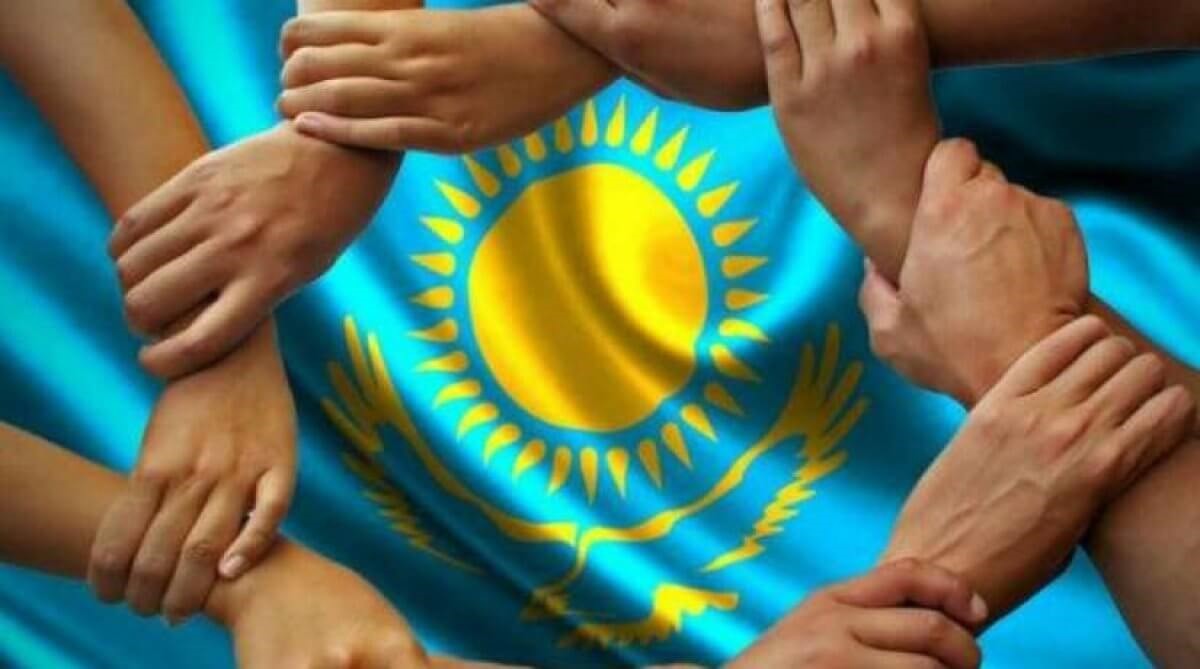
Republic of Kazakhstan Population Census
In Kazakhstan, national population census has been carried out in the time dedicated to the world census rounds. The post-war Kazakhstan population censuses as part of former USSR, had been held in 1959, 1970, 1979 and 1989. During the Republic of Kazakhstan Independence time, the population censuses had been conducted in 1999, 2009 and 2021 years.
In accordance with Law of Republic of Kazakhstan "On State Statistics" and Rules and timing of national censuses, approved by Decree of Government of the Republic of Kazakhstan dated October 11, 2010 No. 1049, as well as Decree of Government of the Republic of Kazakhstan dated June 19, 2019 No. 419 according to the Action Plan, it was decided to conduct the third regular national population census in the Republic of Kazakhstan in the period from September 1 to October 30, 2021.
It should be noted that census planned for conduct in 2020 on behalf of President of the Republic of Kazakhstan was scheduled from October 2020 to October 2021 due to the spread of coronavirus infection and restrictive quarantine measures being introduced in the country. At the same time, the online census has begun on September 1, 2021.
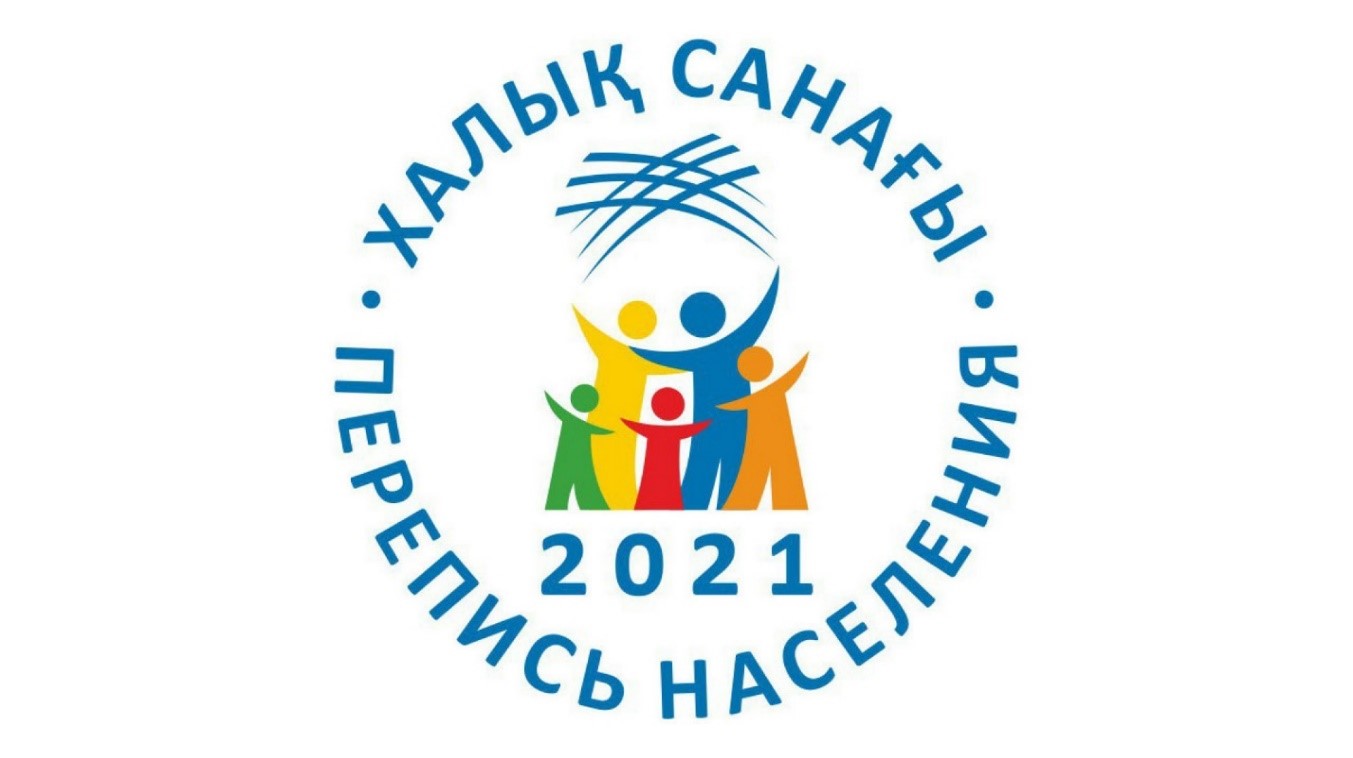
In online mode, with the help of a virtual assistant, the respondents, regardless of the location, independently have completed the census for themselves and their family members. The respondents who submitted information through the website were free from being interviewed by the interviewer. The online survey was available 24 hours a day from September 1 to October 15 , 2021.
At the same time, authorized users of e-Government Portal (e-Government) were provided with the opportunity to take an online population census without being registered on the website www.sanaq.gov.kz
In addition, it was possible to take online survey through “Aitu” mobile application in the population census section (Aitu sanaq.aitu.io).
The second traditional continuous round was conducted on October 1 to 30, 2021, using electronic census questionnaires on tablets by interviewers to increase the convenience and their mobility. Also, an individual identification number was included in the census form to avoid the duplication of information and update of information databases.
The population census data findings will reflect economic, demographic and social changes that occurred in the Republic of Kazakhstan during intracensal period in demographic and socio-economic development of population such as changes in the population structure in the country and in urban and rural area and by regional context in terms of sex and age, marital status, national composition, citizenship, religion, education level, language proficiency, household number and size, housing conditions and other qualitative and quantitative characteristics.
The publications, press releases and other statistical, analytical and informational materials that had been prepared based on the 1999 and 2009 census data are available on the website of the Bureau of National Statistics of the Agency for Strategic Planning and Reforms of the Republic of Kazakhstan www.stat.gov.kz.
According to the 2021 preliminary census data, the population is 19,169,550 people, of which the number of men is 9,337,667 people or 48.71% , of women is 9,831,883 people or 51.29 %. The average population age is 31.94 years. In the context of age groups, out of the total population number, the children (0-17 years old) make up 6,511,171 people or 33.97 % ( including preschool age (0-5 years) - 2,422,081 or 12.64%), and the youth (14-28 years) - 3,779,601 people or 19.72%.
Referendum 2022
Republican referendum was held on June 5, 2022. President of the Republic of Kazakhstan Kassym-Jomart Tokayev had proposed to hold it on April 29, 2022 at the People of Kazakhstan Assembly session. On May 5, 2022, a decree was signed to hold a referendum.
A draft Law of the Republic of Kazakhstan “On Amendments and Additions to the Constitution of the Republic of Kazakhstan” was put to a republican referendum with the following wording of the question in the ballot: “Whether you admit amendments and additions to the Constitution of the Republic of Kazakhstan set forth in the draft Law of the Republic of Kazakhstan “On Amendments and additions to the Constitution of the Republic of Kazakhstan” that was published in the media on May 6, 2022”.
The Central Election Commission of the Republic of Kazakhstan has carried out Central Commission functions during the referendum.
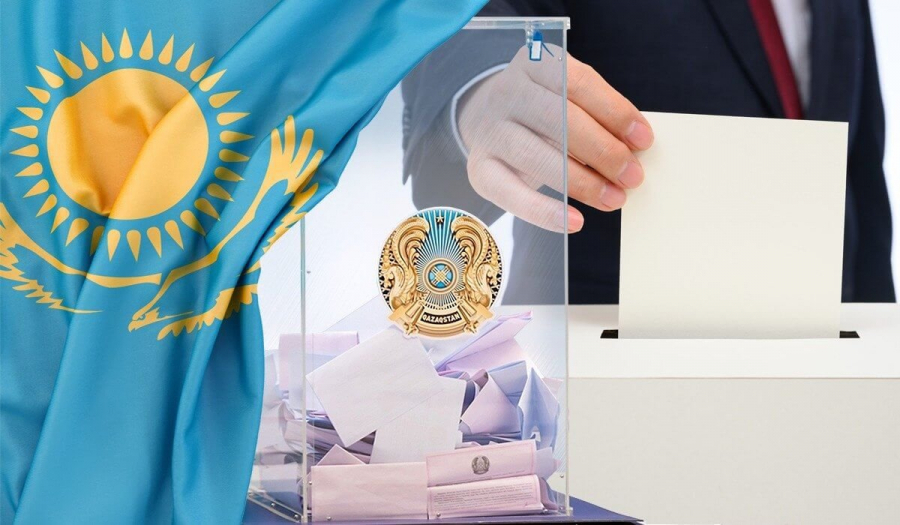
According to the official voting results at the republican referendum on June 5, 2022, the total number of citizens who had the right to participate in the referendum amounted to 11,734,642 people, of which 7,985,769 people or 68.05% took part in the vote. At the same time, 6,163,516 citizens or 77.18% of those who took part in the voting voted “affirmative” to the question put at the referendum. The number of citizens who voted “negative” to the question was 1,490,470 people. There were 205,924 ballots declared invalid. In the 17 regions, cities of republican significance and capital city, the citizens who took part in the voting voted “affirmative” to the question.
The referendum on the question “Whether you admit amendments and additions to the Constitution of the Republic of Kazakhstan, set out in the draft Law of the Republic of Kazakhstan “On amendments and additions to the Constitution of the Republic of Kazakhstan” published in the media on May 6, 2022”, is deemed to be effected, as more than half of the citizens eligible to participate in the referendum took part in the voting.
The Law of the Republic of Kazakhstan "On Amendments and Additions to the Constitution of the Republic of Kazakhstan", that was raised at the republican referendum on June 5, 2022, is deemed accepted, as more than half of the citizens who took part in the voting voted “affirmative” in the amount of at least two-thirds of the regions, cities of republican significance and capital city.
Religion
Modern Kazakhstan is a secular state. Kazakhstan has always been a place of contact between major world confessions. Provision of stability in society, revival and development of religious traditions in Kazakhstan is the result of a balanced and coordinated state policy aimed at ensuring freedom of religion, preserving social harmony and stability in society.
Despite the large number of different religions on the territory of Kazakhstan, majority of population is divided into Muslims who practice Sunni Islam and Christians who practice Russian Orthodox Christianity.
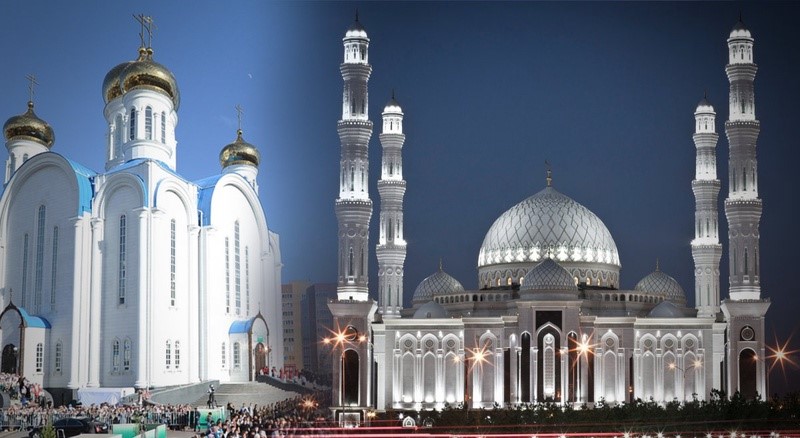
Currency
The national currency of Kazakhstan is Kazakhstani tenge. The currency put into circulation on November 15, 1993. It is the day of the national currency introduction into circulation that was declared the National Currency Day. November 15th is also a professional holiday for employees of the financial system of the Republic of Kazakhstan.
The national currency has its symbol (〒).
The most profitable currency conversion is in official exchange offices and banks. In Kazakhstan, credit cards are accepted almost everywhere. Recently, non-cash payments have become widespread in the country. In each city of the country, one can pay using popular applications and QR codes or wire transfer money. Cashless payment for any vehicle (air, taxi, urban transport) is also possible. Shopping, ordering food, paying bills, all those can be done online, one just needs to have a smartphone with an application installed to carry out financial transactions or have a card to be used with a portable POS terminal.
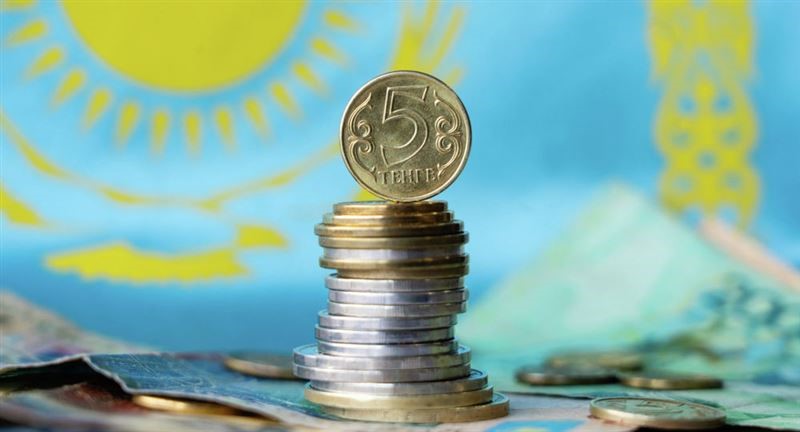
Network and communications
The telecommunications and communication sector of the Republic of Kazakhstan is represented by three areas: telecommunications, Internet and postal communications. Mobile operators are as follows: Kcell and Аctiv, Beeline, Tele2 and Altel. There are about 20 communication operators in the telecommunications market providing long-distance and international telephone services, Internet access and satellite mobile communications. Also there are 3 mobile communication operators.
Today, nobody has any doubts that digital technologies are an integral part of our lives, which results in accelerating its pace and making life easier for humanity. Particular emphasis is made to the development of digital industry in Kazakhstan. To develop the industry, the “Digital Kazakhstan” state program was adopted, which comprises a set of programs aimed at improving the standard of living of each resident of the country through application of digital technologies and provision of the population with ubiquitous access to the Internet.
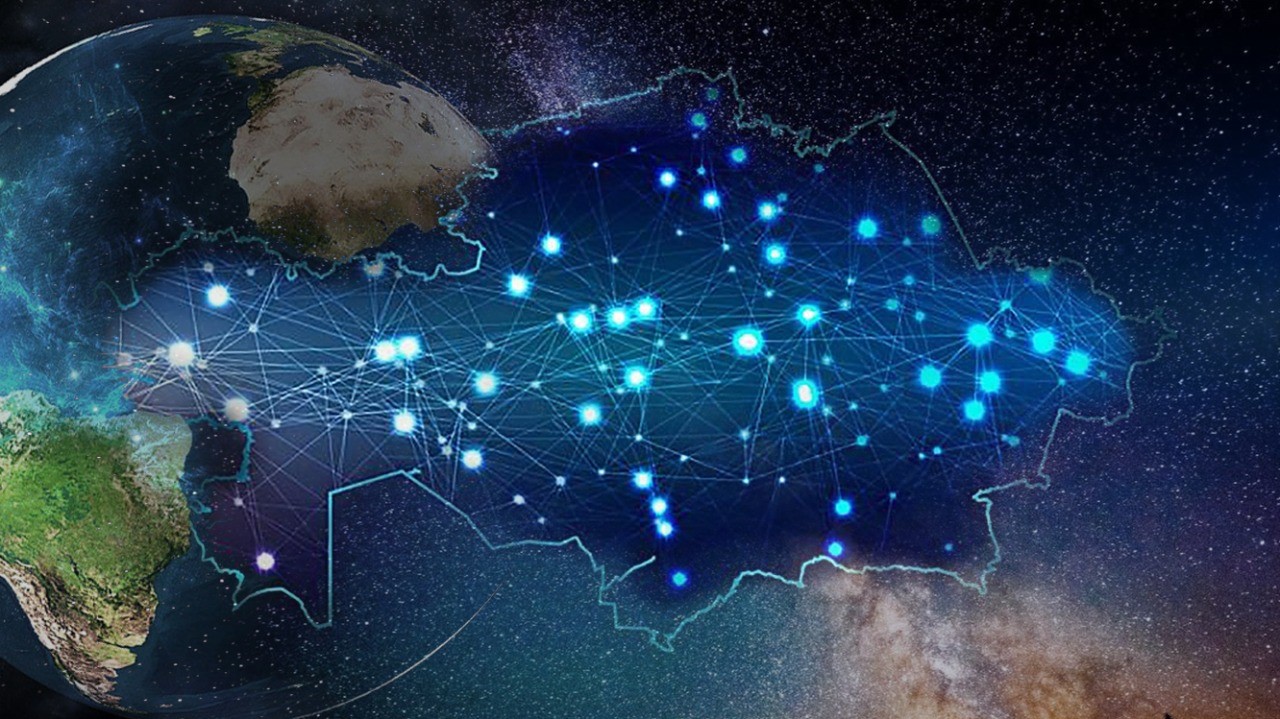
Currently, two major projects are implemented in the country to ensure further provision of high-speed Internet to rural localities. Upon implementation of the projects, all rural localities with population of 250 people and more will get access to the broadband Internet.
To date, the “electronic government” state program had been implemented in Kazakhstan. Thanks to development of information technologies, government agencies operation became more efficient, in particular when it comes to delivery of public services to the population and business entities.
Postal communication is one of the physical channels for provision of access to information and financial services to the population of rural areas. There are 3448 post offices on the territory of the country.
Useful phone numbers
- Police: 102
- Single Duty-Dispatching Service under Emergencies Department: 112
- Fire Control Service: 101
- Ambulance: 103
- Gas Emergency Service: 104
- Psychological Aid Service: 150
Three pillar cities in Kazakhstan to start your journey with: Astana, Almaty and Shymkent
Three metropolises: Astana, Almaty, Shymkent. It’s best to start from these cities to get a better understanding of Kazakhstan.
Astana is the youngest capital in Central Asia, for a quarter of a century the world witnessed how impossible has become possible, through work, relentless determination, and dreams of the Kazakh people - the new capital has confidently entered into the international arena with recognizable scale and magnitude.
Almaty (which means Apple City) is Kazakhstan’s first capital. This city is very modern and it has its own unique flavor, possibly that of apples? Almaty is a godsend for those travellers who prefer outdoor recreation: in an hour’s drive you can settle at the feet of majestic mountain peaks and, in the opposite direction from Almaty, you can find yourself taking in the view of desert landscapes with sandy canyons and songs of the steppe larks.Then, there is Shymkent and its natural beauty that is literally overflowing with monuments of history and culture. Here you can immerse yourself in the past to get in touch with the nomadic traditions and customs. So how about we dive right into all the possibilities that each of these cities and their surroundings can offer YOU!
Astana
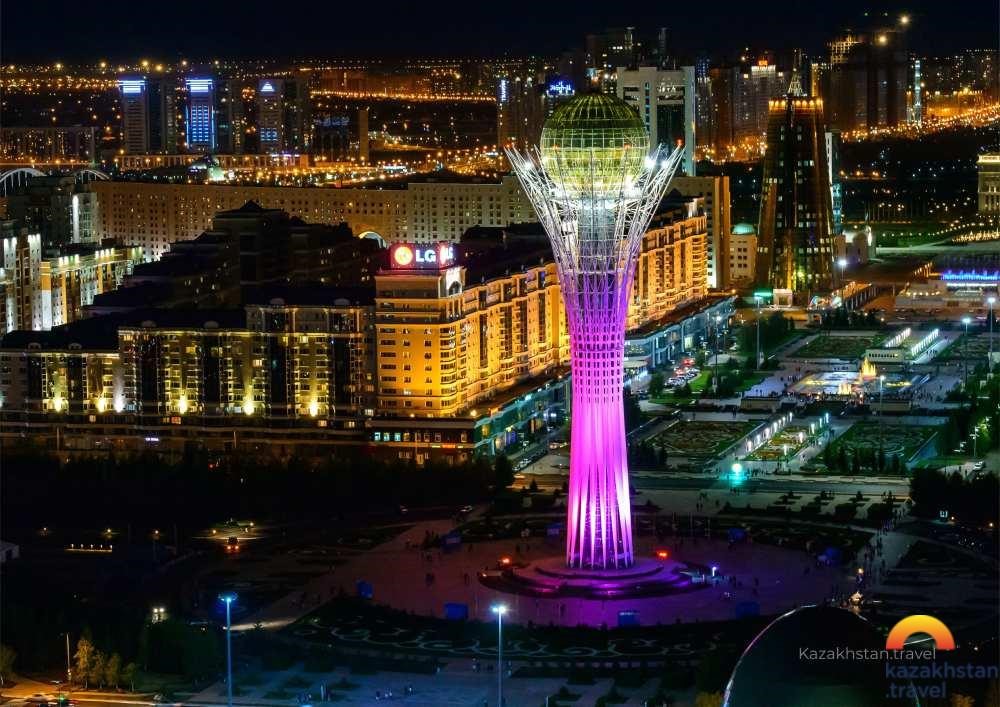
Astana, Kazakhstan's capital is located in the heart of the Eurasian continent, equally accessible and open to all directions of the world. The city attracts guests from all over the world with its unusual appearance and unique architectural design, as well as with its cultural and business events on a global level. It was here that the exhibition EXPO-2017 was a success and, coming soon in September 2019, the International Exhibition of Tourism Trade PATA Travel Mart 2019 in the Asia-Pacific region will also take place in Astana. Such events bring Kazakhstan even greater international fame and recognition.
There is also a lot of work is underway in Astana, to create a World Center for Nomadic Culture, capable of uniting all Turkic peoples from the Far East to Eastern Europe and, as a result, attracting more people of the Turkic nomadic culture as well as travellers from all over the world to the capital. All these initiatives definitely have positive effect on appearance of the capital of Kazakhstan.
An Asian flavor presented in a modern European manner will immediately delight and amaze anyone who decides to travel to one of the coldest capitals in the world. Despite the severe fame of its "capricious" climate, Astana always warmly welcomes its guests. There are many places to go and admire the jewels that are nestled in this wonderful city. Among the brightest sights of the city are:
Bayterek Tower, located near the central complex of government buildings. The image “Bayterek” (poplar tree, or the Tree of Life) is associated with an understanding of the world structure from Kazakhs. There are several variations of legends that your tour guides will tell you about. There is an elevator inside the “trunk” of Bayterek that will take you into a glass ball with the panoramic view. From here there is a wonderful view of the city and the surrounding steppe.
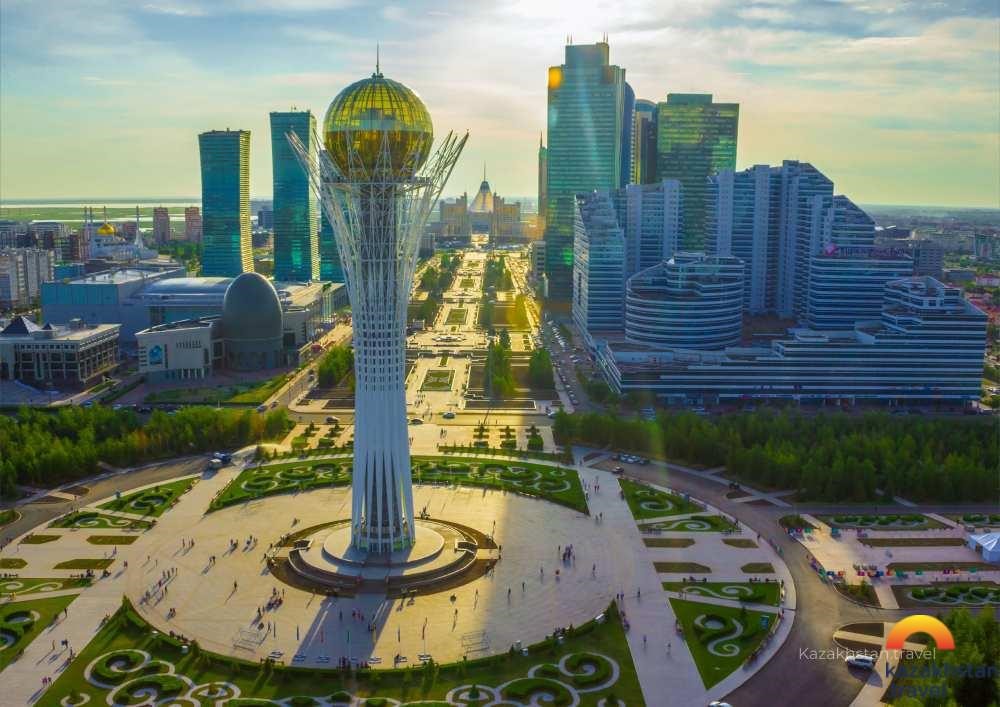
Atameken Ethno-Memorial Complex – is a miniature copy of Kazakhstan that fits on an area of two hectares.
Hazrat Sultan Mosque. The capacity of the mosque is up to 10 thousand people. Its dome of 51 meters high is the largest one in Kazakhstan. The building is equipped with four 77-meter minarets at its corners. Each minaret consists of several levels that are beautifully illuminated when nightfall comes.
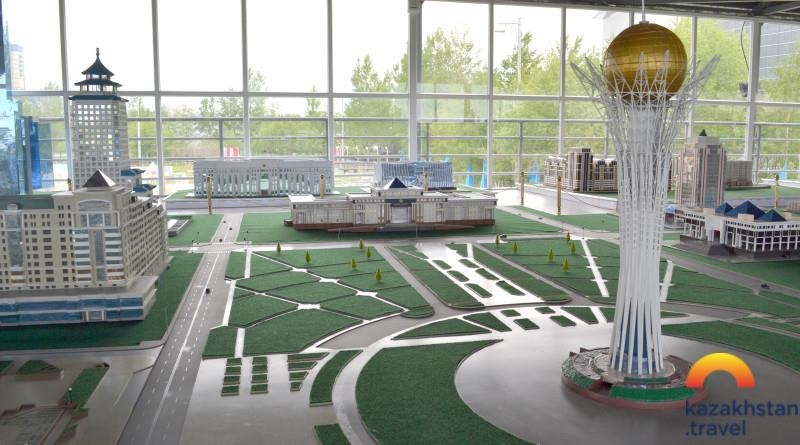
Mangilik El Triumphal Arch. The 20-meter arch symbolizes 20 years of independence of Kazakhstan. You can have a tour inside the arch enjoying its architecture with statues, visiting regular exhibitions and learning history of the city and the capital. Fantastic view from the observation deck at the very top will complete your tour.
Nur Alem Museum of Future Energy – is one of the brightest heritage sites of EXPO-2017. This is the only sphere shaped building in the world with a diameter of 80m! On top of Nur Alem there are solar panels and two silent wind generators that provide the pavilion with electricity. The building has eight floors, each with its own concept: «Future Astana», «Energy of the Space»,«Energy of the Sun»,«Energy of Wind»,«Energy of Biomass»,«Kinetic Energy»,«Energy of Water». The «National Pavilion» is located on the ground floor, at the base of the sphere.
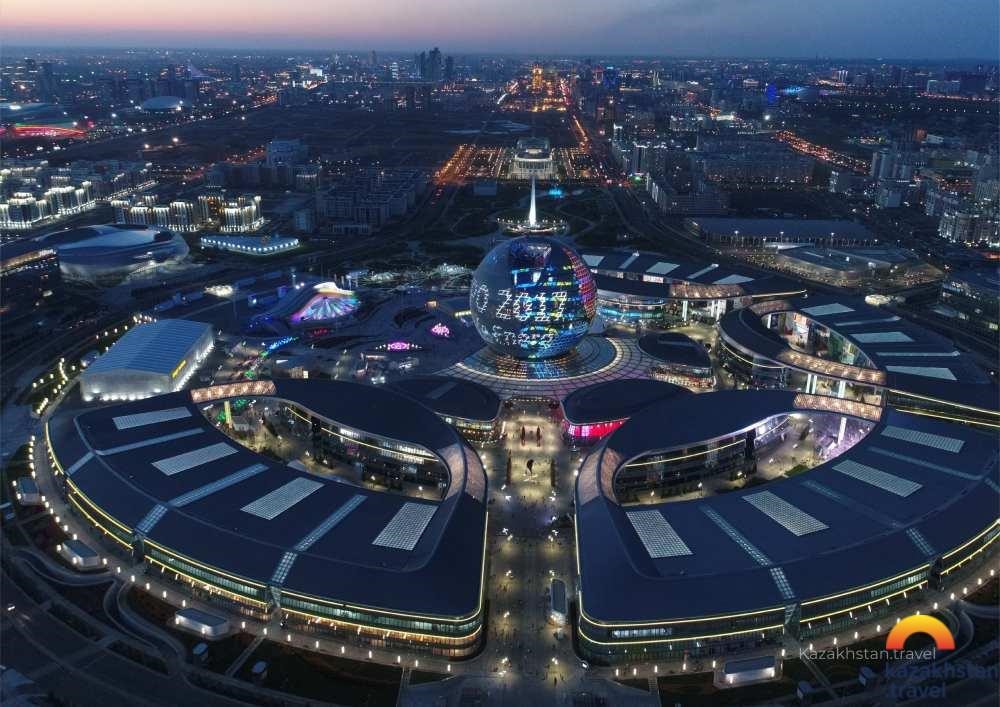
In the museum, visitors can familiarize themselves with projects introducing eco-energy usage in the capital. The main idea is based on the use of natural elements to produce energy: the sun, wind, and water.
The National Museum of the Republic of Kazakhstan is where you can literally touch history, see the state as it was and how it has developed into what it is today.
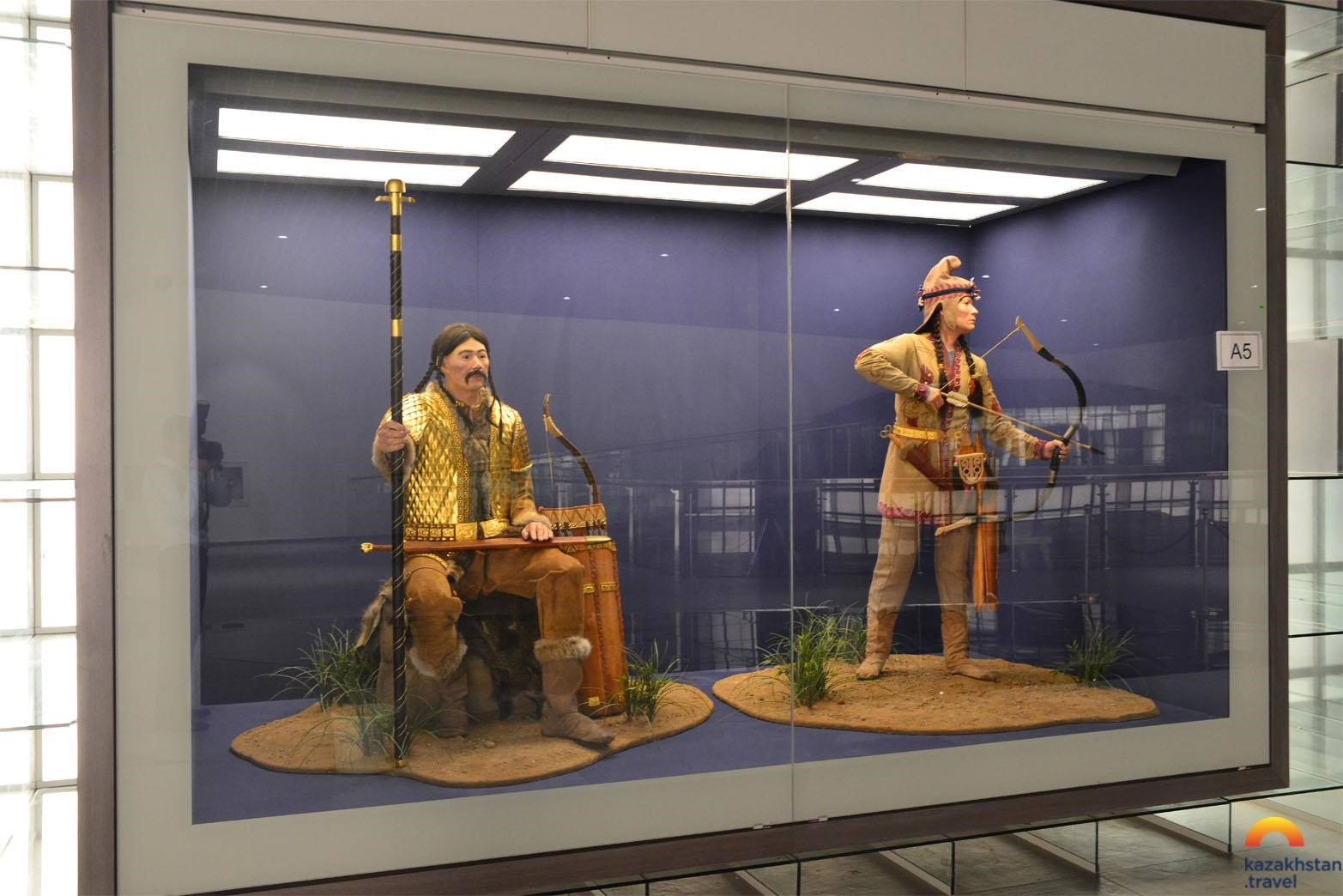
If you find yourself with some extra time in the capital and want to get a break from the city life, we recommend taking a short ride to Burabay Resort Area. It is considered to be the hallmark of the Akmola Province. Here you will discover the natural beauties that have been undisturbed by modern expansion. The recreational and therapeutic resources are exceptionally rich with the highest standards of quality. This is all but a stone throw away from the capital. There are three national parks - Kokshetau, Burabay, Buyuratau and Korgaljyn Reserve that have been preserved on the territory in the Akmola Province. These parks are more or less open to tourists. For example, there is a weekend tour to the Korgaljyn Reserve, located 130 km away from Astana. The Korgaljyn Reserve is included in the Ramsar List of Wetlands of International Importance. That is why main attraction of the tour is bird watching - you will see flamingos, krecheks, steppe jerks, curly pelicans, large spindles, black and white-winged larks and many others. More than 100 species of birds live there! Apart from the waterfowl inhabitants, there are also other exotic animals like, for example, saigas (a member of the antelope family), foxes, the steppe marmots, several species of gophers, and others.
The Kazakhstan Association for the Conservation of Biodiversity (KACB) takes the leading role in organizing such eco-tours with highly trained staff and guides. The staff have got specialized biological background therefore can answer any questions and provide more information, if necessary.
Almaty
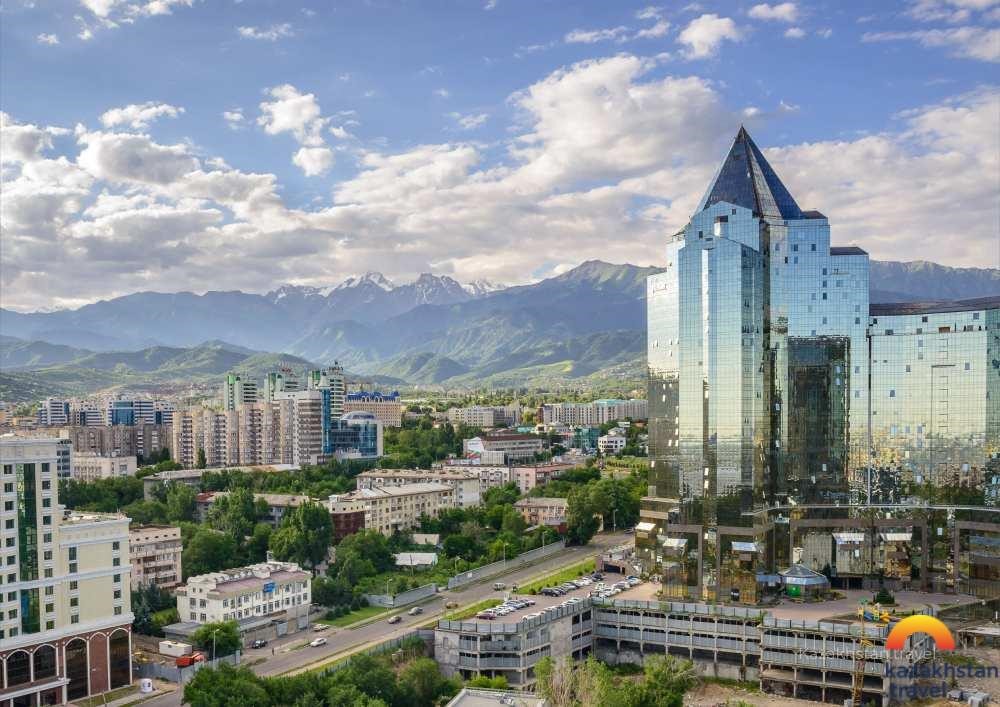
Almaty is a garden city surrounded by majestic mountains of the Trans-Ili Alatau covered with evergreen coniferous forest. So Almaty conquers the hearts of travellers at their first glance. This city is surprising with its scale - huge majestic modern buildings, endless green alleys and avenues, and all of this is surrounded by snow-white mountain peaks.
But Almaty would not be so cozy without its narrow old streets with pretty houses, interesting signs and stylish establishments (showrooms, restaurants, cafes) that give the city extra charm. The wide avenues are always noisy and crowded, but there in the streets you can feel a mad rhythm and the breath of the most successful city in Kazakhstan. On the streets of old quarters it is always much quieter. It often smells of fresh coffee, chocolate or buns from the coffee shops and pastry shops that line the streets. Here you can always refresh yourself with one of these wonderful delicatessens and go back exploring this immense city.Take a stroll through the city streets. Start your journey at Arbat Avenue walking further along Jibek Joly street. Take in the modern city architecture with the old traditional feel. You must also go to the Green Bazaar to get a taste of the amazing delicacies that it has to offer.
Practically located in the center of the city is the famous Botanical Garden of 105 hectares. Here you can completely get away from the noisy hustle and bustle of the metropolis that surrounds you. Enjoy a pleasant walk along the alleys of the Park of the First President. Watch the birds, squirrels and other permanent inhabitants of the botanical garden. Travel agencies in the city will offer you guided tours around historical and cultural monuments, various museums and exhibitions.
One of the most notable places in Almaty, of course, is Kok Tobe Park located at the peak of Kok Tobe Mountain at an altitude of 1100 meters above sea level. It has a lot to offer as an amusement park: from cable cars, ferris wheel, petting zoo, to the variety of attractions and restaurants. And it is only a five minute drive from the city center.If you have some time to spare, then you need to explore the sights of Almaty and the surrounding area!
First go to the mountains! Mountain resorts near Almaty. Thousands of travellers from around the world come to Almaty every year to ski or snowboard on steep snow-covered slopes. And we can see why: apart from magic beauty, these ski resorts are globally recognized with their modern facilities that meet international standards and with prices that you will find very reasonable for such type of services.
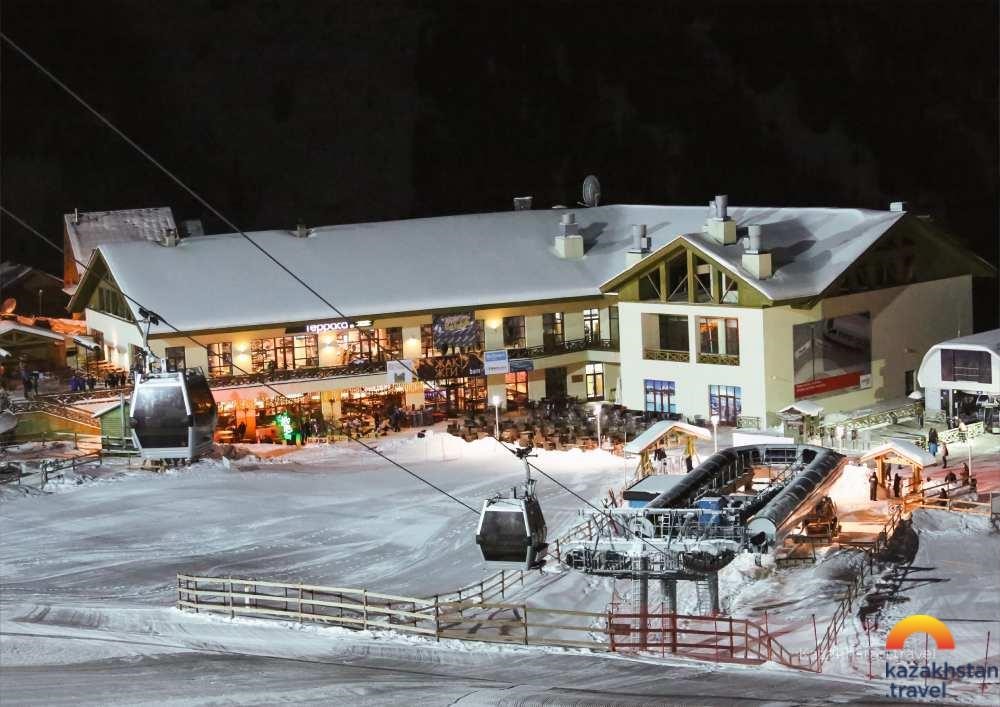
Then there are the Medeu high-mountain skating rink (you can enjoy it even in summer time) and the Big Almaty Lake, which rests in the coolness of the mountain gorges and various recreation areas. All of these are close to Almaty, and a day is more than enough to appreciate the marvelous nature of the Trans-Ili Alatau.
Now we will mention some of the most popular attractions located farther away from Almaty:
Kolsay Lakes and Kaindy Lake located on the territory of the Kolsay Kolderi National Park. These lakes make it worth going out 300 kilometers away from Almaty! You will be inspired by the charm of the mountain lakes as soon as you see any of them. The effect will rejuvenate your spirits and brighten your soul no matter what the weather is like. Experienced travel guides will help you along the route from the first lake to the third Kolsay Lake. As for the trip to the Lake Kaindy with its, so called, Lake Guardians - these are fir tree trunks sticking out of the crystal-like pure water of emerald colour - this needs to be a radial route journey.
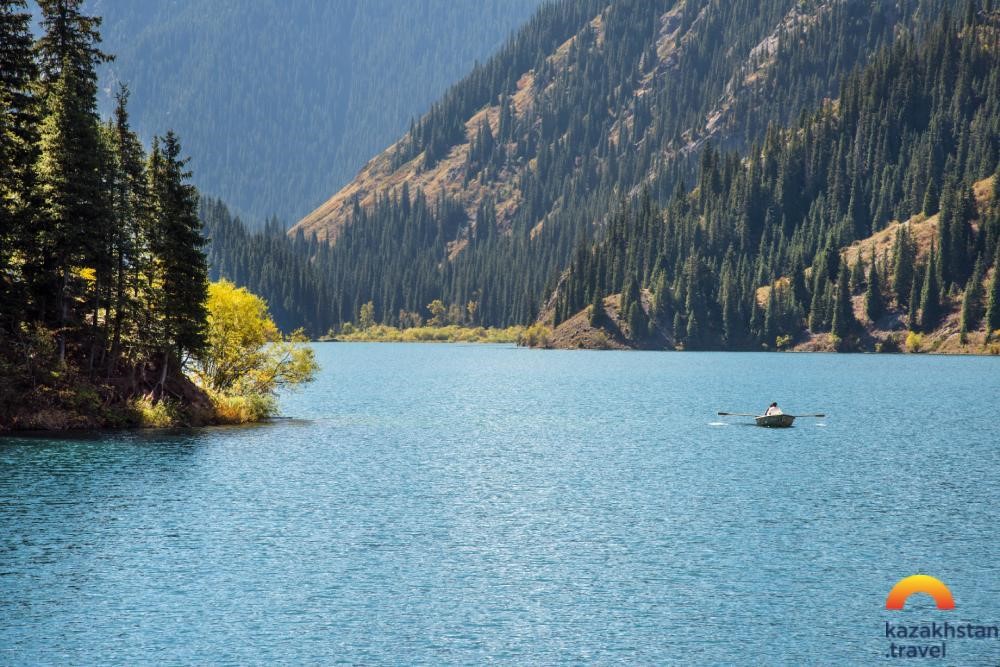
Charyn Canyon. It is one of the most amazing creations of the nature that is formed out of sedimentary rocks aged up to 12 million years ago! It is the second lengthy and biggest canyon in the world with its fantastic stone sculptures and quaint castles. Ash-tree Grove is another natural wonder with its three hundred-meter sheer walls that stretch for 154 km along the Charyn River hiding in their spurs.
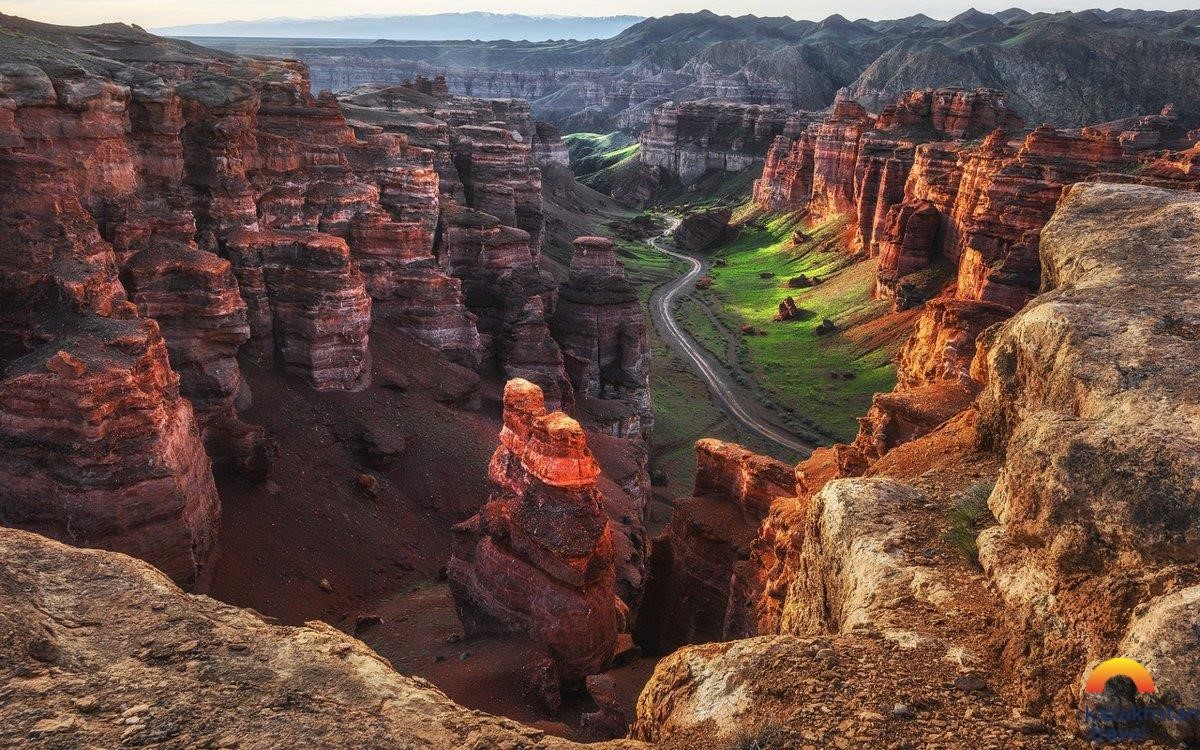
The Tamgaly Tas Tract: a touch of antiquity. One of the most significant examples of the rock carvings in Kazakhstan and all of Central Asia is included in the UNESCO World Heritage List. This is a place with the great energy, here you can hear the voice of a bygone era that existed for three thousand years BC.
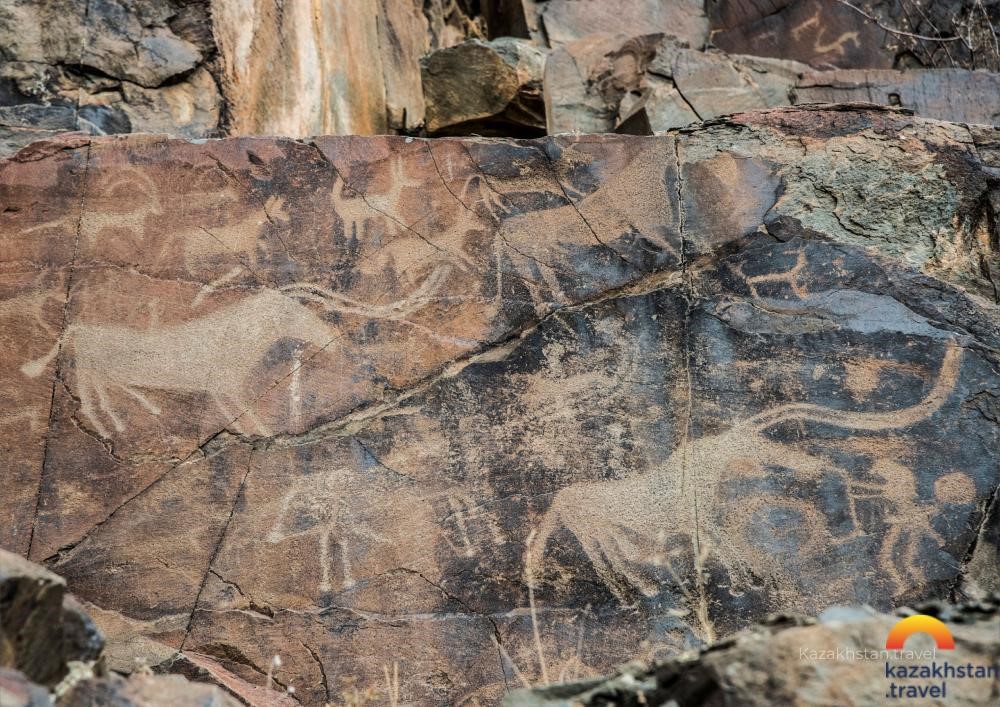
Altyn-Emel National Park. Here, on the territory of 520 hectares, are unique chalky mountains of Aktau (that date back some 400 million years!) stunning with their colors and alien forms; a little farther along, you will hear astonishing songs of the Singing Dune played by a miraculous union of the sand and the wind; and, in the steppe part of the Park, there is a complex of Saka burial hills called Bes-Shatyr - the historical heritage of the nomads. This list can go on forever when discussing the pearls of Almaty and its surrounding areas.
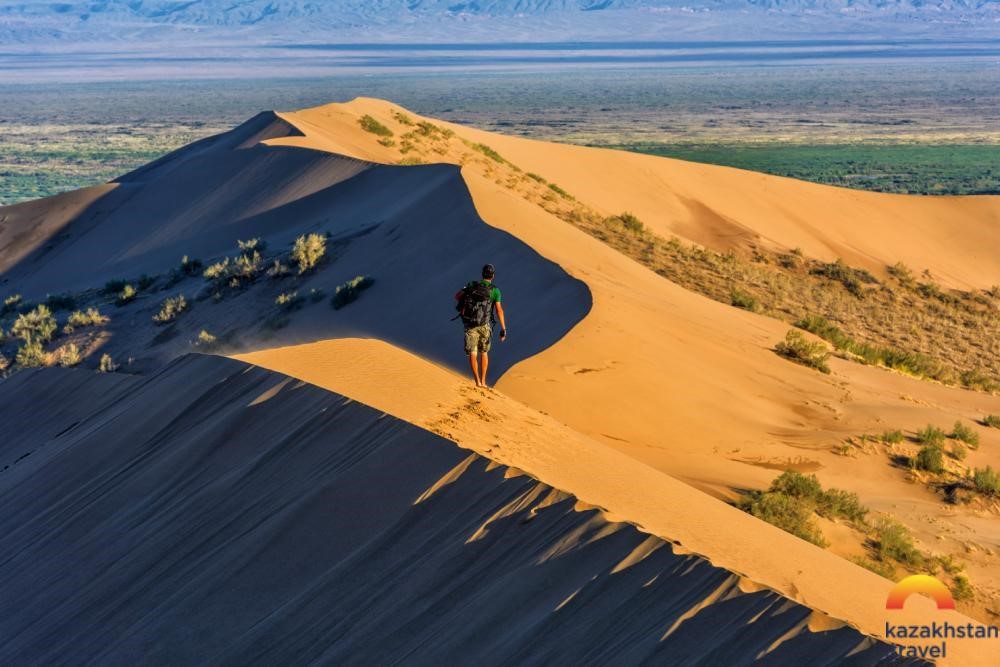
Shymkent
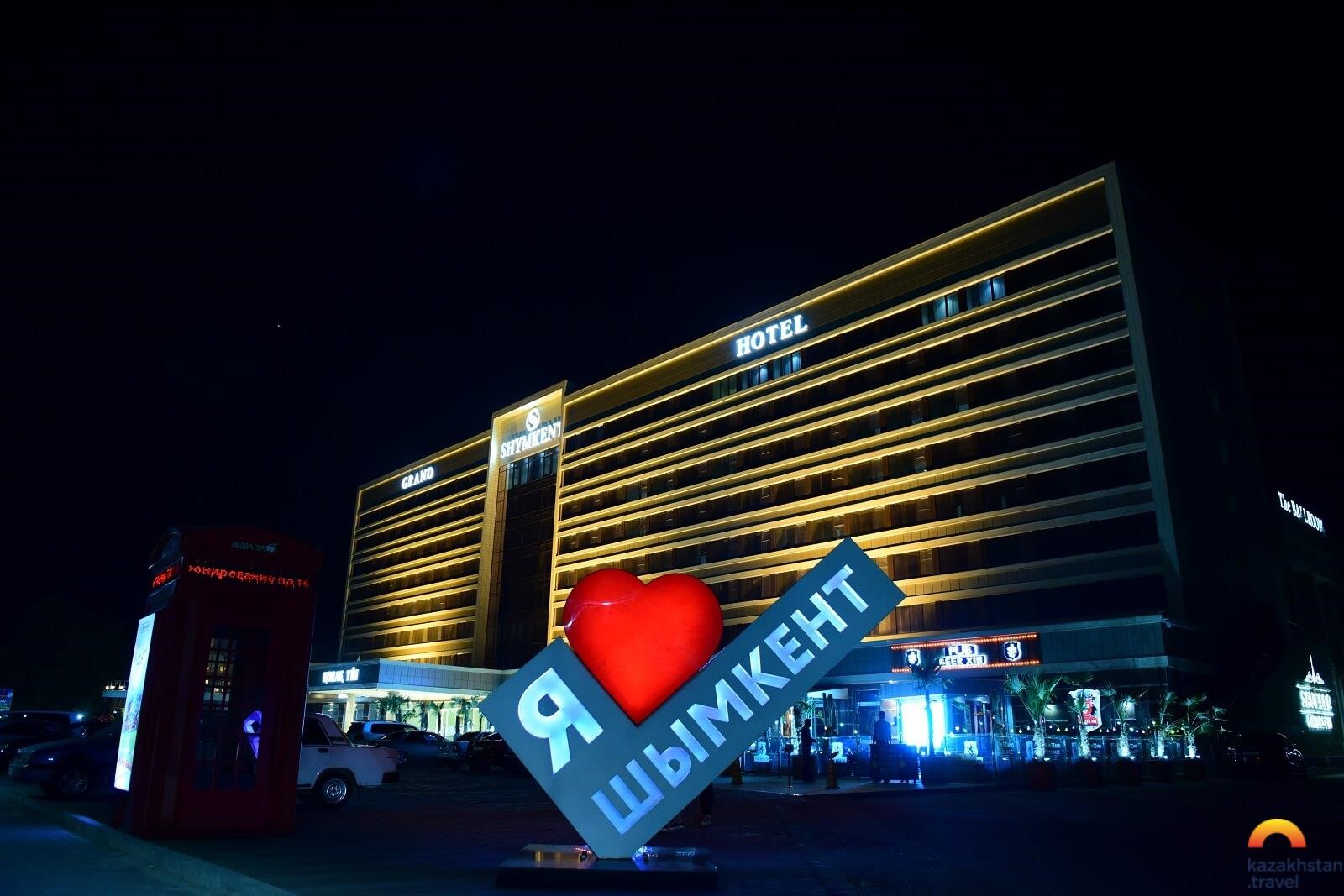
Shymkent is at the heart of the Silk Road, it is here, in this city, as well as in the entire Turkistan Province, that the cultural, religious, and historical sights of the Turkic peoples are most densely concentrated. Modern Shymkent will impress you, today this city is developing as an international transit center.
Ken Baba Ethnic Theme Park can be called one of the most popular places for leisure both for local people and the city guests. It is located almost in the city center, but, as you enter the main door and pass under a double-pitch roof, you will immediately find yourself in a different world – you will be surrounded by blooming greenery, swan reservoirs, fountains and even a waterfall! There are also an amusement park, a sand safari, an amazing miniature of Kazakhstan, a gallery of talented artists, a village of craftsmen, and countless souvenir shops and cosy cafes.
Then there is the Shymkent Zoo, which we highly recommend. Almost 2000 different animals live here in excellent conditions. In addition, there is a huge aquarium, where over 500 species of rare fish call home! We advise the most inquisitive to get into the Shymkent museum of local lore. Over the 40 years of its existence, a huge number of relics and valuable objects have been collected and preserved here, clearly showing the rich history of this ancient region. Then there is the Central Mosque of the city, this should leave you in awe. Since Shymkent is a very original, and fabulous city, it is simply necessary to visit its most famous religious center. The mosque is the largest and most beautiful in the area, striking in its scale and interior decoration.
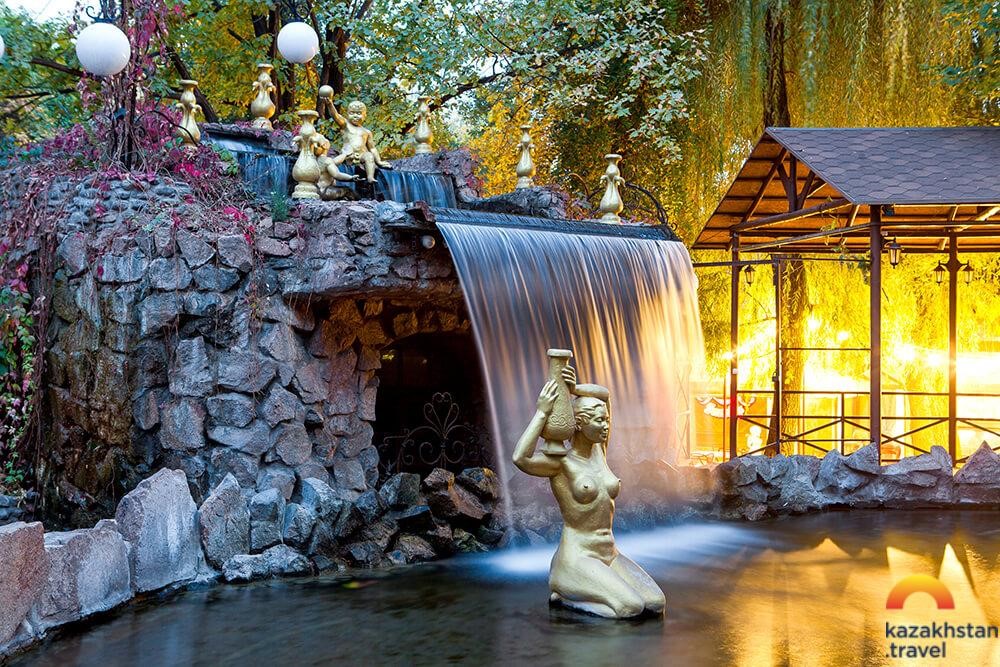
In order to feel real oriental flavor, one should go to the enormous and noisy Shymkent bazaars. The most famous of them are: the Upper Market, where you can find a riot of bright colors, the aroma of herbs and spices, endless rows of exotic sweets and fruits; Bekjan Bazaar, pleasing its customers with clothing for every taste and purse (there is a truly great selection of fabrics, yarn, and sewing accessories), and then there is, Samal Bazaar, attractively shimmering with elegant gold and silver jewelry.
Shymkent can become a point of reference for you on your trips to the historically significant places in the Turkistan Province, for which travelers and pilgrims from all over the world visit. Most of the attractions listed below are located where the Great Silk Road was once vibrant with trading post and roads.
Of course, first of all, we recommend heading to the city of Turkistan (about 170 km from Shymkent) where you will find a regional historical and cultural museum-reserve. The central object of the museum-reserve is the mausoleum of Khoja Ahmed Yasawi (famous theologian and philosopher). Also here it is worth making note of visiting the Mausoleum of Arystan Bab, a teacher and mentor of Ahmed Yasawi, which is a very popular place among pilgrims. In that area you will also see the tombs of famous historical figures of the Kazakh Khans: Yesim Khan, Ablai Khan, Abulkhair Khan and others.
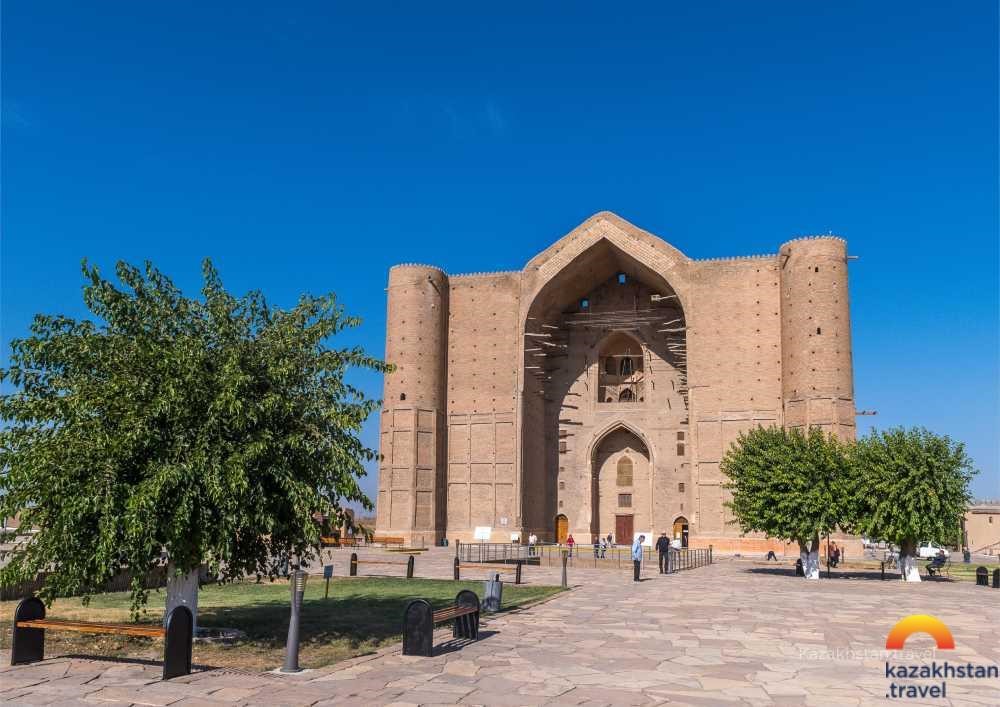
Domalak Ana Mausoleum. Located about 90 km from the city is a magnificent architectural monument of the XI century
The ancient city of Sairam. Just 10 km from Shymkent, is a large medieval city that was called Ispijab here you can see the excavations and remains of this great city that thrived thousands of years ago. Rich caravans that traveled on the Great Silk Road went through it, and it is here where culture and trade flourished.
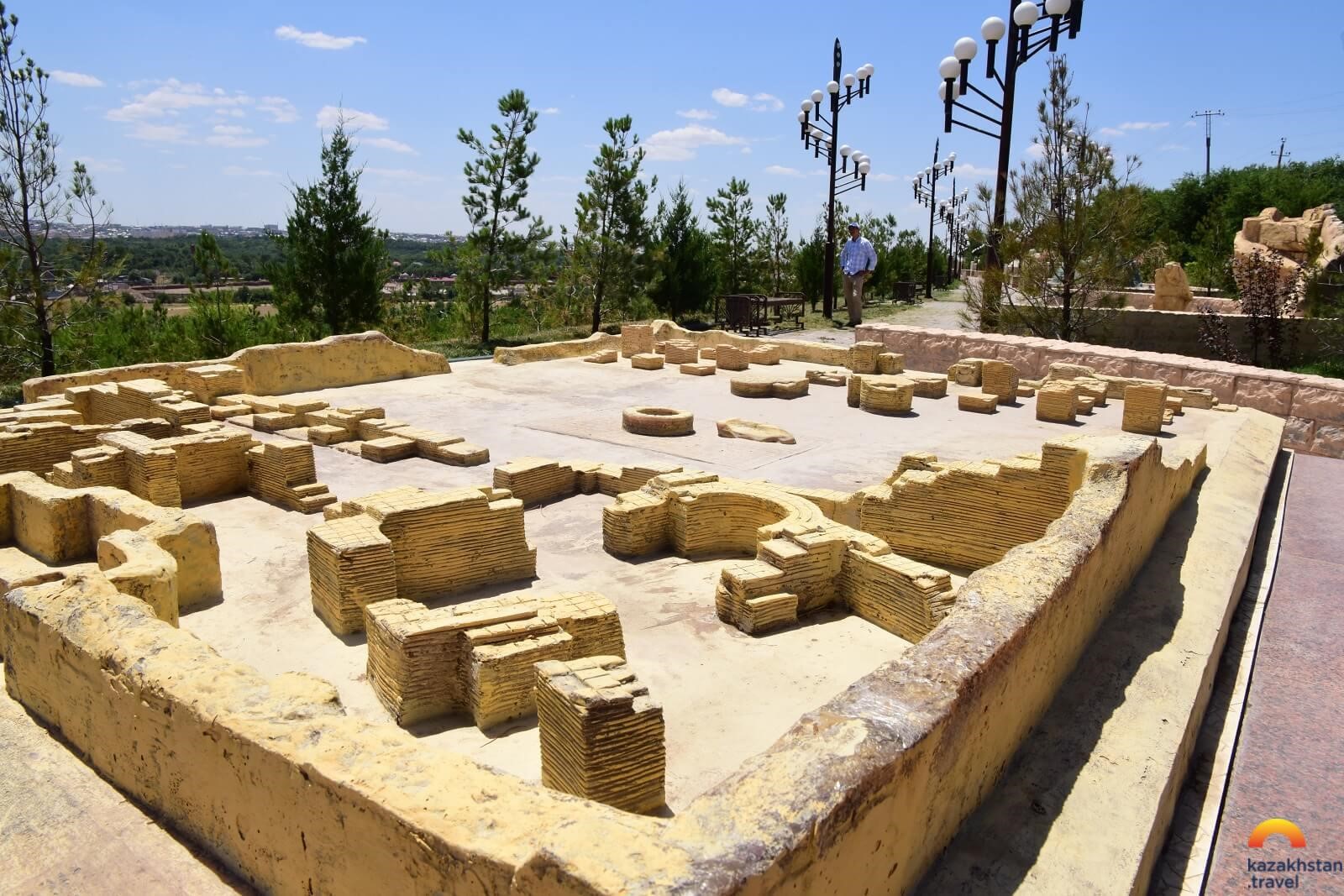
Minaret of Hızır. One of the most prominent figures in history reminds us of their existence in the ancient center of this nomadic civilization – here he has been immortalized - the minaret of the prophet Khizir, whose name is mentioned in the holy book of Islam, the Qur'an.
Ibrahim Ata Mausoleum. Majestic and very ancient, it is located in the middle of a green oasis, attracting thousands of pilgrims and travellers. The original building was erected in the XI – XII centuries in honor of the father of Khoja Ahmed Yasawi, but was destroyed under the influence of time. In the XVI – XVII cc. the mausoleum was rebuilt, making it one of the most prominent examples of medieval architecture.
Karashash Ana Mausoleum. It was built in honor of the noble mother of Khoja Ahmed Yasawi, whose kindness and wisdom earned her national love and respect. You can find it near the mausoleum of Ibrahim Ata.
Boraldai petroglyphs. Just 70 km from the city you can see a unique monument of the Bronze Age rock paintings. On huge stones along the bend of the river you will see all sorts of pictures depicted on them: hunting scenes, household scenes, and even tribal signs.
Akmeshit Cave. Can be attributed to a sacred place, where several thousand years ago there was an underground mosque. The passage to the cave was discovered only a few decades ago, when its dome collapsed. Now travelers and pilgrims in all their glory can see this amazing miracle of nature, with its own microclimate and ecosystem (trees grow inside the cave and even animals are found).
Kazygurt Mountain Range. Locals consider this massif to be the second cradle of mankind. Ancient legends say that it was here on this mountain top, that Noah's Ark was finally stranded. In the same place, where thousands of years ago stood the first ship in the world that saved people and animals from that universal flood, it is very plausible to see this model. It is best to complete your trip, by visiting the Ark in the evenings, since it begins to glow with the hundreds of lights, creating a very touching and at the same time mysterious atmosphere.
In addition, we advise you to visit the ancient city of Otrar and the ancient city of Sauran, but for this you need to have time, they are all far from Shymkent more than 100 km.
There are a lot of natural attractions that are worth seeing with your own eyes. Yes, Shymkent is surrounded by steppes, but there are nearby both rivers and mountains with canyons and caves. That are waiting to be explored
Birgolik Gorge.Just 50 km from the city stretches a majestic mountain range, impregnable and beautiful. At the foot of the mountain range and the gorges awaits the many recreation centers that were built for your leisure.
Sairamsu Gorge that lies on the coast of the Sairamsu river, here, you can comfortably settle in a recreation area, challenge yourself with a difficult trekking route that mountains have set for travellers, or just simply enjoy the river, while having a picnic with a beautiful view of the local scenery.
Upper Sairamsu Lake . Is at an altitude of about 3000 meters, a glacial lake with water of incredible color hidden from the eye, it is so blue and transparent that it seems as if it is illuminated from the inside.
P.S. We recommend that you use the services of travel companies. This will save you time and there you can learn in detail the rich history of the places that you will go or want to go (usually guide services are included in the cost of the excursions). In addition, in all major cities and regional centers of the country there are Travel Information Offices, that will be happy to help you to choose your travel destination, both in the city and in its outskirts!
Hardcore travellers are always attracted to outdoor activities, mountain treks, horseback riding and travelling to ancient historical places. But a vacation in a recreational resort will always be one of the most popular choices. Who doesn't like to relax by the shore with a bottle of chilled Corona, then go for a swim in the warm clear waters. To admire the beauty of a sunset, lying on a beach chair next to someone special with a glass of bubbling champagne. To unwind from the bodily stresses with a soothing massage. To have a mud bath or to bathe in refreshing waters of a magnificent spring. Have you already imagined this heavenly image? We've created a list of the top 5 places which will quench your thirst for recreational holidays and SPA vacations.
An optimal geographic location and the peculiarities of the local climate make Kazakhstan a nice destination for those who want to improve health. The country is home to several health resorts, and choosing the one that will meet your needs can be a challenge. In this article, we will take a look at the best resorts offering post-COVID rehabilitation, which are also suitable for those wanting just to recharge and revitalize their overall health.
Best Resorts in Kazakhstan
No matter where you choose to stay amongst the following destinations, you will not be disappointed.
Burabay Resort Area
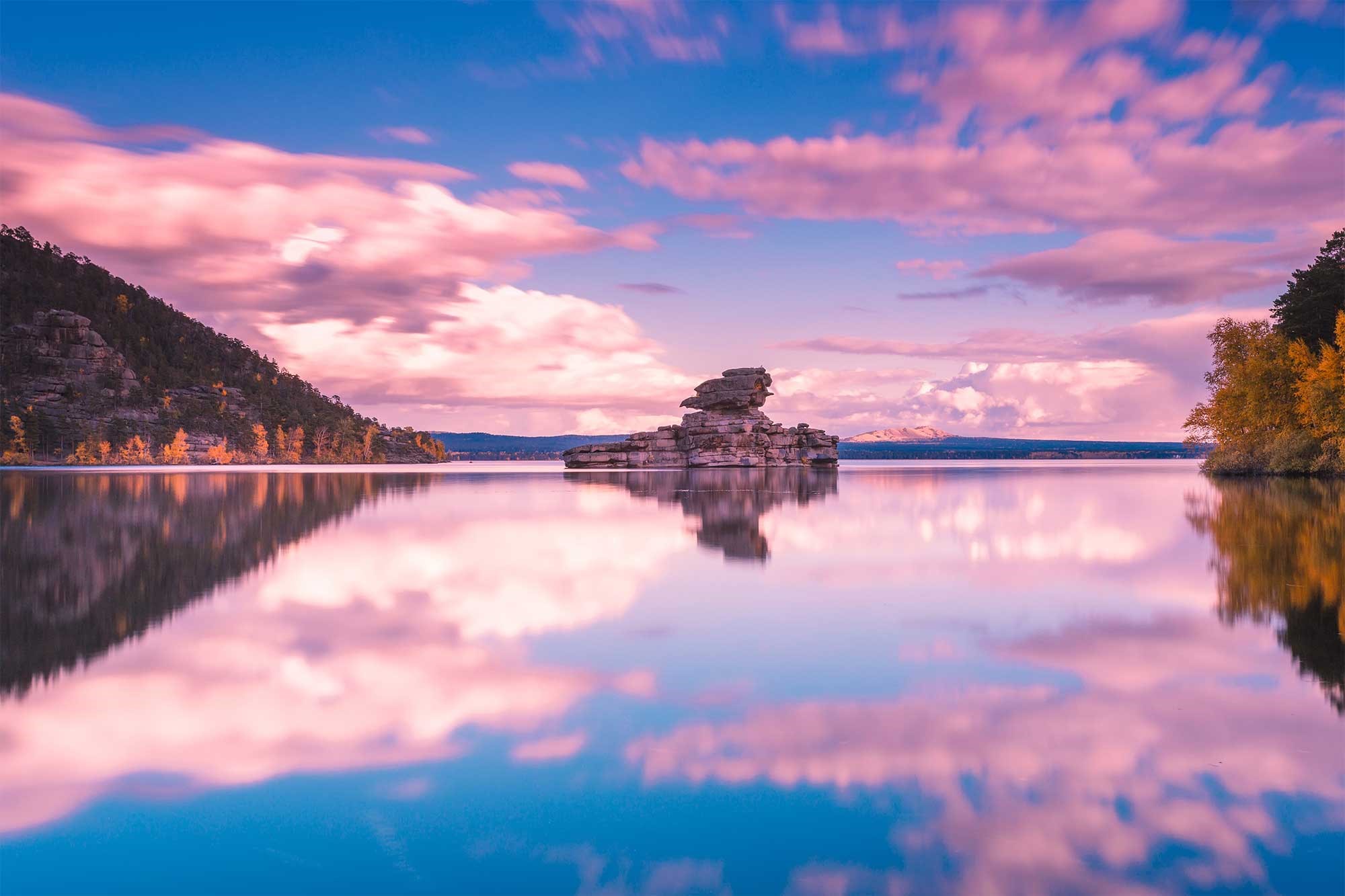
The top of our list starts with this true oasis for tired travellers. There are fourteen lakes famous for crystal clear waters infused with natural minerals and its miraculous mud that has certain healing properties.
There are a variety of choices when it comes to choosing your accommodation. From vacation houses to hotels to tourist camps, which are all situated around the banks of two large lakes – Burabay and Schuchye.
Both of the lakes are surrounded by high rocky mountains and coniferous forests filling the air with the scent of pinecones and the soothing smell of herbs and flowers. Swimming is allowed in the lakes starting from the beginning of June, when the temperature reaches a comfortable 29°C and warms the water of the lakes just right. The water is quite refreshing to the body, as the cool clear water from the springs in the mountains feeds into the lakes. So the water isn't relatively as hot as in the lakes of Balkhash and Alakol.
You can try bringing out your inner nomad while you enjoy Kazakhstan's national flavours in some of the few cafes and restaurants nearby that are full of the nomad spirit. These dining places mostly serve the national cuisine such as tender lamb with vegetables, dried horse meat jerky or just freshly cooked horse meat (Qazy). You would also get a chance to try Besbarmak which is horse meat with pastry and also the national dish with a glass of rich cultured yoghurt called Ayran; finishing off with some tasty fried pastries (Shelpeks and Baursaks) alongside a cup of flavoured tea with cream or milk.
This is a blessed place for those who want disconnect from the fast paced city life and enjoy a time of leisure alongside the wild, with a lot of swimming, mouthwatering food and astonishingly beautiful landscapes.
Saryagash
Saryagash, is a balneological resort, that is the right place for travelers to improve their health, while relaxing in a Spa. It is also worth mentioning that in the summer time it can get very hot there being that it is located in the south of Kazakhstan. Therefore, the moderate weather usually falls in the months from April to June and from September to November. Considering the heat and dry air as a factor, this may also contribute to part of the healing benefits, especially for those with skin diseases, arthritis, nerve disorders.
However, the true jewels of the Saryagash resort are the mineral springs – this is an outstanding preventive measure against hundreds of various diseases including inflammatory organs in body for example ulcers and so on. You can be assured that you will definitely like this place! The health centers offer accommodation with comfortable rooms and well balanced meals. Dishes in local health centers are usually healthy without fatty or fried food. Just in case, if you want to take a break from your healthy diet, with a little extra money, you can always find the national Kazakh and Uzbek food in local dining places.
In the health centers you will be offered a health improving regime that is designed specifically for your condition: mineral baths, body wraps, therapeutic massage, Charcot’s douche, liver and GIT cleansing etc. Some centers have swimming pools and gyms. In other words, all the necessary facilities are there to send you back home fresh and energized with improved health.
There are a lot of health centers, so you may choose any of these that suits your taste and try to book in advance. Also, it would be in your best interest to discuss your transfers with a travel agency.
Lake Alakol
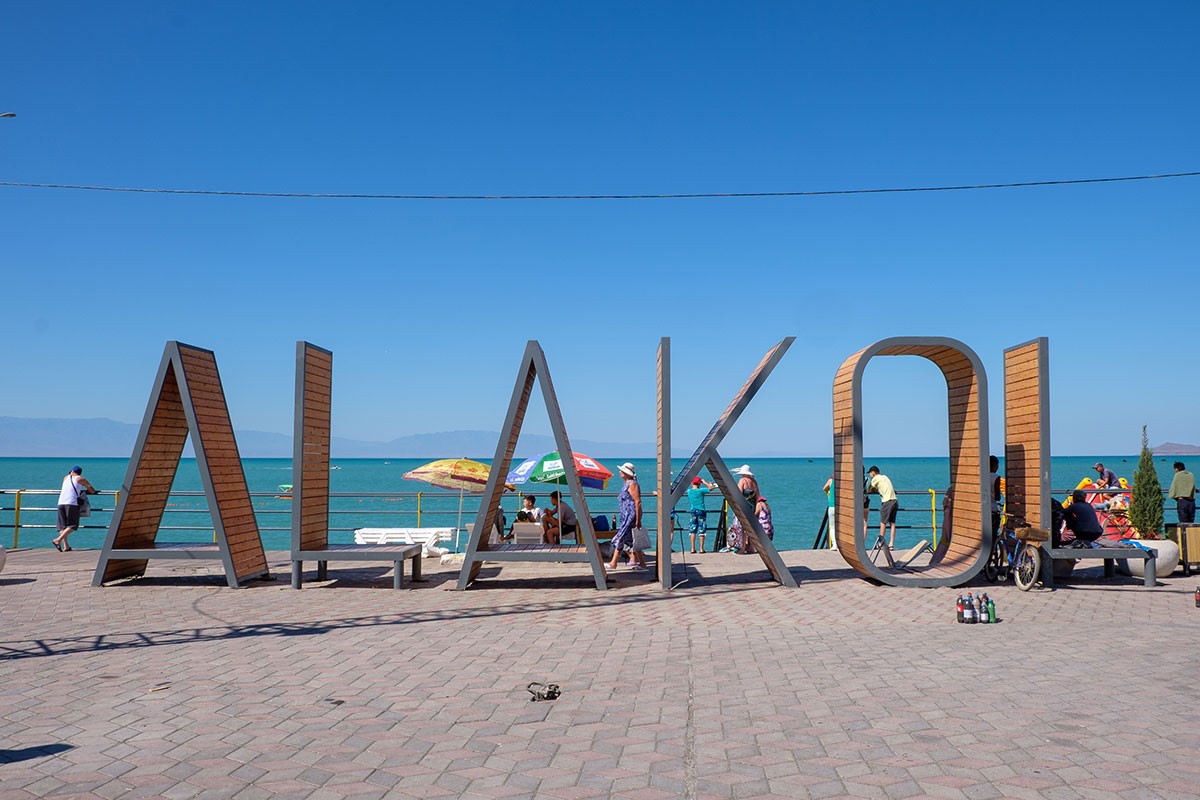
Lake Alakol is considered to be an unusual gift of nature that was given to the Kazakh people. You will never find such a beautiful coastal belt with perfectly polished black silicic gravel and black coal-like sand. Moreover, the lake water is constantly changing its colour from a milky white to a rich dark-blue shade. The pictures are much more astonishing than your imagination, and if you happen to see this coast in person you will definitely be amazed.
People come here to take a break from the city life and rest their minds, bodies, and souls, all the while combining the pleasant scenery with facilities for improving your health. Due to the different underground springs that feed the lake, the water is rich with chloride, bromine and radon that has positive effects on health. It is believed that the lake water can heal skin diseases and can hinder the progress of arthritis.
The lake is located in the Almaty and Eastern Kazakhstan Provinces so it is said to have the southern and the eastern shore. If you come to the lake from the side of Almaty, then you may find hotels or tourist camps either in Akshi village or Koktuma. We must mention that, it is more expensive to stay in Akshi than in Koktuma, but the quality of service in Akshi is better:
- Akshi village has a tourist zone status
- Local beaches are wider and cleaner
- There are many beautiful hotels and recreation zones with all the necessary entertainment facilities
Koktuma is a cheaper option and it offers two lodging types: one in a tourist camping site or a room in a guest house. Some people prefer to stay overnight in a tent or in their own camping car. The eastern shore is almost equal to the southern part – the same perfectly polished hot silicic gravel, bright waters and fresh air with sea salt – apart from the coastal belt. The coastal belt in the eastern part of the lake is much shorter.
Today the tourist infrastructure in Alakol area is improving year by year and that’s why there are so many choices from hotels, to health centres, and guest houses, that are accompanied with various levels of comfort including entertainment in your leisure time. So the choices are yours!
Eastern Kazakhstan SPA: Radon Springs and the Pantotherapy
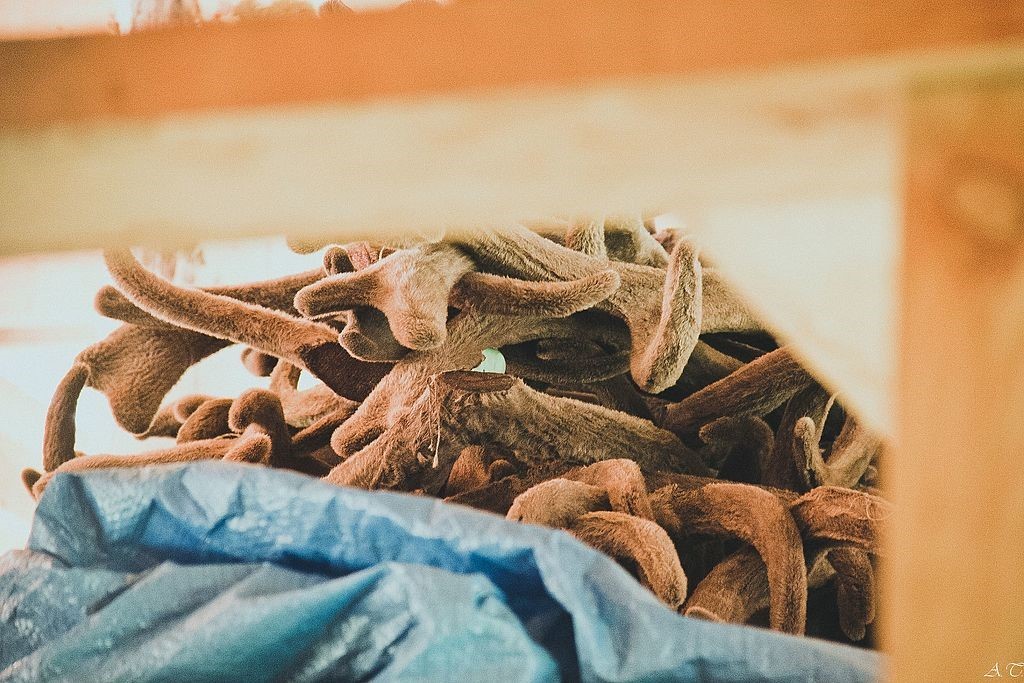
Let us travel from the mineral waters of the Lake Alakol and its healing spas, now onto a vibrant different type of SPA recreation. Bathing in Radon Springs while taking part in the health procedures that the Rakhman Springs Resort has to offer. Just imagine, in the very heart of the Altai Mountains. There is one of the highest peaks of the world - the two-peaks Belukha Mountain rises high into the clouds. The legendary Rakhman Springs Resort and other balneological resorts are located all in this one region as well. So for the tired traveler dreaming of relaxing and doing it with the intentions ( or not) of improving their health, this is the place where you need to make a stop along your travels. What is there to do? There is free bathing in the basins that are naturally filled with the water from Radon Springs: you will bath or sit in a tank that constantly changes the Radon water while maintaining its natural temperature helping release its beneficial properties. The water temperature naturally differs from spring to spring so it is possible to choose water temperatures that are suitable for every individual’s needs.
In addition, the resorts also offer the following types of services: hydro massage, hydro and physiotherapy, mud baths, different body wraps, thermotherapy, simple massage and massage shower.
On top of all this, there is a tranquil and natural beauty that surrounds the resort: here the forests are abundant with juicy berries, mushrooms and herbs, not to mention the most obvious, the lakes and waterfalls.
Now for a special and rare treat we have the ‘Panto’ treatment, i.e. treatment with antlers. The most unusual and exclusive offer, which also includes antler baths, is available only in the Eastern Kazakhstan, and is focused on improving health. These procedures are offered starting from the end of May and last all of June, this is the time when young marals’ antlers cutting happens. Special brew is made from the antlers and is then added into the baths. The body receives lots of useful elements through the skin cells and antler baths are believed to accelerate this process of stem cells’ growth, in the form of body regeneration, and body tissues’ rejuvenation. These baths are available only in specialized maral breeding farms in Katon-Karagay area. There are several Panto health centres in this area. With all of the resorts their main purpose is the same, to improve your health but what may differ is the level of comfort and opulence that you will find from place to place. So you may choose any farm that suits your budget.
SPA Recreation in Almaty Province
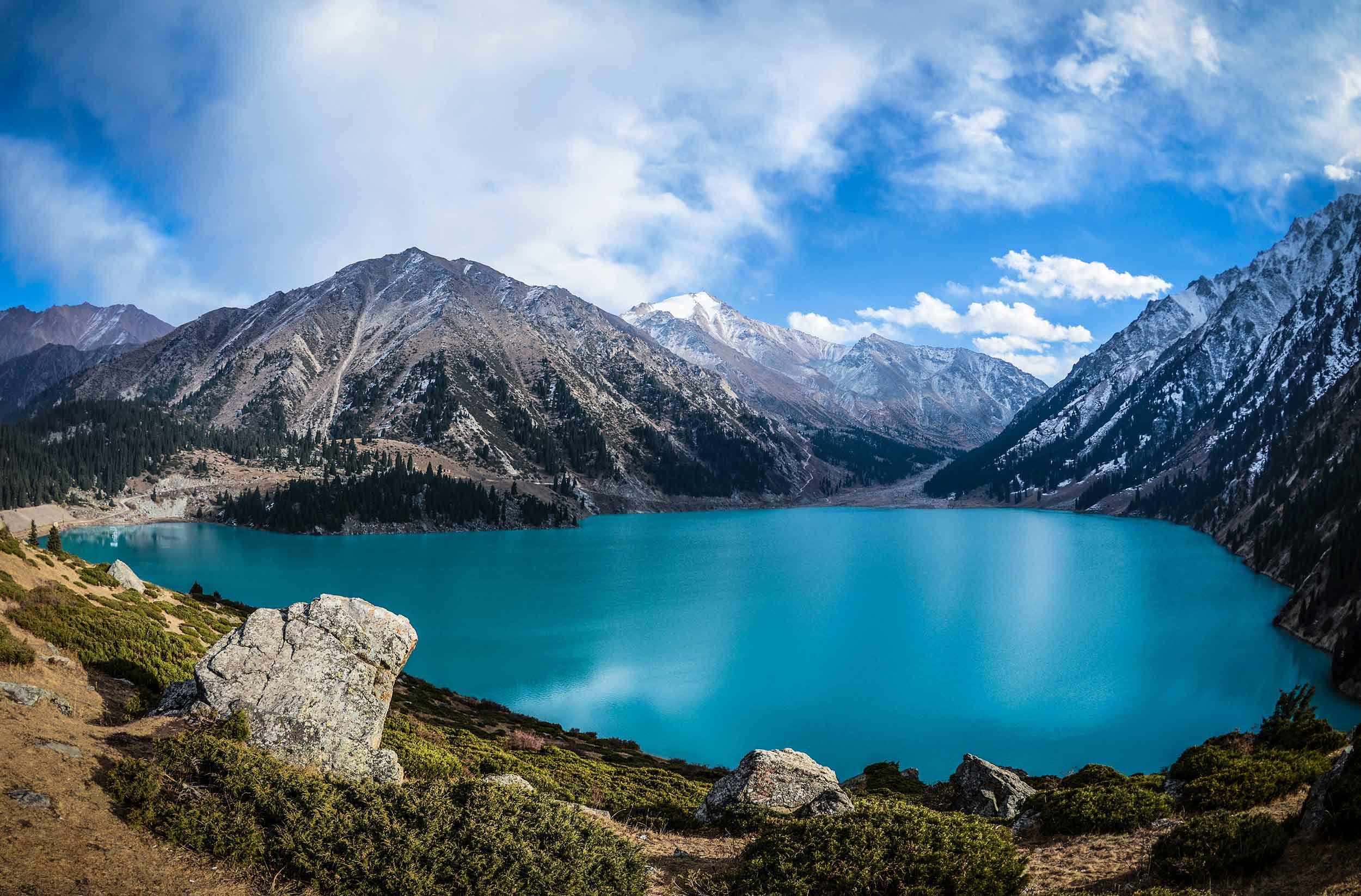
There are many interesting places in the Almaty Province for a day or two at a SPA. This is the perfect choice for those travelers that are trying to stay in warm water under the sun, or maybe have a mud bath or get a massage from a talented certified best massage in Almaty therapist with medical background experience. Many of the health centers offer treatment with mildly sulphidic mud of high quality, bathing in mineral waters, time in cryosauna, professional cosmetological and aesthetic medical services. Not far from Almaty there are recreational centres and natural entertainment parks with a wide array of choice for the many different health procedures: from mud bathing to ionized water treatment. All these resorts are located in the picturesque forest area with a breathtaking view of the mountains and lakes. Your hardest decision will be which resort to choose that will fit into your budget while satisfying your taste! We are sure that this type of vacation will take you into a state of pure peace and bliss while you relax and rest.
We hope that our articles will help you and guide you into finding the right destination for your next vacation. Wherever you choose to go in Kazakhstan just know that you won’t be disappointed.
Top 10 health resorts in Kazakhstan offering post-COVID rehab
Fresh air, mineral springs, and healing mud will help bring those affected by the coronavirus back to health
An optimal geographic location and the peculiarities of the local climate make Kazakhstan a nice destination for those who want to improve health. The country is home to several health resorts, and choosing the one that will meet your needs can be a challenge. In this article, we will take a look at the best resorts offering post-COVID rehabilitation, which are also suitable for those wanting just to recharge and revitalize their overall health.
Southern Kazakhstan is home to the Saryagash Resort Area, famous for its mineral springs which are believed to treat inflammation, boost the immune system, and have an overall positive effect on the human body. Most resorts are located in the village of Kokterek. Weather-wise, spring and autumn are the best seasons for visiting; however, those with certain skin diseases that can be cured by sun exposure should come in summer.
East Kazakhstan Province is home to a pantotherapy center specializing in using extracts from the antlers of young stags for medicinal purposes. Also, the Katon-Karagay thermal radon springs, located in the region, help in the treatment of various endocrine diseases. In addition to therapy, the resorts offer mountain hikes, horseback riding tours, and other fun activities. The region’s nature is strikingly beautiful all year round, and each season has something special to offer.
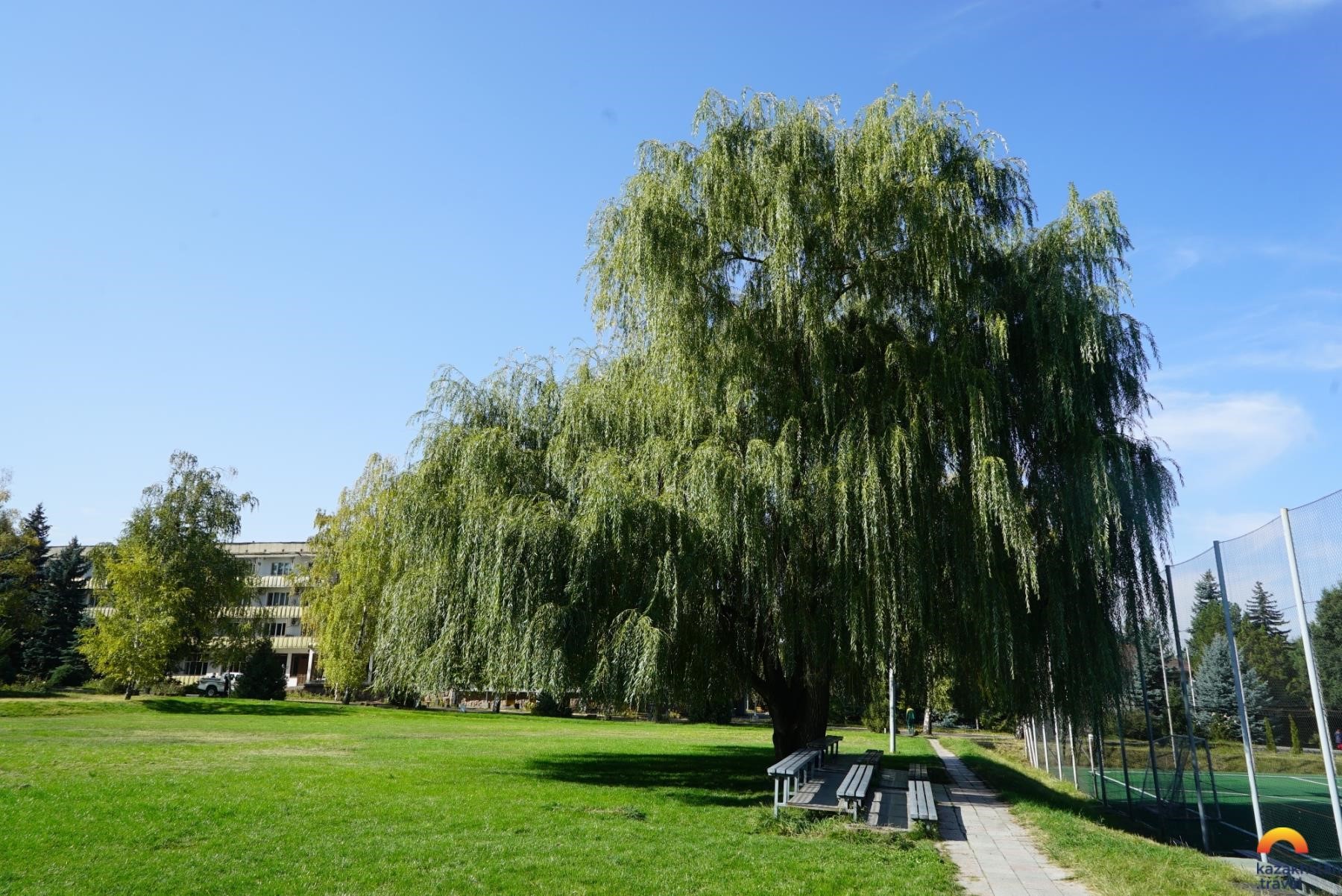
Medical spas in the western regions of Kazakhstan specialize in the treatment and prevention of joint diseases, nervous system disorders, gynecological and urological conditions, and skin diseases. Here visitors can get treatment with mineral baths, dirt applications, and other types of natural therapy. The resorts located on the banks of the Ural River are particularly famous for their unique mud.
The clean air of Burabay and Kostanay's pine forests, healing mud, and unique natural attractions make North Kazakhstan another one of the most sought-after resort areas. Here you can enjoy balneological spas that offer kumys therapy (a mildly alcoholic drink made from fermented mare's milk, said to have therapeutic properties), mud therapy, and antler baths that help heal cardiovascular and nervous systems, digestive organs, the respiratory system, and joints.
Most resorts operate year-round. Outside the high season (during the cold months of the year) the prices are usually lower. From November to March, the aforementioned resorts are perfect for fans of winter sports and for those who prefer to avoid crowds, which is especially relevant nowadays.
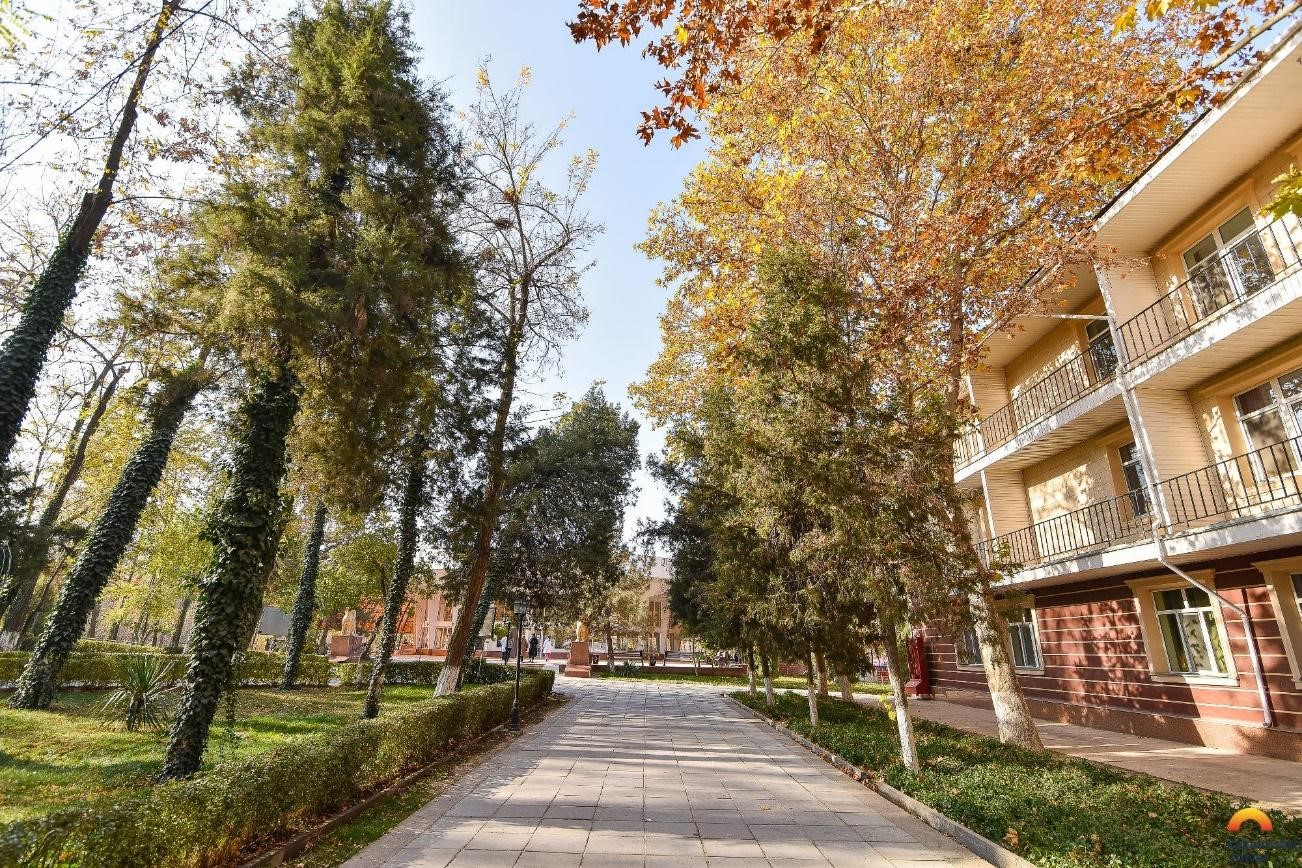
As the coronavirus may trigger chronic diseases, an individual rehabilitation program is developed for each patient. Due to a growing demand for post-COVID rehabilitation, the National Resort Association of Kazakhstan has listed the ten best health resorts for recoveries:
- Altynay Resort, Kazakhstan KZ Resortand Mankent Resort in the Saryagash Resort Area in Turkistan Province;
- Merke Radon Resortand Aisha-Bibi Resort in Jambyl Province;
- Kazakhstan Resortand Altyn Kargaly Hotel-Resort in Almaty;
- Almaty Resort, located only three kilometers away from the city of Almaty, at the foot of the Ile-Alatau Mountains;
- Nurbergen Health Resortin West Kazakhstan Province; and
- Shipager Health Resortin Aktobe Province.
High-level service and a developed infrastructure provide a comfortable and safe rest for all who wish to recover.
Why is Kazakhstan worth visiting? Check out our list of reasons!
Kazakhstan – the motherland of tulips
You may be surprised to know that Kazakhstan is a motherland of tulips, not Netherlands. In comparison to the Netherlands, where people gather to see the annual show of these dainty beautiful flowers, tulips in Kazakhstan grow and bloom in the wild without human intervention and cover vast areas. Here you can see about 40 of 65 different types of wild tulips existing in Central Asia, and 18 of them have been listed as an endangered species. Shrenk’s and Greig’s tulips, considered as one of the most beautiful, are also amongst them.
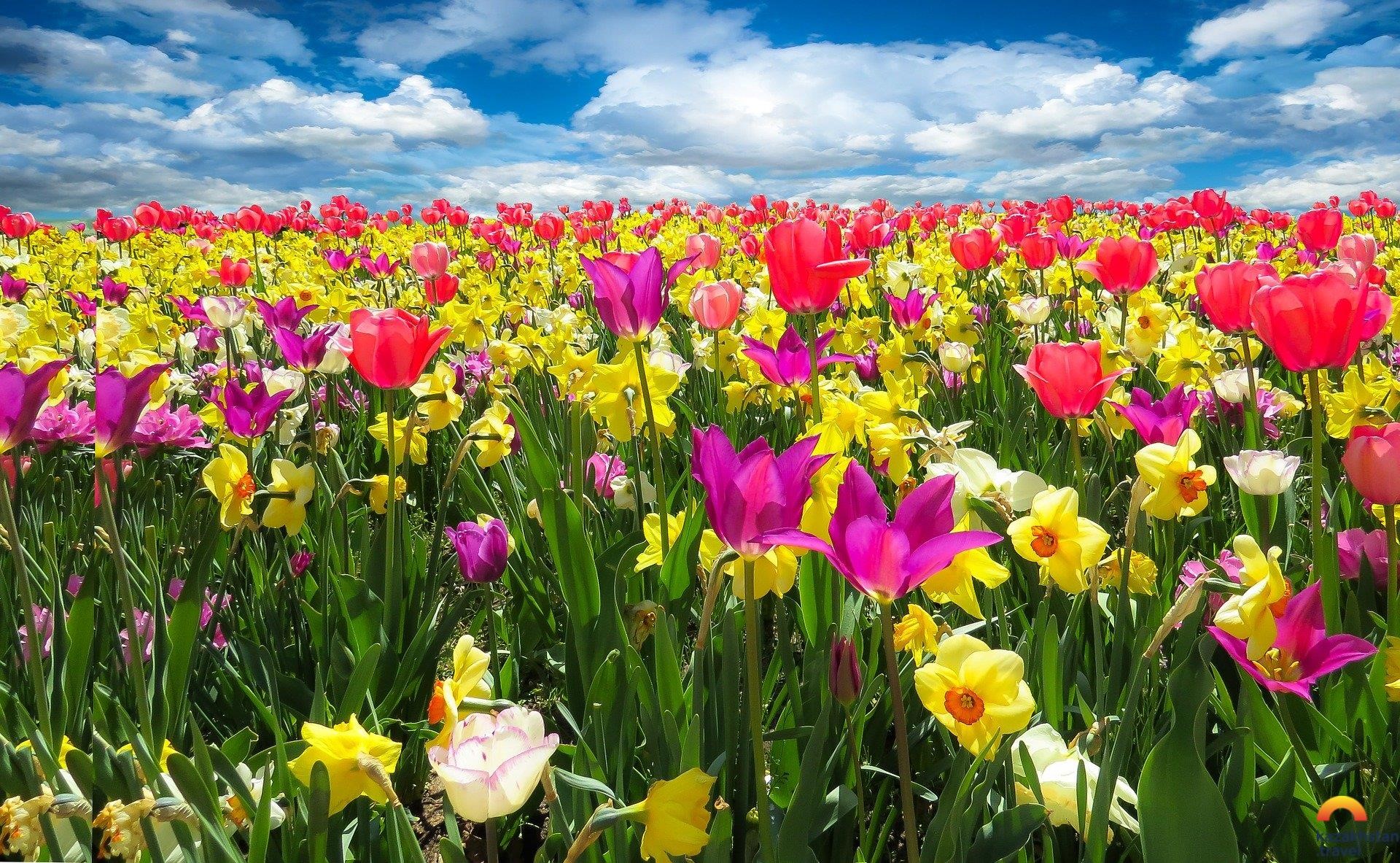
From April to May scarlet orange and yellow flowers cover boundless fields and foothills of Jambyl, Turkistan and Almaty Provinces. You can observe these beautiful splashes of colors while travelling long-distance by highway from the south of Shymkent to Almaty. With the help of experienced tour guides that are there ready to help you locate the best spots to site see and explain the many species of tulips. For example, the Dasistemon Tarda tulip grows in the mountains and in the Alpine meadows, while endemic Kaufman tulip grows in the green fields of the West Tien Shan among the juniper forest.
To pick tulips is forbidden in Kazakhstan, but you are welcome to admire them in an unusual and aromatic nature whenever you would like!
Otrar is the best place for taking selfies
Turkistan is often visited and is known by a number of pilgrims and travelers. There you can see one of the most majestic and medieval constructions in Kazakhstan, the mausoleum of Khoja Ahmed Yasawi. But not many know that there is another amazing site - an ancient city of Otrar, which is on the way to Turkistan, if you are coming from Shymkent.
Scientists and archeologists have still been studying Otrar. Most of the ancient town’s construction has been restored and preserved. This is one of the few historical places in the country, where you can walk through ancient streets and capture some really interesting photos and a few selfies too.
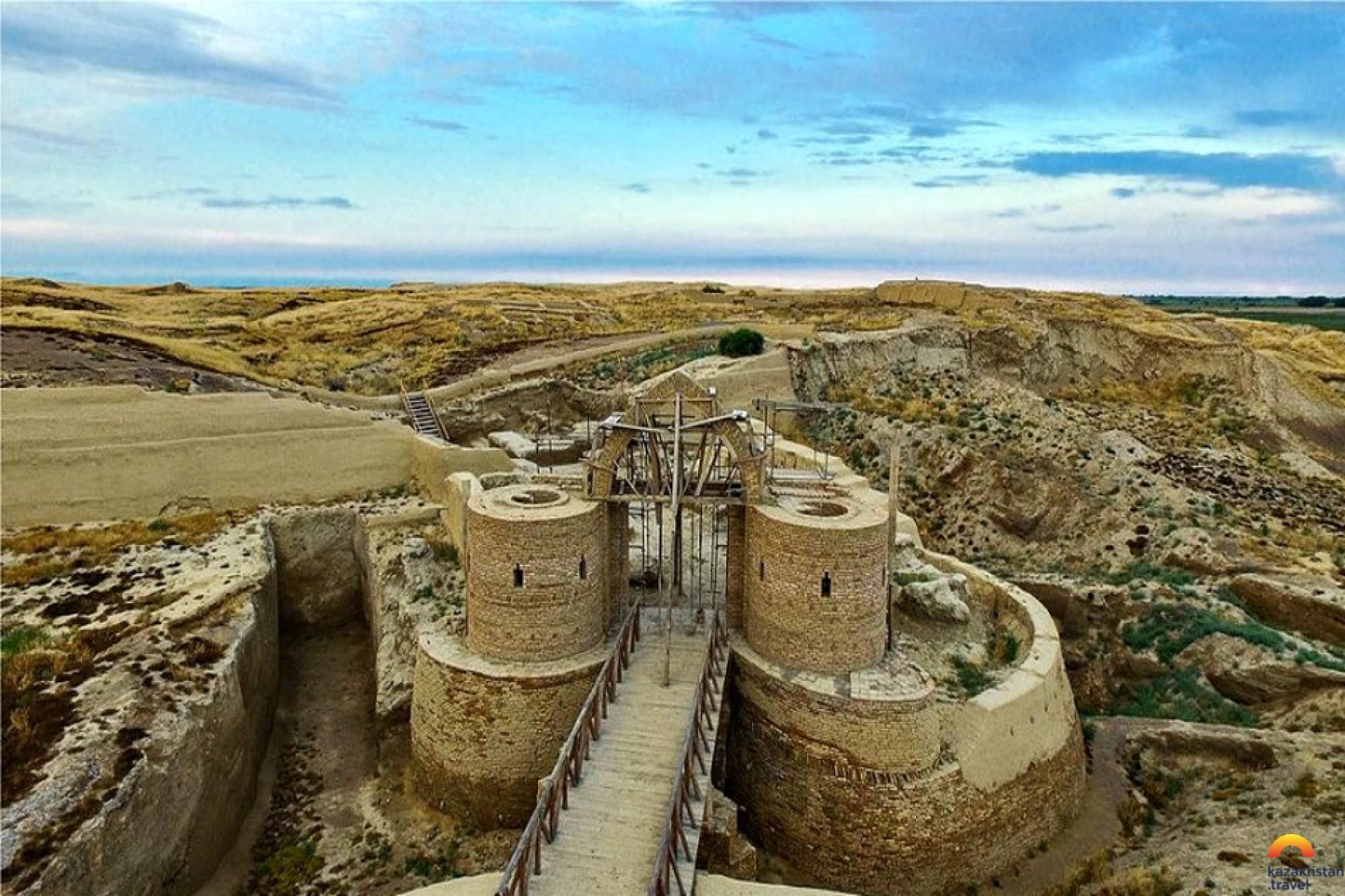
If you want to get acquainted with this place, it is better to be prepared in advance – to get information from the internet, to watch the movie called “The death of Otrar” or you can order an excursion with a professional guide.
A black beach of Lake Alakol
If you are tired of the regular golden sandy beaches that are everywhere, then it’s high time to get acquainted with the black pebble beach of the Lake Alakol, which is in the south-west of Kazakhstan. The lake has not only an unusual coastline, but also healing powers as well. The black beach attracts people with common cold and skin diseases, nervous breakdown, and all those, who love meditations. Even Soviet cosmonauts used to come to the lake after their flights to get rehabilitated here.
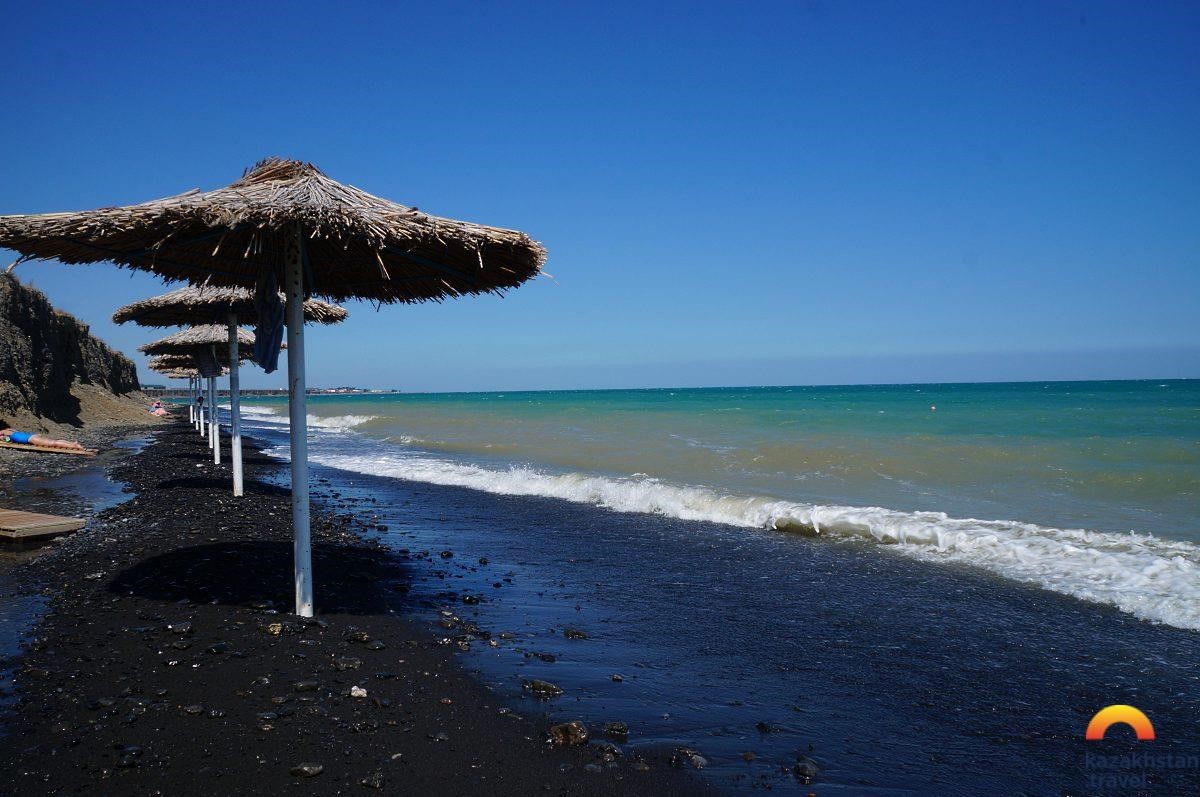 Alakol Nature Reserve was established here to preserve rare types of birds, so you can find famous silver bass in its waters. If you come to the lake at the beginning of May, you can join the many bird watchers that come for the “Wings of Alakol” festival. This event attracts not only bird watchers but also journalists, yoga practitioners, and musicians. This is how a season on Alakol begins. Further is summer - a time of the sun, swimming and water entertainments. In autumn, there is another festival celebrated on the first weekends of September – “Okunkol”, where recreational fishermen catch the famous silver bass.
Alakol Nature Reserve was established here to preserve rare types of birds, so you can find famous silver bass in its waters. If you come to the lake at the beginning of May, you can join the many bird watchers that come for the “Wings of Alakol” festival. This event attracts not only bird watchers but also journalists, yoga practitioners, and musicians. This is how a season on Alakol begins. Further is summer - a time of the sun, swimming and water entertainments. In autumn, there is another festival celebrated on the first weekends of September – “Okunkol”, where recreational fishermen catch the famous silver bass.
The first and the biggest cosmodrome
You may be surprised to know that the world’s first and biggest cosmodrome is Baikonur, which is in the Kyzylorda Province of Kazakhstan. Till 2050, cosmodrome is leased to the Russian Federation, but legally is owned by Kazakhstan and tour companies of the country can organize tours to rocket and satellite launches. Don’t you want to visit the place, where the first successful flight to space was launched? Indulging in the atmosphere of the space center is worth visiting!
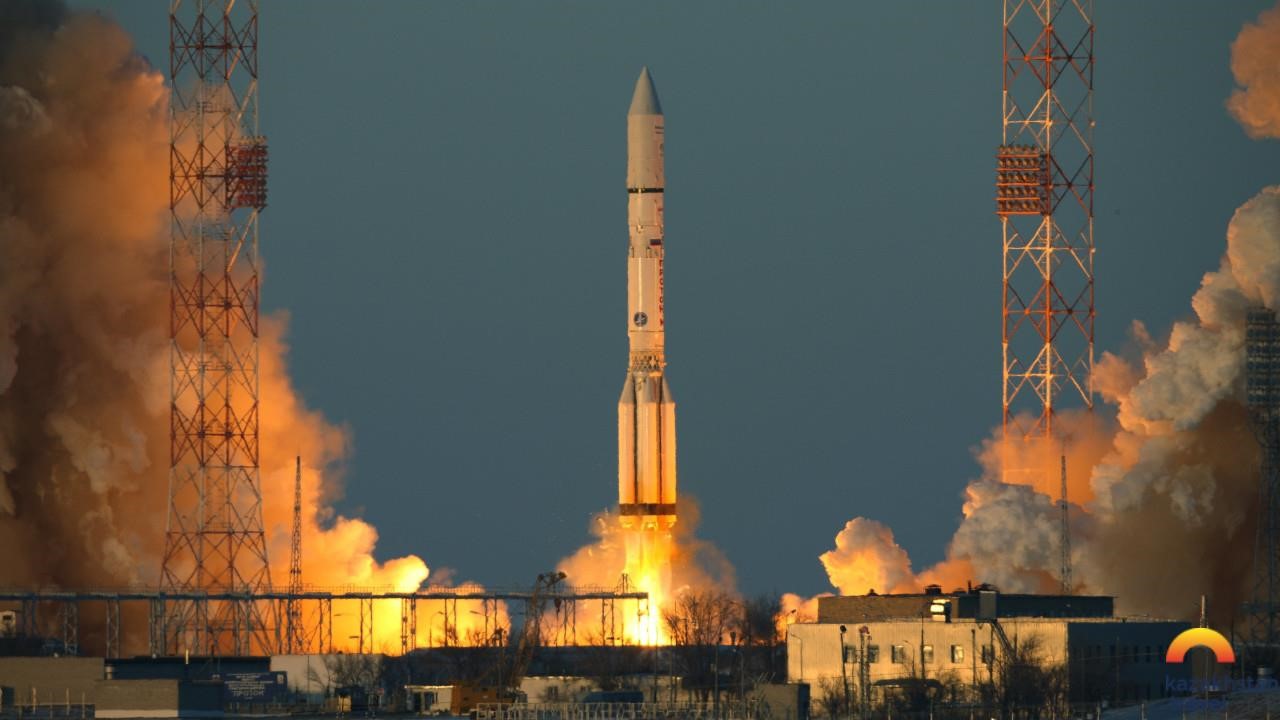
Delicious Kazakh cuisine
Another thing that you cannot ignore is a gastronomic delicacy of Kazakh cuisine. Many of you may find them surprisingly pleasant and quickly come to get an understanding of what we actually eat here in Kazakhstan. With that being said you should know that Kazakh people eat only healthy and natural food, and a lot of dairy products.
Nowadays, gastronomic tourism is becoming more and more popular in our country, and you won’t find such a variety of national cuisines and diverse flavors anywhere in the world. This is due to 135 nationalities that live in Kazakhstan. But the main highlight will always be the Kazakh cuisine that is based on the traditions of the Great steppes nomads. These delicious, healthy and “clever” food of the nomads are becoming very popular among travelers these days..
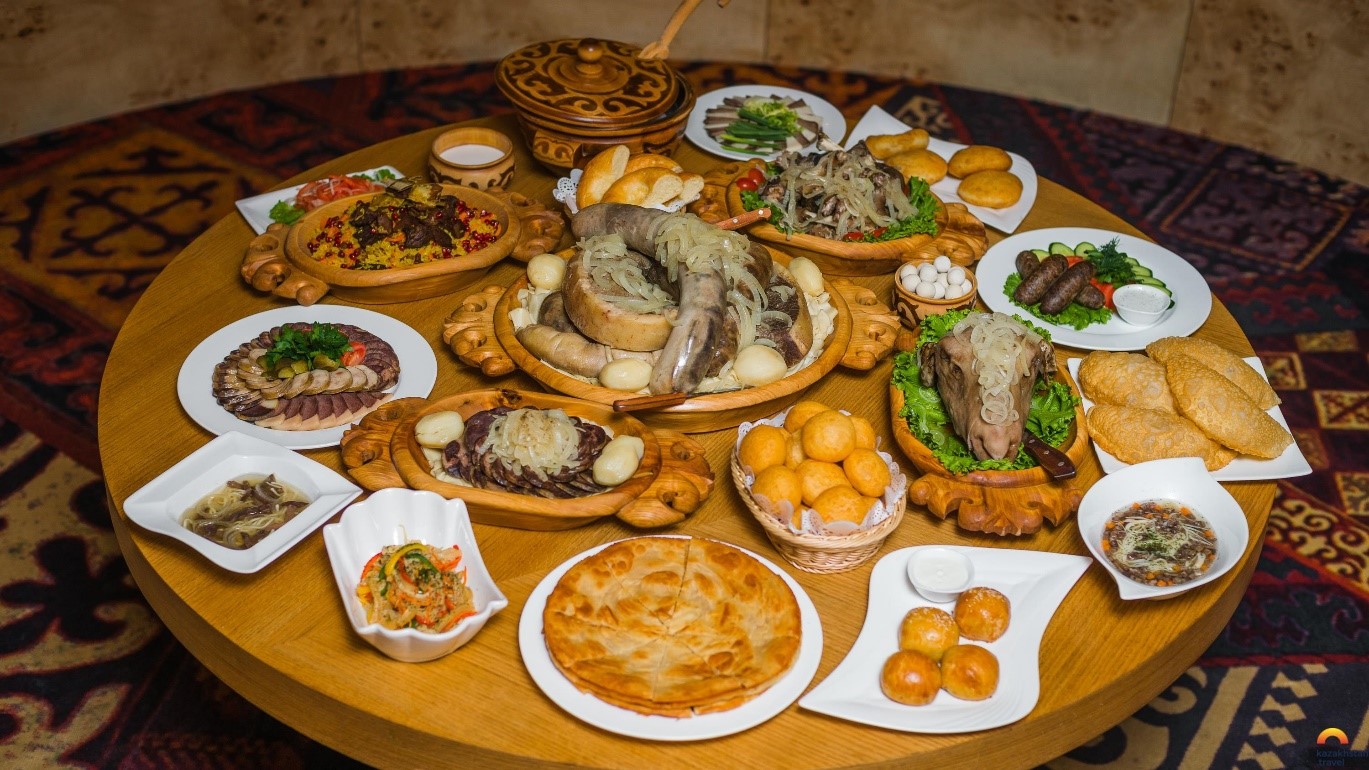
You can try famous Kazakh people dishes like beshbarmak (boiled meat with dough slices), baursaqs (fried puffy bread), qazy (horse meat sausage), irimshik (fat crumbly cottage cheese) in many cafes, and restaurants. But it will be more interesting to try national cuisine in the ethno-auls (villages). Guests are especially invited to try the many unique delicacies, which are made according to the recollected recipes. They will also demonstrate for you how these dishes are cooked and tell you the history in detail behind the legends and unusual stories about these dishes.
Welcome to beautiful and hospitable Kazakhstan – the modern country that preserved its ancient traditions!
- It’s best to start from these cities to get a better understanding of Kazakhstan.
- 5 unexpected reasons to visit Kazakhstan
- Health resorts in Kazakhstan
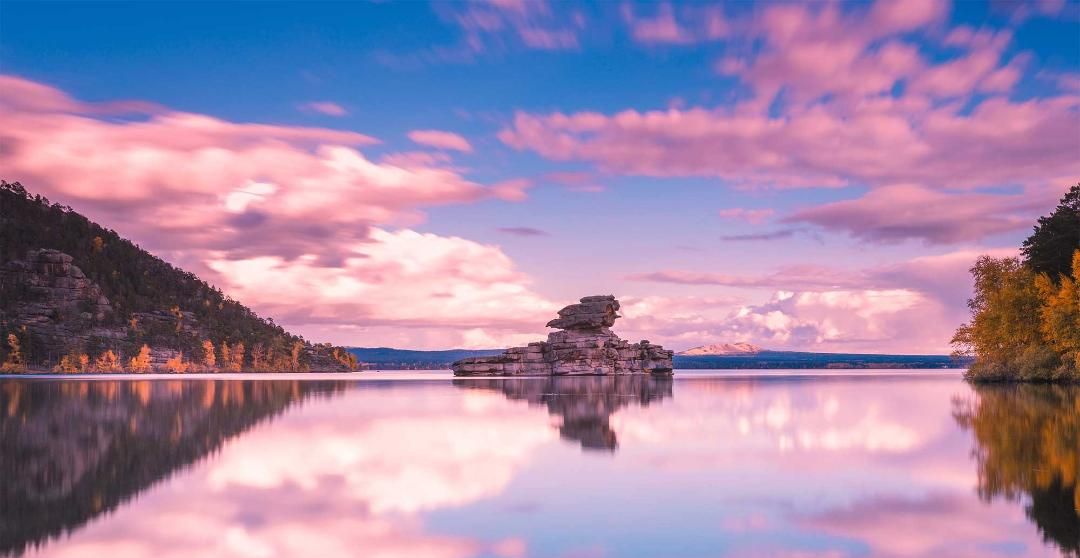
The unique nature of Kazakhstan startles. It dazzles a traveler with the grandeur of vast steppes and gold domes of mosques, blue surface of Lake Balkhash and modern buildings of Astana. The cities of the Great Silk Road and the Baikonur cosmodrome, all those represent Kazakhstan. Occupying an advantageous geographical position and being in the center of the Eurasian continent, the nature of the country is a symbiosis that has absorbed the brightest nature features from both parts of the continent.
For one part, there are rapidly developing cities with modern buildings, on the other part there is the pristine nature of Kazakhstan, deserts, ancient cities and beautiful alpine-like sceneries. Here you can get acquainted with “yurts” (houses of nomads), drink “kumys” (mare's milk), taste amazing dishes of national cuisine, breathe in the healing air, and contemplate an outstandingly beautiful mountain landscapes. For example, the high mountain cluster of Kazakhstan can be called one of the most fascinating ones.
Due to the coronavirus pandemic, domestic tourism is developing more rapidly in Kazakhstan, which resulted in opening of new locations and facilities. Regardless of attraction to outdoor activities, mountain routes, horseback riding tours and ancient historical sites, resort vacations will always be the most popular and demanded among tourists.
Nature is pretty much the main reason of travelers` interest in our country, though the architectural heritage also attracts a lot of attention.
Throughout the world, ecotourism is most actively developing near designated conservation areas: national parks and reserves. This is how the oases of wild nature are left untouched by civilization and even if any human activity is allowed it is strictly regulated.
Needless to say that Kazakhstan has a great number of unique conservation areas.
Thus, in the article, we describe a dozen unique places in Kazakhstan that look just as at the paintings of great artists. There you can take stunningly beautiful photos, so if you have a camera you certainly should use it during a trip.
Solo travelling is a new tourism trend resulting from the global pandemic. And Kazakhstan, considering its vast territory, low population density and an abundance of natural parks, is a unique place for solo travels when social distancing will be something unobtrusive and natural.
How to get a Kazakhstan visa?
Brief information about the documents that a tourist must have during his tourist trips and in preparation for them (separately for domestic and foreign tourists).
Foreign citizens enter and leave the Republic of Kazakhstan through checkpoints on the state border using foreign passports or documents replacing them, if they have Kazakhstan visas (if required).
Effective January 1, 2022, Kazakhstan resumed visa-free regime for citizens of 54 countries.
Foreign citizens can visit Kazakhstan with tourist, private and short-term business purposes under visa waiver. Business trips may include meetings, negotiations, contracts conclusion, as well as participation in the conferences and forums.
Pay attention. Within the framework of visa-free travel, foreigners are prohibited from engaging in missionary, labor or other paid activities in Kazakhstan. Any installation and repair work are also prohibited. Visa is required for such purposes of visit. More information can be found here.
How to apply for a Kazakhstan visa?
For foreign citizens who require a visa to Kazakhstan, today there are two options for obtaining it:
Option 1
Visas are issued by the Ministry of Foreign Affairs of the Republic of Kazakhstan, foreign agencies and consular posts of the Ministry of Foreign Affairs of the Republic of Kazakhstan. In the absence thereof, by specially authorized representatives of the Republic of Kazakhstan.
Multiple visas can be issued to foreigners at the request of host organizations.
Option 2. E-visa
As for March 2020, citizens of 105 countries have the opportunity to apply for an electronic tourist visa, citizens of 18 countries - for medical treatment and business visas.
An electronic visa (for business, tourist and medical treatment purposes) is issued on the basis of a valid invitation from the Kazakh side. In order to get this invitation, please contact your receiving party (in the case of a tourist visa - a tour operator or a travel agency based in Kazakhstan). The invitation is issued within 5 business days, after which you receive the 13-digit invitation number, which must be further used to apply for an e-visa on www.vmp.gov.kz.
Visa categories:
- A tourist visa (category B12) is a single-entry visa valid for up to 90 days and provides the right to stay in the Republic of Kazakhstan for no more than 30 days.
- A business visa (category B1) is a single-entry visa valid for up to 90 days and provides the right to stay in the Republic of Kazakhstan for no more than 60 days.
- A business visa (category B2-B3) is a single-entry visa valid for up to 90 days and provides the right to stay in the Republic of Kazakhstan for no more than 30 days.
- A medical treatment visa (category C12) is a single-entry visa valid for up to 180 days and provides the right to stay in the Republic of Kazakhstan for no more than 90 days.
Foreigners can enter/leave the territory of the Republic of Kazakhstan using a valid electronic visa only at checkpoints at international airports of the cities of Astana and Almaty. You must have a printed e-visa to be presented at the airport-check.
You can get additional information on the website of the Ministry of Foreign Affairs of the Republic of Kazakhstan or on the Visa-migration portal www.vmp.gov.kz.
The basis for issuing Kazakhstan visas and extending their validity are:
The grounds for issuing entry visas must be consistent with the purpose of stay. Thus, those arriving in Kazakhstan at the invitation of friends and relatives, that is, for private purpose, as well as those arriving for business, studying or tourism purposes, cannot be employed in Kazakhstan, and engage in other activities not related to the purpose of entry indicated on a visa, except as provided for by legislative acts of the Republic of Kazakhstan.
The category and types of visas, the procedure of their issue, as well as the reduction and extension of their validity are determined by the Ministry of Foreign Affairs of the Republic of Kazakhstan and the Ministry of Internal Affairs of the Republic of Kazakhstan in coordination with the National Security Committee of the Republic of Kazakhstan.
Foreigners traveling through the territory of Kazakhstan in transit to visa exempt countries are required to have a transit visa of Kazakhstan.
Passing through the territory of the Republic of Kazakhstan in transit by vehicles, including those engaged in international transportation of goods, must follow only roads open to international traffic.
Do I need to register with the migration service after arrival?
Since 2020, according to the Law signed on December 30, 2019, the compulsory registration of foreigners staying in Kazakhstan for up to 30 days has been canceled. Nevertheless, the receiving party remains obligated to notify the migration service of the arrival of a foreign guest within three business days from the moment of crossing the border.
Notification of the arrival can be done online, through www.vmp.gov.kz.
The service is free and has been provided by the Ministry of Internal Affairs since 2014.
If a foreign citizen stays in Kazakhstan for more than 30 days
When a foreign citizen stays in Kazakhstan for more than 30 days, the receiving party (hotels, hostels, rental apartments, medical institutions and other legal entities and individuals) must issue a temporary residence permit (kazakhstan registration).
Please note that registration of foreigners and notification of the arrival of foreigners in Kazakhstan are two separate duties that are now assigned to the receiving party.
Information system «eQonaq»
One of the main tasks in modern realities is digitalization and widespread information systems employment to facilitate the tourists' stay processes. A unified tourist registration information system "eQonaq" (eHotel) analyzes the tourist flow and improves the migration control. Within the 2019-2025 tourism development program the Ministry of Culture and Sports jointly with the Ministry of Internal Affairs and National Security Committee have started the system development and implementation.
The system was integrated with the Ministry of Internal Affairs of the Republic of Kazakhstan information system service "Migration Police" through a SmartBridge integration portal.
The system has 6 main tasks:
- Tourist climate improvement;
- Creation of accommodation places register;
- Tourist registration automation;
- Improved migration control;
- Creation of tourist fee infrastructure BedTax;
- Tourism quality improvement services.
The system assists with analytics of tourist flows within the country. It is easy to know which hotels are chosen and in which region. Similar digital platforms and applications have operated around the world, improving the quality of tourism services and attractiveness of domestic hotels.
Specialized accommodation places (hotels, hostels, recreation centers) that are registered in the system are also available on the tourist portal kazakhstan.travel, where the tourists can make a hotel reservation, and the reservation itself goes to the eQonaq system personal hotel account. The system is capable to recognize the passports of over 190 countries through a web camera or smartphone camera, 54% of the tourist registrations in the system are carried out through this function. To comply with the law on the foreign tourists stay terms, a migration guide is presented on the main page of the eQonaq personal account. In the real time, the system provides data on the tourist flow and portrait by region, which are available to privileged users, for non-registered users a digest with up-to-date tourist flow information on the main page has been published on a monthly basis.
The system has been put into operation in November 2020.
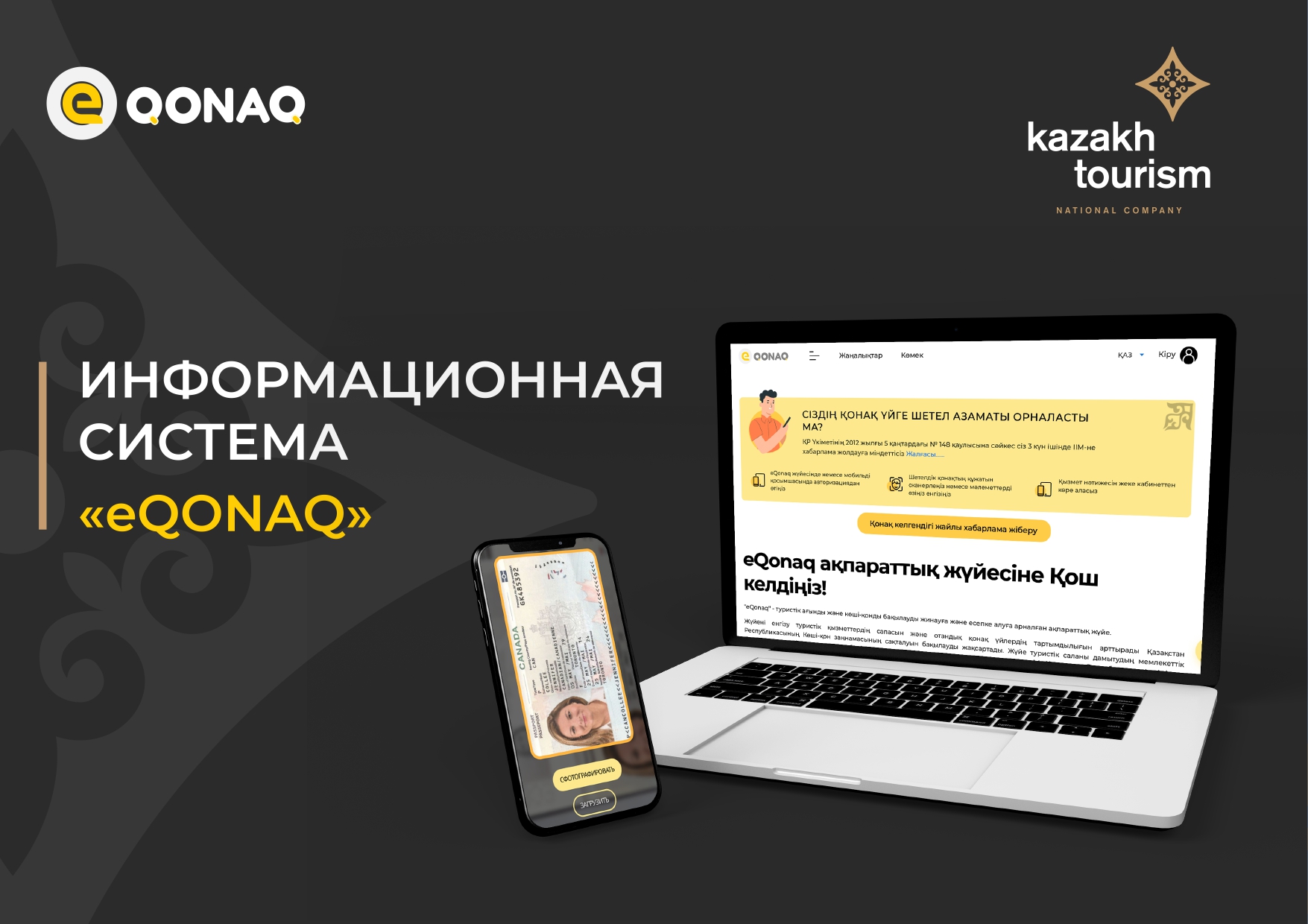
As of July 20, 2022, the system has registered 265,715 foreign tourists, arrival notices thereof were sent to the “Migration Police” system. Upon the tourist registration, notice receipt certificates are provided to the accommodation places (hotels, hostels, holiday homes, etc.) in the personal accounts or a mobile application.
Since the system operation start-up, work related to the technical support and implementation as well as the system development has been done at the accommodation places.
COVID-19 situation in Kazakhstan
From June 8, the requirements for confirmation of vaccination and PCR test when crossing the border for citizens of Kazakhstan and foreigners will be canceled. This decision was made by the Interdepartmental Commission on the Non-Proliferation of Coronavirus.
The Interdepartmental Commission decided to cancel:
- from June 8, 2022, a mandatory requirement for citizens of the Republic of Kazakhstan and foreigners to present documentary evidence of vaccination or revaccination against COVID-19 (passport/certificate/certificate of vaccination against COVID-19), and in their absence, a certificate with a negative test result for COVID -19 by PCR method when crossing the State Border of the Republic of Kazakhstan.
- a ban on the work of 12 temporarily closed automobile checkpoints on certain sections of the State Border of the Republic of Kazakhstan in seven regions of the country.
We encourage all travelers visiting Kazakhstan to stay up-to-date on the current situation in the country when planning their trip and stay aware of changing conditions during your stay in Kazakhstan.
Consult with your travel agent, hotel representatives, tour operators and local information centers for reliable information about Kazakhstan tourist destinations.